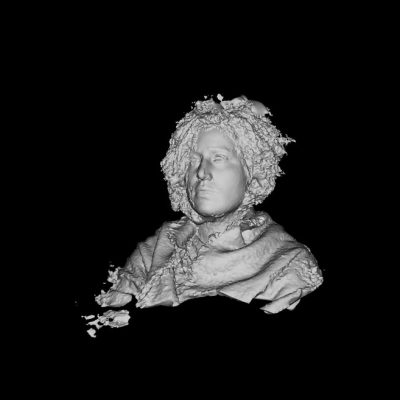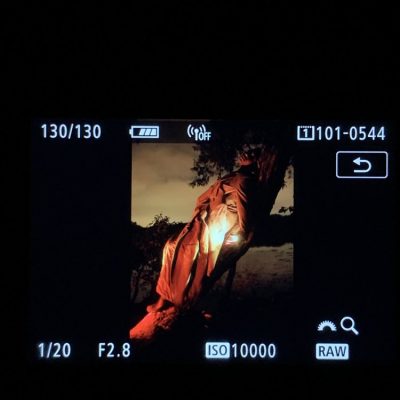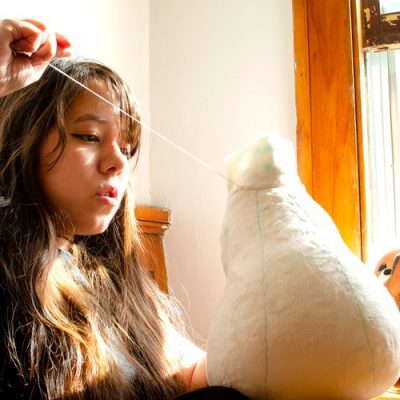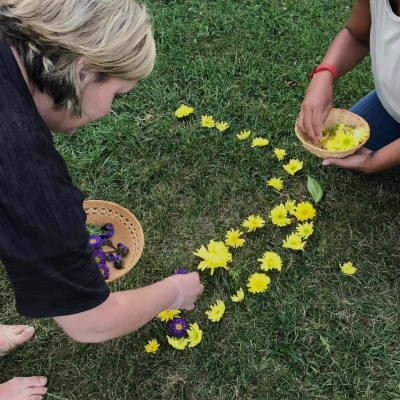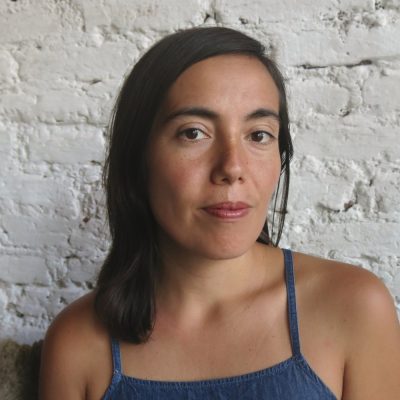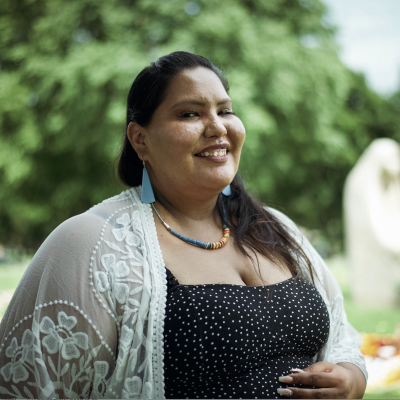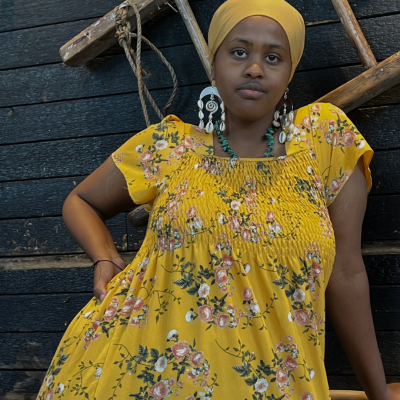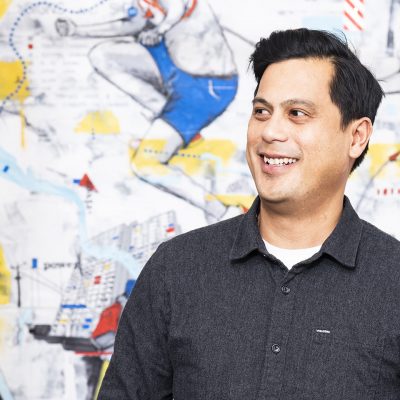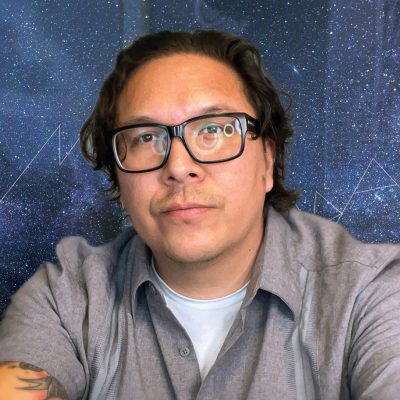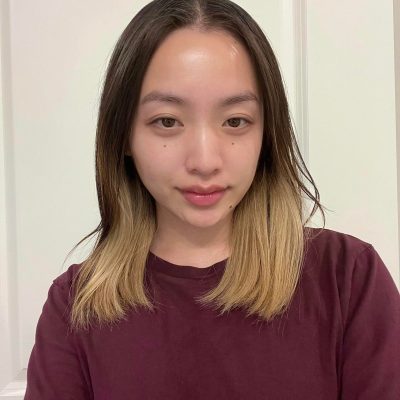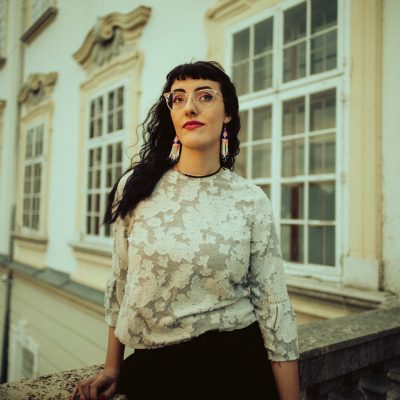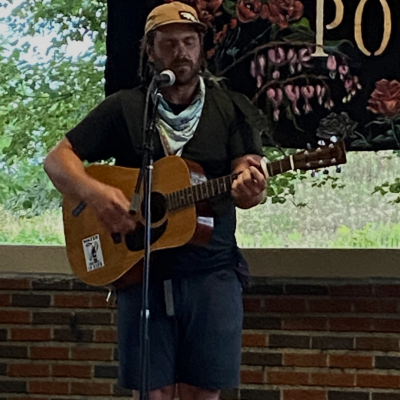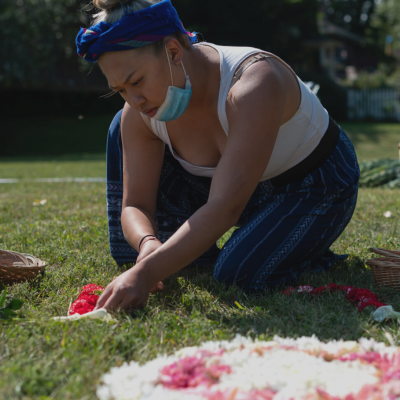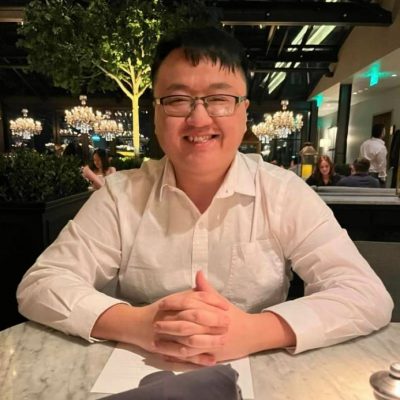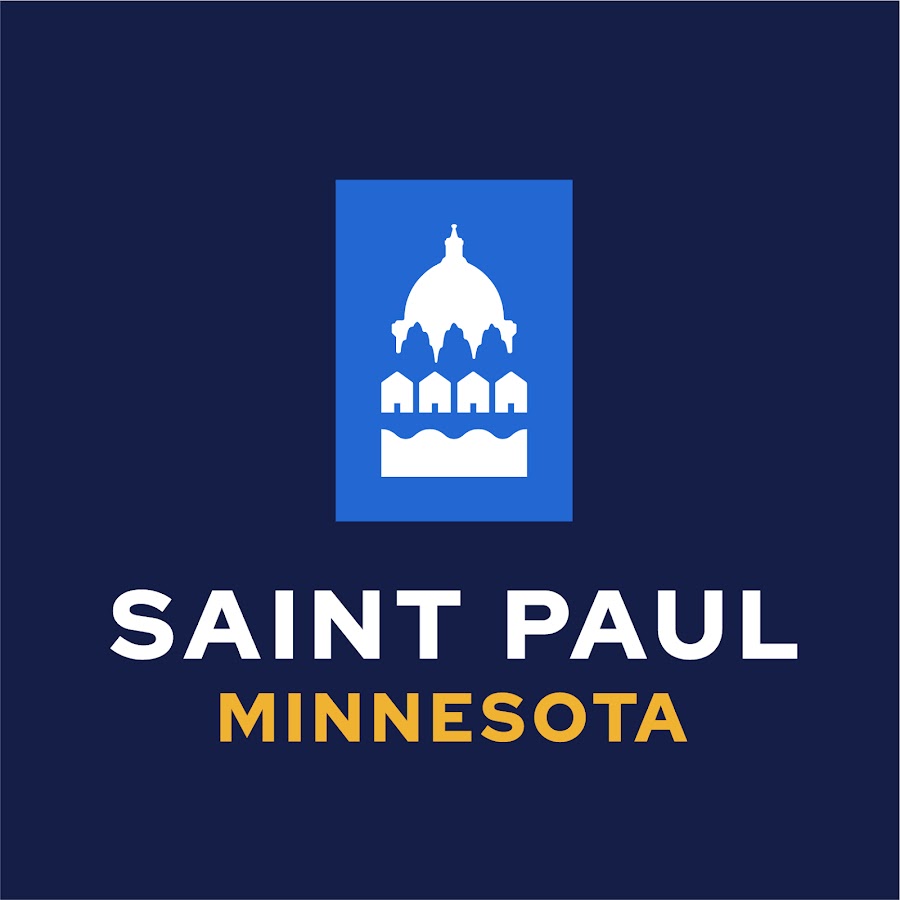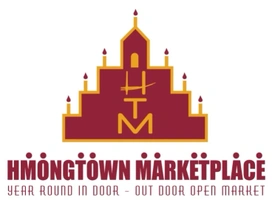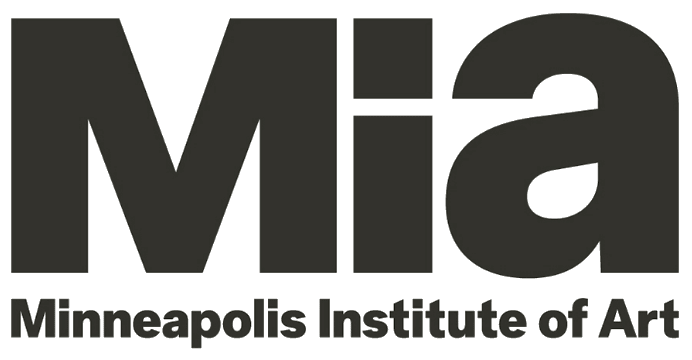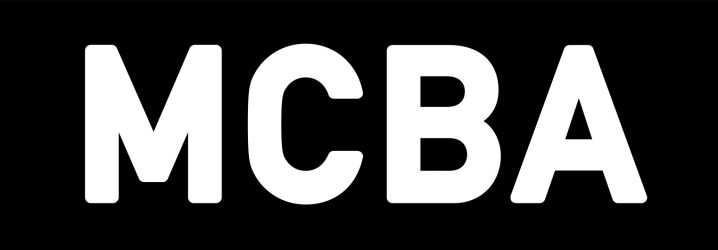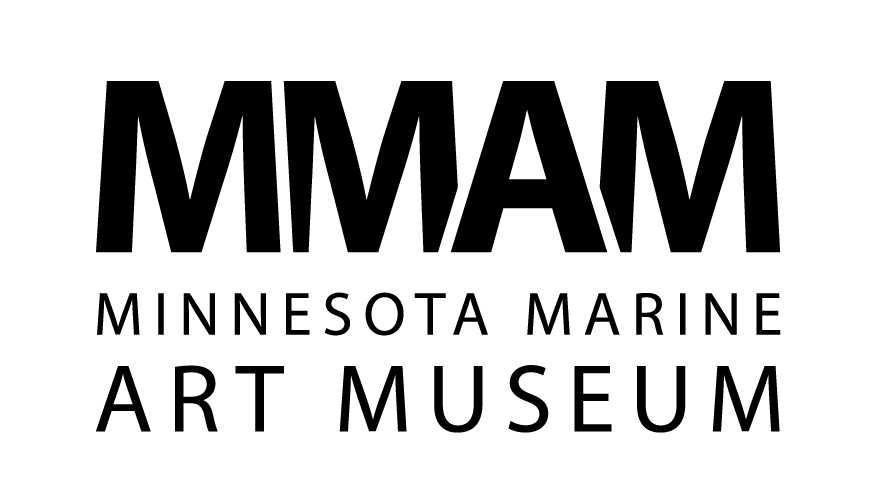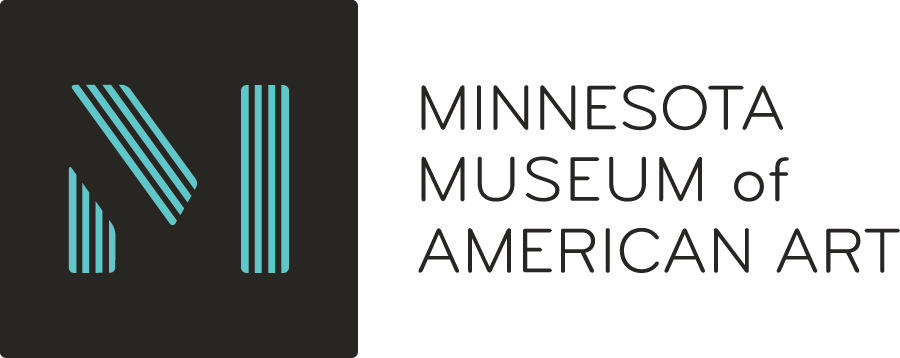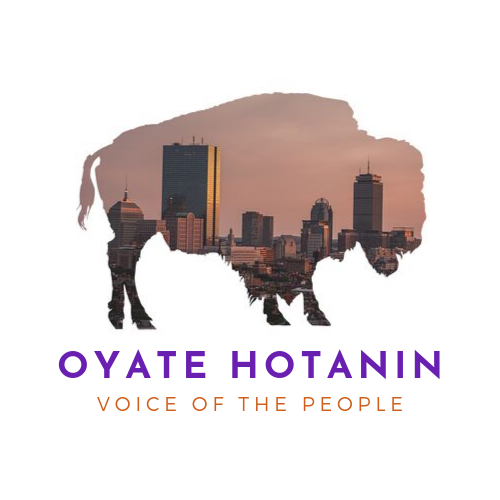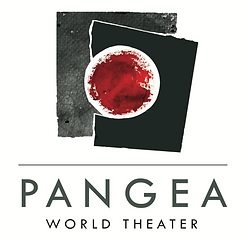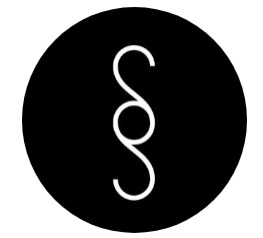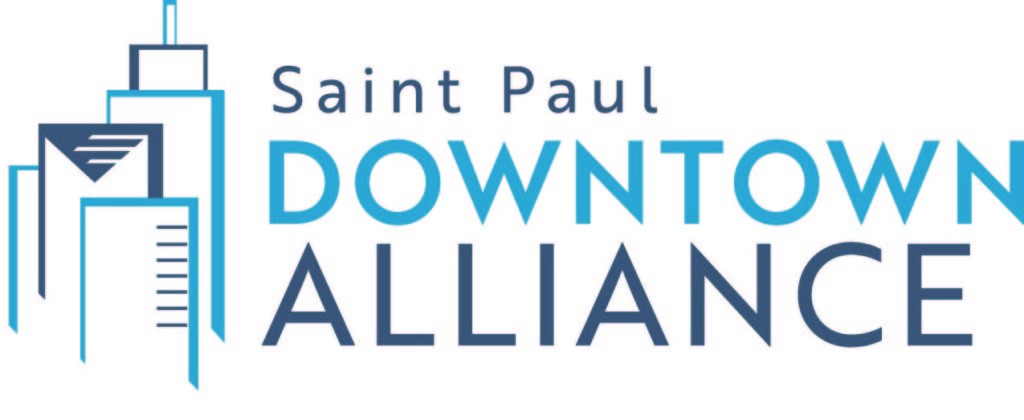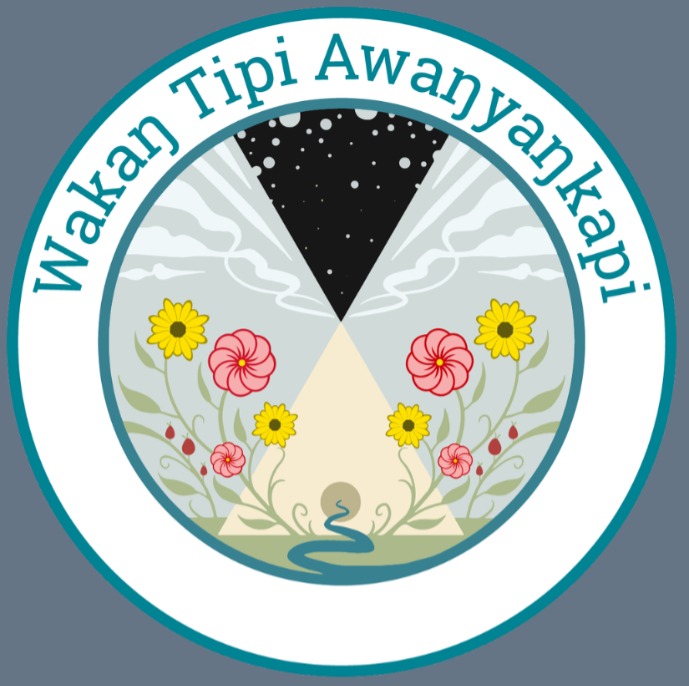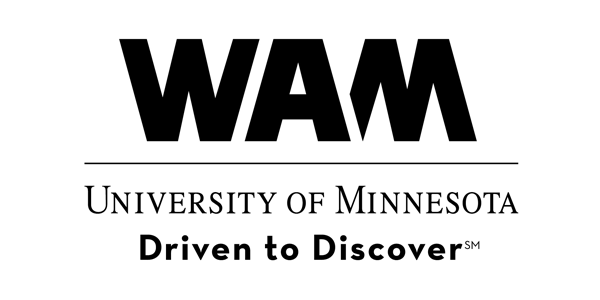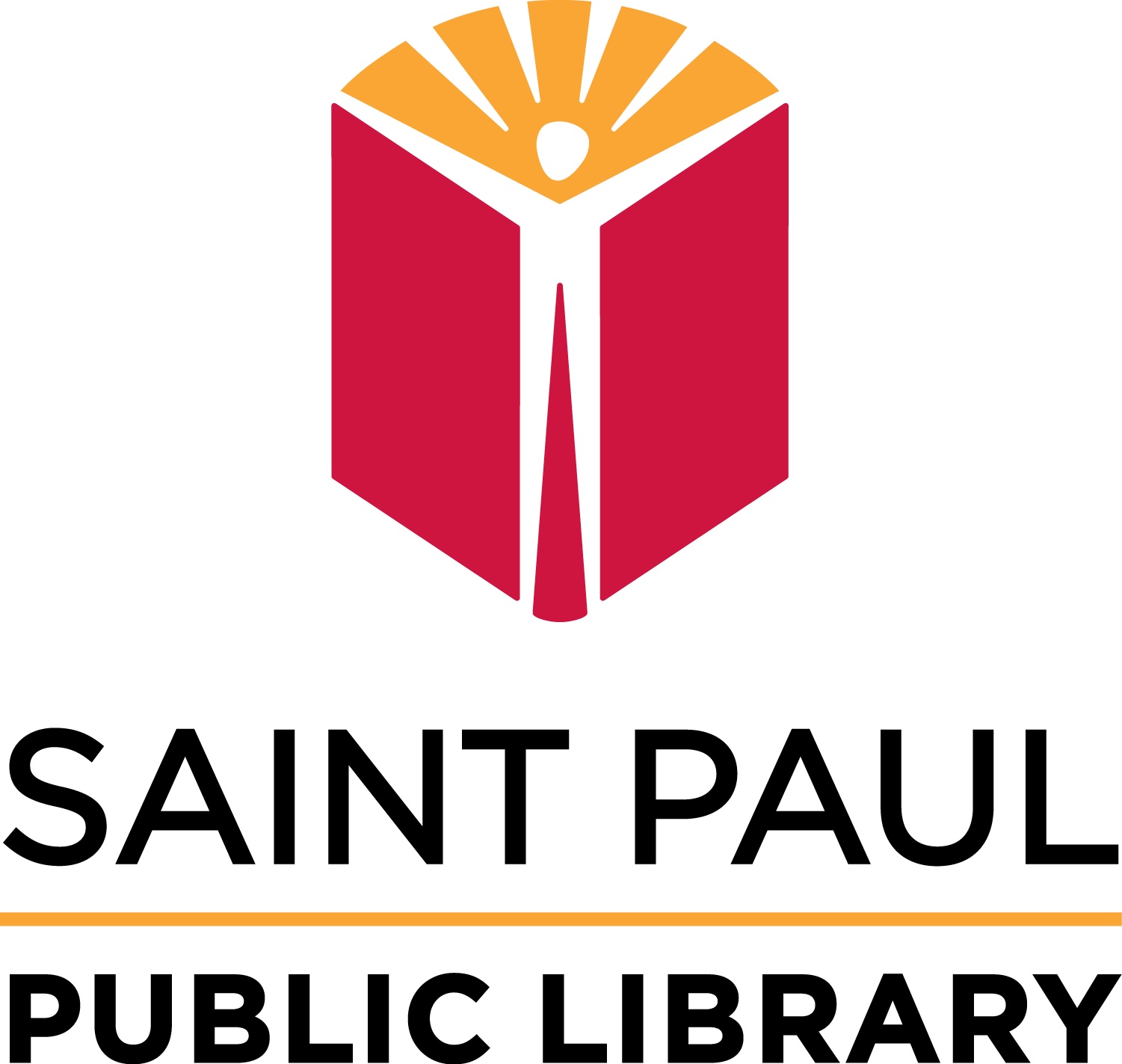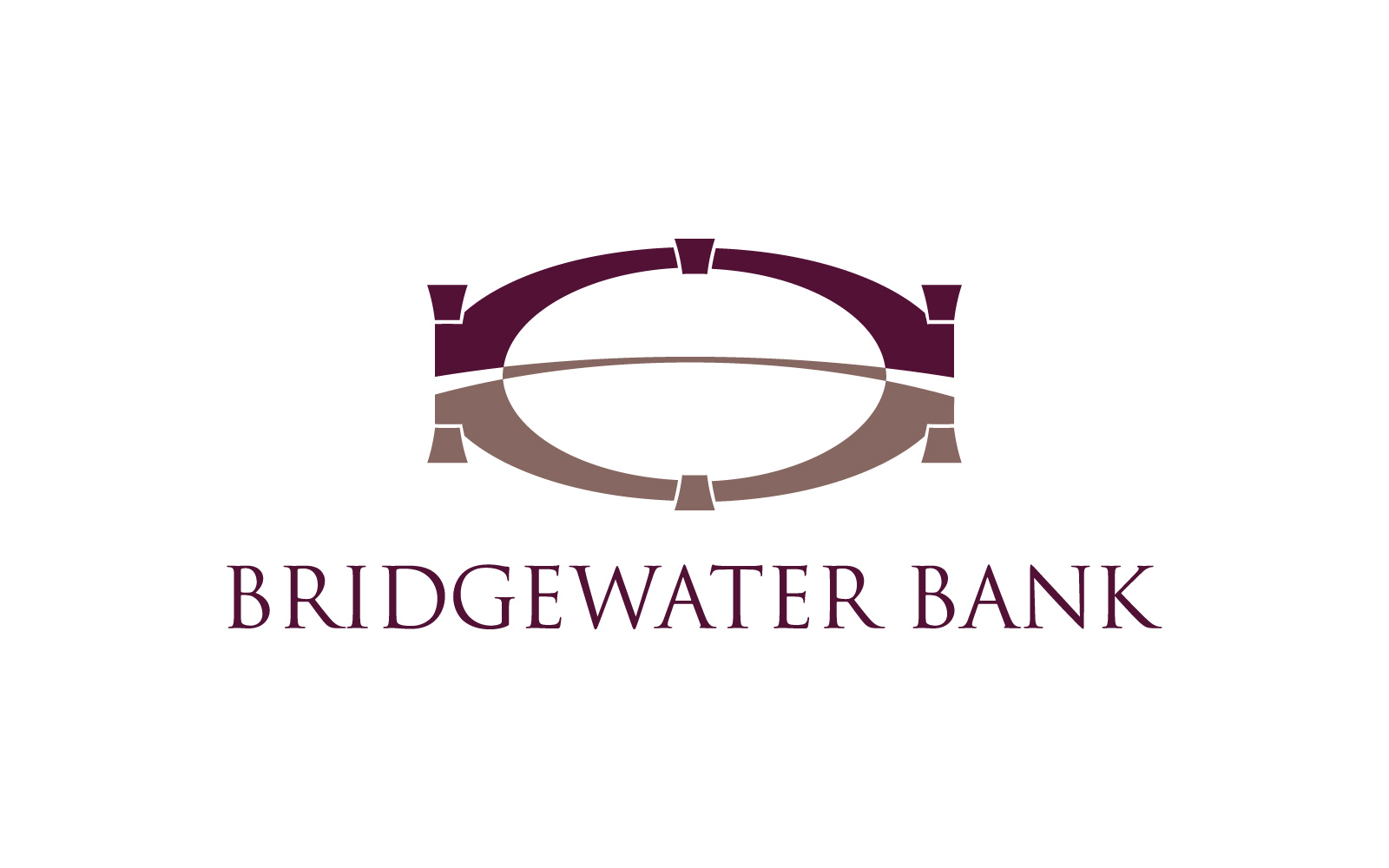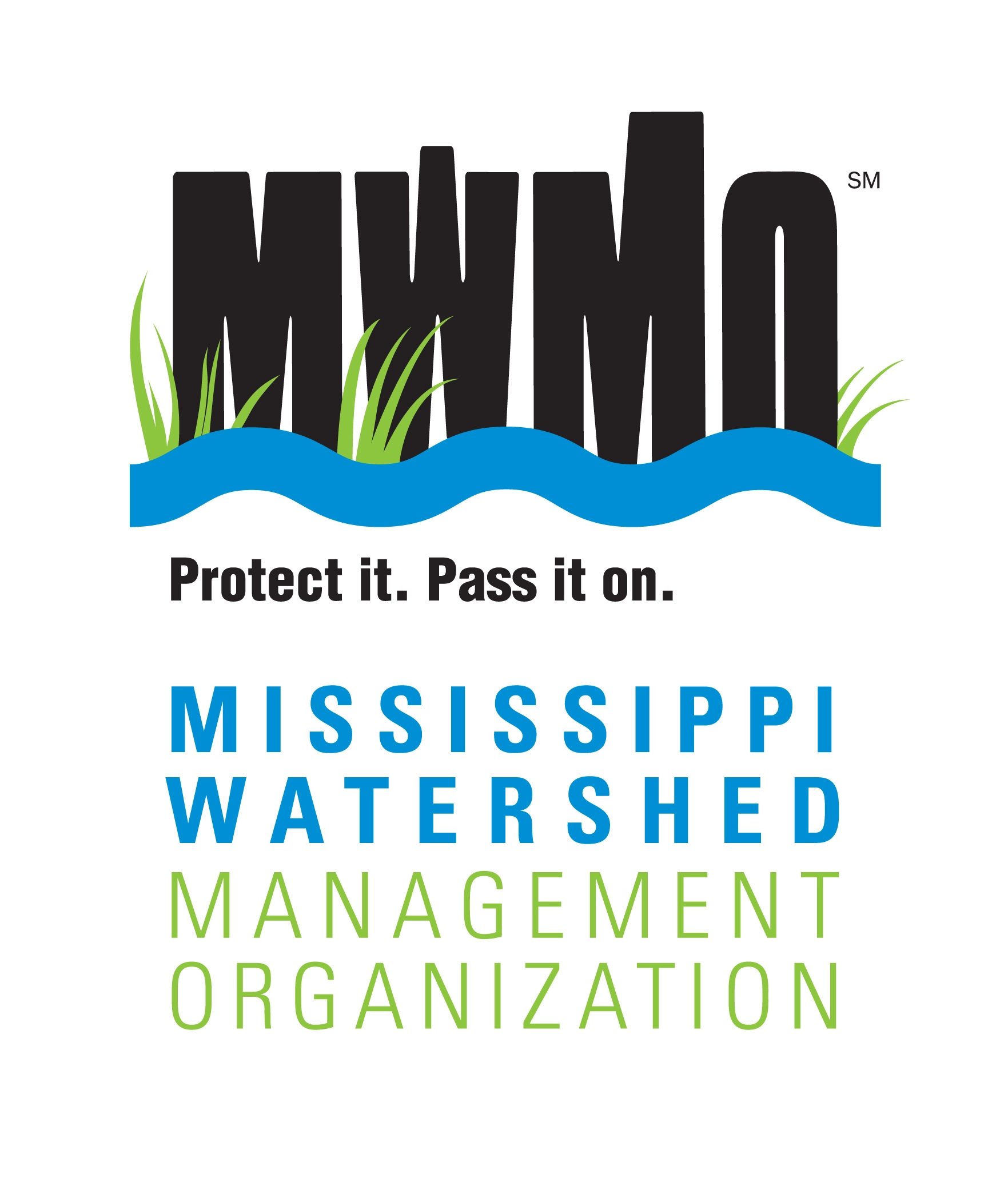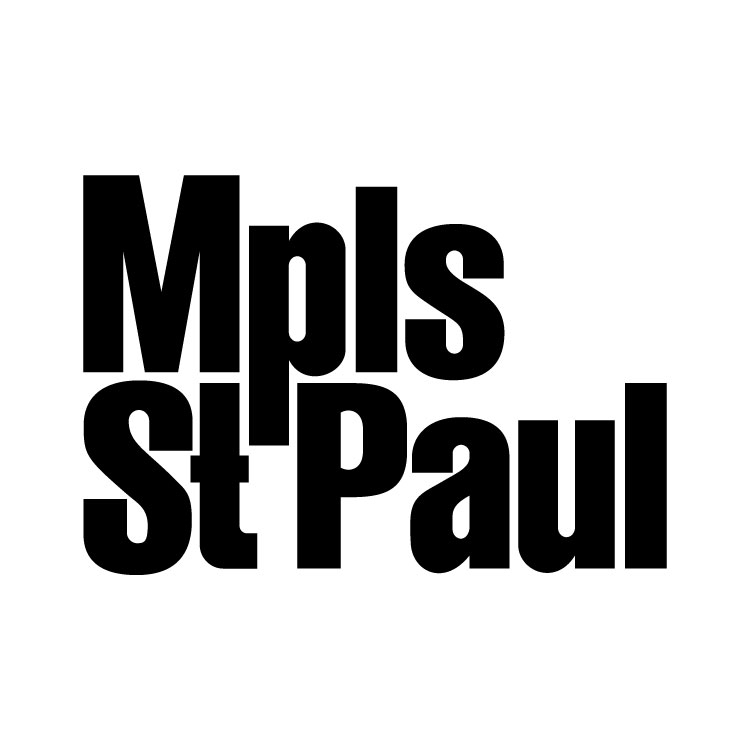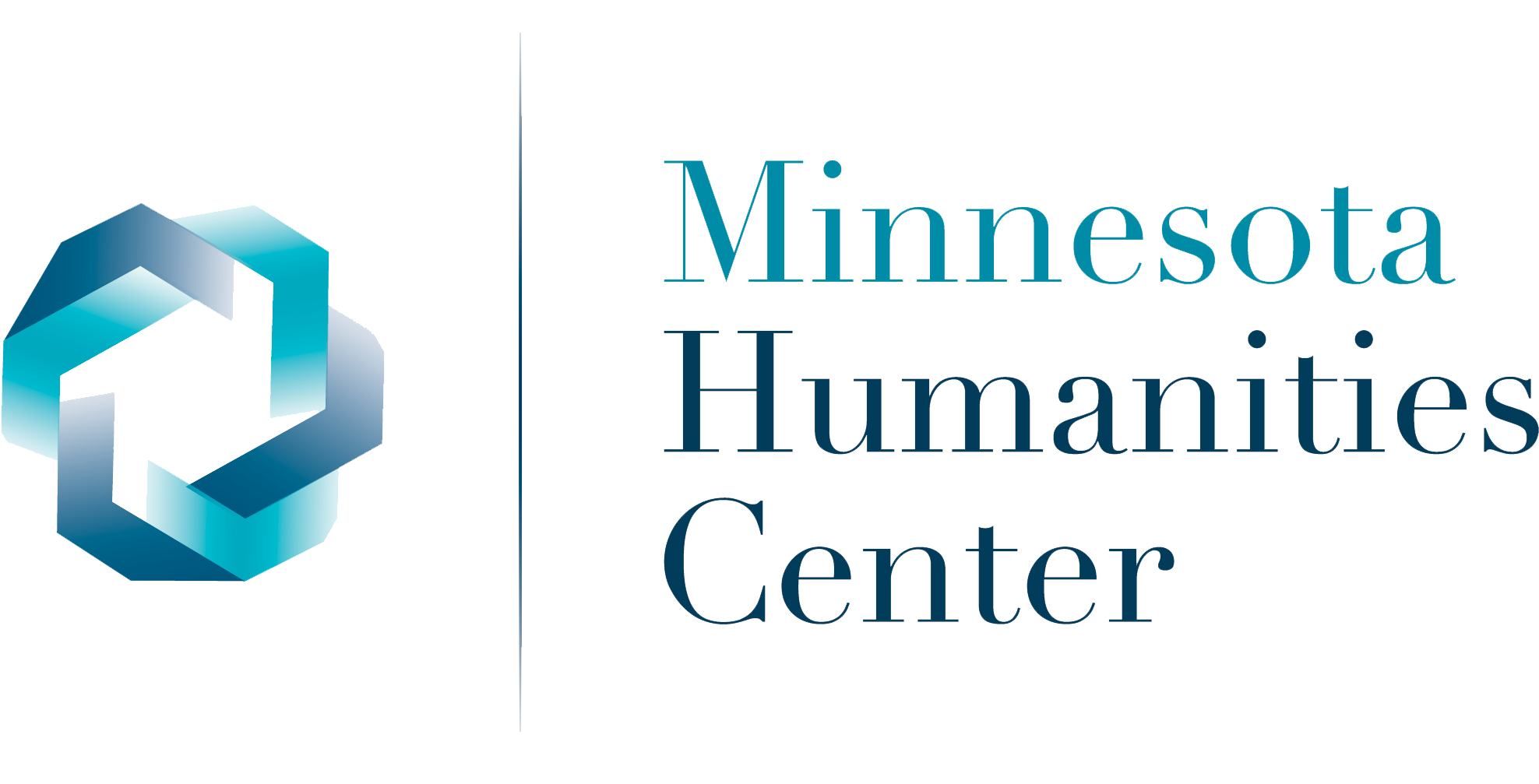
June 24 - September 16, 2023
About WAKPA
WAKPA means RIVER in Dakota language, a name that recognizes the great rivers that define our lives and landscapes in the Twin Cities, while also acknowledging that the Twin Cities inhabit Dakota land.
12 Weeks to Experience New Public Art Commissions, Other Projects, and Exhibitions by Minnesota-based Artists Installed in a Network of Locations across Saint Paul and Minneapolis
Triennial Theme: Network of Mutuality
How are we related? How do we overcome divisions? How can art help us to consider our mutuality with each other so that everyone thrives? Who is included in our networks of mutuality? How can art help us to envision new futures?
Wakpa Triennial presents art that explores broadly resonant concepts from Dr. Martin Luther King, Jr. to consider these questions at a pivotal moment in the histories of St. Paul and Minneapolis as we rebuild and revive our communities, places, and spirits, with artists leading the conversations.
How to Navigate the Wakpa Triennial
The Triennial provides a summer full of art activities to participate in as you traverse our cities from one art site to another or take in live programs throughout the run of the 84 days. There is much to see, do, experience, and return to, from our Opening Day Ceremony on Raspberry Island to our closing finale in Rice Park with Constellation: Video Storytelling. Spend a day in downtown Saint Paul, finding the art projects there and nearby on the River. Spend another day exploring the Longfellow neighborhood along Lake Street and visit Moon Palace Books, local coffee shops, and restaurants. And then move on to other places and catch events all summer long. You create your own path.
Call us at 651-290-0921 for questions and information or email pasp@publicartstpaul.org.
Wakpa Triennial Art Festival Introduction
Public Art Saint Paul (PASP) and its organizational partners present the inaugural Wakpa Triennial Art Festival in the Twin Cities from June 24 to September 16, 2023. New public space commissions along with gallery, museum, and alternative space projects, exhibitions, performances, and discussion programs feature more than 110 artists in an explosion of creativity across Saint Paul, Minneapolis, and several nearby cities. Ongoing projects and live programs will lead viewers to places they may not have known before or will see anew through the eyes of artists. Projects are mostly free of charge and publicly accessible. PASP and its partners welcome all to visit and participate.
This multi-site, dispersed exhibition of public space projects and gallery-based installations represents an unprecedented opportunity for Minnesota artists to take center stage, with the majority of artwork created by artists of color living in the Twin Cities. Visit locations around the Twin Cities, from downtown Saint Paul to downtown Minneapolis, neighborhoods on Lake Street, Franklin Avenue, University Avenue, Payne Avenue, and along the Mississippi River itself. Triennial art sites provide a network of connections to place and people, a webbed pathway that invites audiences to build mutuality with artists, history, land, culture, and each other.
The Wakpa Triennial Art Festival adopts the Dakota word “wakpa,” meaning “river” for its name. The Mississippi, the precious source of all life and settlement in this region, is called in Dakota “Wakpa Tanka” for Great River, and “Haha Wakpa,” for “River of Waterfalls.” The Minnesota River—Mnisota Wakpa--flows into the Mississippi at Bdote, a sacred site for the Dakota, whose ancestral and contemporary homelands the Twin Cities inhabit.
Rivers teach us about the networks of connections in watersheds that braid streams and tributaries through the land, uniting people and place across many miles in an ecological web. Rivers can act as boundaries or as avenues for exchange and travel, linking far flung places and people. They are places of renewal, nourishment, and respite. Art also provides those sustaining experiences.
Triennial Theme
Commissioned artists are responding to the theme, Network of Mutuality, in developing new art projects. This phrase from Dr. Martin Luther King, Jr.’s Letter from Birmingham Jail speaks to social justice, mutual care, interdependence, and inextricable links among humans.
King’s beliefs find resonance in other currents of philosophical thought. The Dakota philosophy of Mitákuye Owásiŋ, meaning “all my relations” or “all my relatives,” recognizes the connections among humans and with the more-than-human beings with whom we share the planet.
Triennial Context and Transformative Potential
With the traumas of a 2+ year pandemic compounded by the challenges following George Floyd’s murder in Minneapolis, the racial reckoning that is still underway, and the desire to rebuild our cities centered in equity, the Wakpa Triennial connects with the voices from all quarters that are urging us and promising to do better. Artists will lead in imagining the future that we want to build together on this land, along our great rivers, with everyone included. Triennial visitors from near and far will have opportunities to take part in critical conversations and unique experiences over 12 weeks in 2023.
Meditations on this year's Triennial theme: Network of Mutuality
Wakpa Triennial Artist Interviews
The Artists
Yasmin Abdi, Artist • Prairie|Concrete
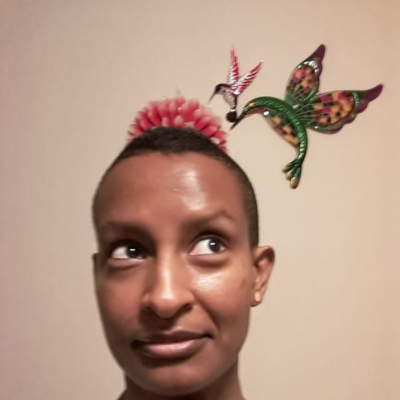
Yasmin Abdi (she/her) is a lover of stories and the languages that carry them, hiker who putters around in fields and gardens, occasional sketcher, and licensed speech-language pathologist in early childhood special education. She has collaborated with Annicha Arts in Census, 3600 Cuts, The Parking Ramp Project, and Rootspace. Re-patterning with Prairie|Concrete, she engages with ways of looking and perceiving, understanding and addressing, belonging and connecting, healing and growing into Self. She is currently re-learning how she embodies stories, principles, and love.
Project: Prairie|Concrete is an outdoor embodied movement project by lead artist, Pramila Vasudevan and the Aniccha Arts collaborative, commissioned by Public Art St. Paul (PASP). This project will bring visibility to plant cycles and growing practices through embodied listening and movement sessions with communities in St. Paul, Minnesota. The commission will unfold across 3 City of St. Paul Parks – Frogtown Farm, Hidden Falls Regional Park and Western Sculpture Park – through one rehearsal, 3 movement workshops, and one event at each site as part of the first Wakpa Triennial Arts Festival.
Locations of Prairie/Concrete Event Gatherings:
Western Sculpture Park, Sunday, August 6, 2 – 5 PM
Hidden Falls Park, Sunday, August 13, 2 – 5 PM
Frogtown Farm, Sunday, September 10, 2 – 5 PM
Sydney Acosta, Artist • Groundwork
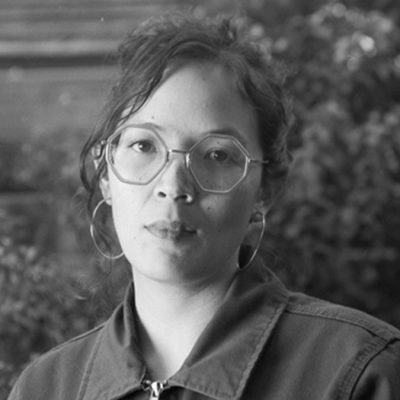 Sydney Acosta (b. 1987, San Antonio, TX) received her M.F.A. in painting and drawing from UCLA in 2021 and her B.A. from Sacramento State University in 2015. She has exhibited her work at the CASTLE gallery (2022), Onsen Confidential with Kristina Kite gallery hosted by Aoyama Meguro in Tokyo (2022), Root Division in San Francisco (2021), and Axis gallery in Sacramento (2019). She has been supported by the MacDowell Fellowship and residency, the Helen Frankenthaler Foundation, the LA Lakers emerging artist grant and the American Austrian Foundation. She has upcoming exhibitions at Human Resources Los Angeles, Michael Benevento gallery, Kristina Kite gallery, and DREAMSONG. She lives and works in Los Angeles.
Sydney Acosta (b. 1987, San Antonio, TX) received her M.F.A. in painting and drawing from UCLA in 2021 and her B.A. from Sacramento State University in 2015. She has exhibited her work at the CASTLE gallery (2022), Onsen Confidential with Kristina Kite gallery hosted by Aoyama Meguro in Tokyo (2022), Root Division in San Francisco (2021), and Axis gallery in Sacramento (2019). She has been supported by the MacDowell Fellowship and residency, the Helen Frankenthaler Foundation, the LA Lakers emerging artist grant and the American Austrian Foundation. She has upcoming exhibitions at Human Resources Los Angeles, Michael Benevento gallery, Kristina Kite gallery, and DREAMSONG. She lives and works in Los Angeles.
Location: Dreamsong
Project: Groundwork, presented by Dreamsong, is a group exhibition that takes terra firma as both subject and medium. A signifier of place, territory, and identity, a wellspring of life-giving nutrients, and a site of conflict over land-based indigenous rights and environmental protection, soil offers a rich prism through which the present may be both imagined and imaged. Through excavating diverse histories in artworks that take the ground as subject and material, the exhibition aims to encourage discussion about its preservation, its meaning, the claims that are made to it, and the sustenance, both spiritual and physical, that we derive from it.
All My Relations Native Writers Group • Green Roof Poetry on the Walker Hillside
Location: Walker Art Center
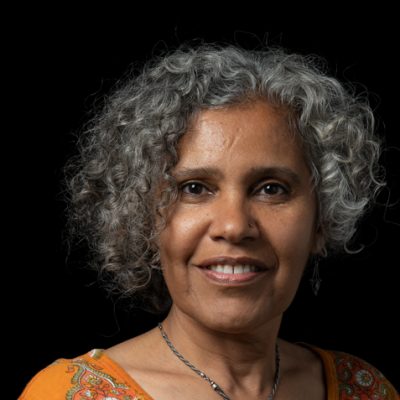
Hend Al-Mansour (Saint Paul)
hendalmansour.com
Hend Al-Mansour’s artwork reflects the female culture of her hometown of Hofuf, Saudi Arabia. She holds a degree in medicine from Cairo, Egypt, as well as Master of Fine Arts and Master of Art History degrees from the Minneapolis College of Art and Design and the University of St. Thomas, respectively. Al-Mansour's work is inspired by Islamic art and addresses gender politics in Arab communities. She creates screen prints featuring stylized figures, Arabic calligraphy, and Sadou and henna designs, and builds shrine-like installations using printed fabric. Recently, she has begun creating digital images and animations.
Project: Mural in the Creative Enterprise Zone for Chroma Zone Mural & Art Festival 2023
Dates: September 14, 15 & 16
Location: Creative Enterprise Zone (CEZ), a district centered on the Raymond-University neighborhood of Saint Paul: Click here for a Map of all the Murals in the CEZ.
Visit Chroma Zone for more event info.
Sam Aros-Mitchell, Performer • Prairie|Concrete
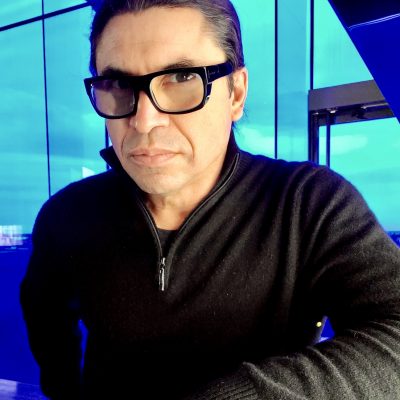 Sam Aros-Mitchell (he/him/his) is an enrolled member of the Texas Band of Yaqui Indians. As an art-maker, dancer, and scholar, Aros-Mitchell’s work spans the disciplines of performance, sound/light/scenic design, choreography, and embodied writing. Aros-Mitchell holds a Ph.D. in Drama and Theater from the joint doctoral program at UC San Diego/UC Irvine, an MFA in Dance Theatre from UC San Diego, and a BFA from UC Santa Barbara.. www.samarosmitchell.com
Sam Aros-Mitchell (he/him/his) is an enrolled member of the Texas Band of Yaqui Indians. As an art-maker, dancer, and scholar, Aros-Mitchell’s work spans the disciplines of performance, sound/light/scenic design, choreography, and embodied writing. Aros-Mitchell holds a Ph.D. in Drama and Theater from the joint doctoral program at UC San Diego/UC Irvine, an MFA in Dance Theatre from UC San Diego, and a BFA from UC Santa Barbara.. www.samarosmitchell.com
Location: Frogtown Farm, Hidden Falls Regional Park & Western Sculpture Park
Project: Prairie|Concrete is an outdoor embodied movement project by lead artist, Pramila Vasudevan and the Aniccha Arts collaborative, commissioned by Public Art St. Paul (PASP). This project will bring visibility to plant cycles and growing practices through embodied listening and movement sessions with communities in St. Paul, Minnesota. The commission will unfold across 3 City of St. Paul Parks – Frogtown Farm, Hidden Falls Regional Park and Western Sculpture Park – through one rehearsal, 3 movement workshops, and one event at each site as part of the first Wakpa Triennial Arts Festival.
Drew Arrieta, Artist • It’s the People
Drew Arrieta is a visual storyteller and artist whose work tells stories about resistance, reimagining our world and the magic of joy. His work shines a spotlight on people and their resilience. Photography is his primary medium because of its willingness to reveal truths and bare witness, making it the perfect medium to demonstrate humanity’s adaptability and strength.
Location: Hennepin Theatre District
Project: Hennepin Theatre Trust’s 2023-24 edition of It’s the People features large-scale photo banners along Hennepin Avenue in downtown Minneapolis. This public art initiative is inspired by the exceptional, everyday people whose experiences, contributions and stories create the unique vibrancy of our shared communities.
Larraja Austin, Artist • Flower Power VII
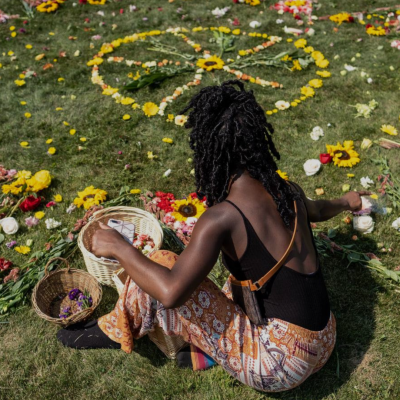
Flower Power artists, when you collect all our efforts together, we represent layers and decades of working for truth, goodness, peace, and gentle wisdom. We are young and old, each with a different story that brings us to a shared world vision. People and flowers are both powerful species on Earth. Flower Power has organically grown out of the Minnesota landscape, out of public demonstration and opposition to state violence, incarceration, and climate crisis. We are individuals trying to present a more compassionate world; our cut flower installations are like portraits that help us deal with complex and abstract problems of injustice. We dedicate a whole day to paying respect to the injustices served, the hardships suffered, and the joy that persists. It’s a time when we use our art and spend it as a community to change the course of past directions. We are different minds and yet of the same heart. We stand with humanity and the Earth as protectors of land and life.
Project: Flower Power VII
Saturday, August 5, sunrise to sunset
Indian Burial Mounds Regional Park
10 Mounds Boulevard, Saint Paul 55106
Oyate Hotanin, a Native-led arts, thought, and social justice organization, presents of Flower Power VII, an annual event aimed at helping us all to remember who we are, to work to eliminate our incarceration state, rescue our planet, and lead a worldwide movement of a billion good relatives, Flower Power centers on the creation of an ephemeral work of art, made from cut flowers. Over the course of a day, artists arrange the blooms in a mosaic-like pattern on the grass surrounding the sculpture, Sacred Bowl, by Ojibwe artist Duane Goodwin.
Location:
Saturday, August 5, sunrise to sunset
Indian Burial Mounds Regional Park
10 Mounds Boulevard, Saint Paul 55106
Alys Ayumi Ogura, Performer • Prairie|Concrete
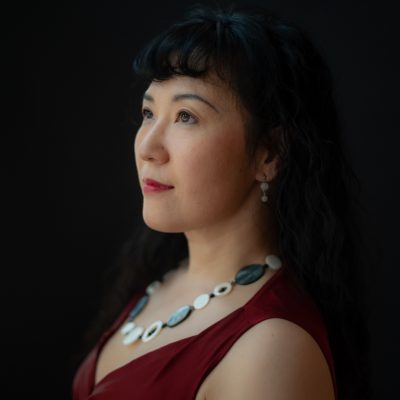
Alys Ayumi Ogura—from Japan—has been a Twin Cities-based storyteller, performance maker and performer since 2010. She has worked with about 40 artists—from both near and far—including Hauser Dance, Emily Johnson/Catalyst, Emily Gastineau, Kata Juhasz, Pam Gleason, Pramila Vasudevan, and Laurie Van Wieren. She has also toured with April Sellers’ ASDC and with Sarah LaRose-Holland’s KEDC. She has performed her improvisations and choreography in such casual venues as the St. Paul skyway and Mississippi riverbank, and at more formal venues, such as the Southern Theater and Walker Art Center.
Location: Frogtown Farm, Hidden Falls Regional Park & Western Sculpture Park
Project: Prairie|Concrete is an outdoor embodied movement project by lead artist, Pramila Vasudevan and the Aniccha Arts collaborative, commissioned by Public Art St. Paul (PASP). This project will bring visibility to plant cycles and growing practices through embodied listening and movement sessions with communities in St. Paul, Minnesota. The commission will unfold across 3 City of St. Paul Parks – Frogtown Farm, Hidden Falls Regional Park and Western Sculpture Park – through one rehearsal, 3 movement workshops, and one event at each site as part of the first Wakpa Triennial Arts Festival.
Teresa Baker, Artist • Groundwork
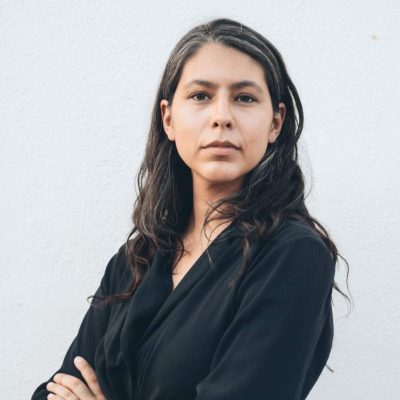 Teresa Baker (Mandan/Hidatsa, b.1985) currently lives and works in Los Angeles, CA. Through a mixed media practice combining artificial and natural materials together, Baker creates abstracted landscapes that explore vast space, and how we move, see and explore within them. The materials, texture, shapes, and color relationships are guided by Baker's Mandan/Hidatsa culture to explore how identity can relate to innate objects. Baker has had recent solo exhibitions at de boer, Los Angeles, Scottsdale Museum of Contemporary Art, Scottsdale, AZ; Pied-à-terre, San Francisco; Interface Gallery, Oakland; and The Art Museum of Southeast Texas, Beaumont, TX. Recent group exhibitions include Ballroom Marfa, Marfa, TX, Nerman Museum, Kansas City, KS, and Marin MOCA, Marin, CA. Baker is a 2022 Joan Mitchell Fellow, and was an artist-in-residence at Fogo Island Arts in Newfoundland in 2022. Baker was the 2020 Native American fellow at the Ucross Foundation in Ucross, WY, and has been an artist-in-residence at MacDowell in Peterborough, NH, and a Tournesol Award artist-in-residence at Headlands Center for the Arts, Sausalito, CA. Her work is in the public collections of Whitney Museum of American Art, Portland Museum of Art, and Forge Project, among others. Baker received her B.A. from Fordham University, and MFA from California College of the Arts.
Teresa Baker (Mandan/Hidatsa, b.1985) currently lives and works in Los Angeles, CA. Through a mixed media practice combining artificial and natural materials together, Baker creates abstracted landscapes that explore vast space, and how we move, see and explore within them. The materials, texture, shapes, and color relationships are guided by Baker's Mandan/Hidatsa culture to explore how identity can relate to innate objects. Baker has had recent solo exhibitions at de boer, Los Angeles, Scottsdale Museum of Contemporary Art, Scottsdale, AZ; Pied-à-terre, San Francisco; Interface Gallery, Oakland; and The Art Museum of Southeast Texas, Beaumont, TX. Recent group exhibitions include Ballroom Marfa, Marfa, TX, Nerman Museum, Kansas City, KS, and Marin MOCA, Marin, CA. Baker is a 2022 Joan Mitchell Fellow, and was an artist-in-residence at Fogo Island Arts in Newfoundland in 2022. Baker was the 2020 Native American fellow at the Ucross Foundation in Ucross, WY, and has been an artist-in-residence at MacDowell in Peterborough, NH, and a Tournesol Award artist-in-residence at Headlands Center for the Arts, Sausalito, CA. Her work is in the public collections of Whitney Museum of American Art, Portland Museum of Art, and Forge Project, among others. Baker received her B.A. from Fordham University, and MFA from California College of the Arts.
Location: Dreamsong
Project: Groundwork, presented by Dreamsong, is a group exhibition that takes terra firma as both subject and medium. A signifier of place, territory, and identity, a wellspring of life-giving nutrients, and a site of conflict over land-based indigenous rights and environmental protection, soil offers a rich prism through which the present may be both imagined and imaged. Through excavating diverse histories in artworks that take the ground as subject and material, the exhibition aims to encourage discussion about its preservation, its meaning, the claims that are made to it, and the sustenance, both spiritual and physical, that we derive from it.
Alisa Banks, Artist • Paper Is People: Decolonizing Global Paper Cultures
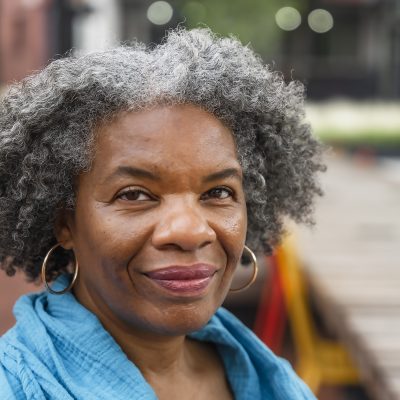
Alisa Banks (she/her) is a visual artist based in Dallas, Texas who investigates connections to contemporary culture, her Creole heritage, and the African diaspora through the lenses of home, terrain, and the body, using Southern Louisiana as a point of entry. Her sculptural artist books, mixed media work, and textile collages, often incorporate fibers and found materials and reference traditional craft forms. Alisa’s work has been exhibited in internationally, and is housed in private and public collections, including the Smithsonian Institution, the US Library of Congress, and The British Library.
Project: Paper Is People: Decolonizing Global Paper Cultures, co-curated by Tia Blassingame and Stephanie Sauer, offers a new definition of paper within a global and decolonial framework, opening up a conversation around what paper is across cultures today. In the Indigenous and oral cultures represented here, weavings, tapestries, and other handmade substrates act as vessels and embodiments of collective culture and memory. See paper samples and source materials, watch papermaking processes from source to finish, read interviews and watch videos from traditional practitioners, experience how contemporary artists are finding new applications for ancient technologies, and participate in a variety of workshops and talks. Join us at mnbookarts.org/paper-is-people
Location: Minnesota Center for Book Arts
April 14 – August 12, 2023
Reception: Thursday, June 22, 7–9pm
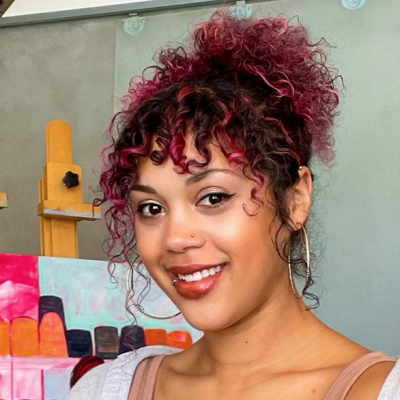
Leslie Barlow (Minneapolis)
lesliebarlowartist.com
Leslie Barlow is a visual artist, educator, and cultural worker from Minneapolis. Barlow believes art and art making is both healing and liberatory, through the power of representation, witnessing and storytelling. Barlow earned her BFA in 2011 from the University of Wisconsin-Stout and her MFA in 2016 from the Minneapolis College of Art and Design. In addition to her studio practice, Barlow has taught at the University of Minnesota, Metro State University, and Carleton College. Barlow also supports emerging artists at Public Functionary as Director of PF Studios. She is a part of the Creatives After Curfew mural collective, and is a volunteer for the organization MidWest Mixed. Leslie Barlow is represented by Bockley Gallery.
Project: Mural in the Creative Enterprise Zone for Chroma Zone Mural & Art Festival 2023
Dates: September 14, 15 & 16
Location: Creative Enterprise Zone (CEZ), a district centered on the Raymond-University neighborhood of Saint Paul: Click here for a Map of all the Murals in the CEZ.
Visit Chroma Zone for more event info.
Moria Bateman, Artist • Groundwork
Moira Bateman creates assemblages from silk, stained with waterway sediments. Her chosen fabrics are soaked for days, months, and even years in the waters, mud, and sediments of rivers, lakes, and bogs of Minnesota. Past collaborative projects with authors, poets, theater makers, and scientists have monitored and documented the conditions of Minnesota’s watersheds. Bateman’s work has been exhibited across the region including the Minnesota Museum of American Art, the Science Museum of Minnesota, and the Minnesota Marine Art Museum in Winona. By Way of Water was presented as a solo installation at the Bowery Gallery in New York City in 2019, and her work was recently featured in a virtual exhibition at the Integral Museum of Akademgorodok, Novosibirsk, Siberia. She holds a Master’s degree in Landscape Architecture from the University of Minnesota.
Location: Dreamsong
Project: Groundwork, presented by Dreamsong, is a group exhibition that takes terra firma as both subject and medium. A signifier of place, territory, and identity, a wellspring of life-giving nutrients, and a site of conflict over land-based indigenous rights and environmental protection, soil offers a rich prism through which the present may be both imagined and imaged. Through excavating diverse histories in artworks that take the ground as subject and material, the exhibition aims to encourage discussion about its preservation, its meaning, the claims that are made to it, and the sustenance, both spiritual and physical, that we derive from it.
Rachel Breen, Artist • Yoke: Garment Solidarity Pennants (ESFL), Towards a Common Future: Banners for Solidarity (Weisman)
Read the interview with Rachel Breen
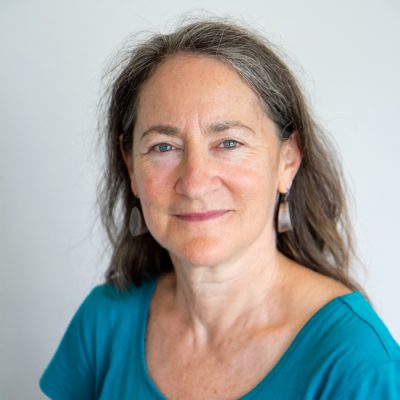
Through acts of sewing and dismantling, Rachel Breen creates projects and spaces for cultivating deeper understandings of labor rights and solidarity. Her work has been shown widely across the country, including a solo exhibition at the Minneapolis Institute of Art in 2020. Her solo exhibition, The Price of Our Clothes, at the Perlman Museum, was included in Hyperallergic’s 2018 Top 20 Exhibitions Across the US (December 20, 2018). Rachel was the recipient of a Fulbright Fellowship to India in 2022 and was awarded an artist residency at MacDowell and the Virginia Center for Creative Arts. Rachel is an inaugural recipient of the Jerome Hill Artist Fellowship, has received four Minnesota State Arts Board grants and a fellowship from the Walker Art Center Open Field. Rachel’s social engagement projects have been presented across the state including two projects commissioned for Northern Spark, a public art festival addressing climate change in Minnesota. Rachel holds an MFA from the University of Minnesota and a BA from the Evergreen State College. She lives in Minneapolis, MN, maintains an active studio practice and is a professor of art at Anoka Ramsey Community College.
Location: East Side Freedom Library & Weisman Art Museum
Projects: Yoke: Garment Solidarity Pennants seeks to lure viewers in as cheerful, colorful pennants, yet suggest something more sinister as a “yoke” – something used to control animals. This work represents the way garment workers are held captive by international clothing brands responsible for unsafe workplaces and below standard pay, endangering workers’ health and livelihoods. The pennants are made from the yoke of used shirts that have been purchased by the pound at a Goodwill Outlet. These pennants bring attention to the way our clothes contain a range of histories – both those of workers and those of wearers – raising essential questions about how garments are discarded and the impacts of overproduction on the climate. I am an artist with an eye on this core question – how can art contribute to the public’s willingness to rethink existing economic systems? I hope to contribute to larger social movements addressing climate change and garment workers’ rights through expressions of mutual aid and solidarity.
Towards a Common Future: Banners for Solidarity // Banners represent a unique combination of the importance of the hand in the making process, the way textiles contain meaning and their history as symbols of protest and resistance. I made these banners to signify the importance of solidarity with workers around the world who make our clothes. To me, solidarity means to empathize and respect the many struggles for social justice. Garment workers around the world grow and weave fabric, cut and sew this fabric into garments, handling these materials so that we have clothes to wear. My interest in labor rights stems from histories of Jewish activism in the garment industry and my own family history as immigrants and activists.
These banners are made from organic Kala cotton, a drought-tolerant variety of cotton indigenous to India. The visual vocabulary printed on these banners references a variety of important symbols I have designed. Sewing stitches – which I see as a mark and symbol of human interdependence – point toward the possibility of repair and social change. Two halves of a circle speak to my yearning for coming together and being whole – a visual representation of solidarity. Made to be hung in galleries or carried at marches and protests, these banners were additionally inspired by Labor Day banners made in the early 1900s by the International Ladies Garment Workers Union, which I saw in the archives of Cornell University’s Kheel Center for Labor-Management Documentation & Archives.
Strong Buffalo, Artist • Flower Power VII
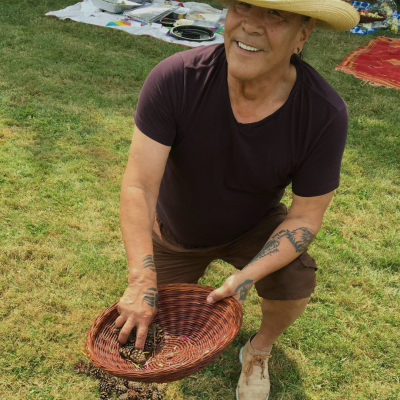
Flower Power artists, when you collect all our efforts together, we represent layers and decades of working for truth, goodness, peace, and gentle wisdom. We are young and old, each with a different story that brings us to a shared world vision. People and flowers are both powerful species on Earth. Flower Power has organically grown out of the Minnesota landscape, out of public demonstration and opposition to state violence, incarceration, and climate crisis. We are individuals trying to present a more compassionate world; our cut flower installations are like portraits that help us deal with complex and abstract problems of injustice. We dedicate a whole day to paying respect to the injustices served, the hardships suffered, and the joy that persists. It’s a time when we use our art and spend it as a community to change the course of past directions. We are different minds and yet of the same heart. We stand with humanity and the Earth as protectors of land and life.
Project: Flower Power VII
Saturday, August 5, sunrise to sunset
Indian Burial Mounds Regional Park
10 Mounds Boulevard, Saint Paul 55106
Oyate Hotanin, a Native-led arts, thought, and social justice organization, presents of Flower Power VII, an annual event aimed at helping us all to remember who we are, to work to eliminate our incarceration state, rescue our planet, and lead a worldwide movement of a billion good relatives, Flower Power centers on the creation of an ephemeral work of art, made from cut flowers. Over the course of a day, artists arrange the blooms in a mosaic-like pattern on the grass surrounding the sculpture, Sacred Bowl, by Ojibwe artist Duane Goodwin.
Location:
Saturday, August 5, sunrise to sunset
Indian Burial Mounds Regional Park
10 Mounds Boulevard, Saint Paul 55106
Sayge Carroll, Artist • Prairie|Concrete
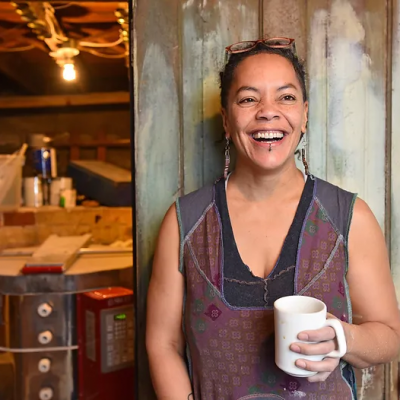
Artist and advocate Sayge Carroll has been tending the soil of community through art for more than 20 years. Carroll is a recent graduate of University of Minnesota MFA in Interdisciplinary Arts and Social Practice and holds a BA from the University of Minnesota. Carroll is currently enrolled in the Master Gardener program at the University of Minnesota.Through visual art, sound design and civic engagement Carroll has devoted their career and life work to connecting ancestral wisdom, lineage and knowledge of natural resources to the present.
Location: Frogtown Farm, Hidden Falls Regional Park & Western Sculpture Park
Project: Prairie|Concrete is an outdoor embodied movement project by lead artist, Pramila Vasudevan and the Aniccha Arts collaborative, commissioned by Public Art St. Paul (PASP). This project will bring visibility to plant cycles and growing practices through embodied listening and movement sessions with communities in St. Paul, Minnesota. The commission will unfold across 3 City of St. Paul Parks – Frogtown Farm, Hidden Falls Regional Park and Western Sculpture Park – through one rehearsal, 3 movement workshops, and one event at each site as part of the first Wakpa Triennial Arts Festival.
Mary Casanova, Artist • Waking Worlds: Wondrous Reads for Curious Minds
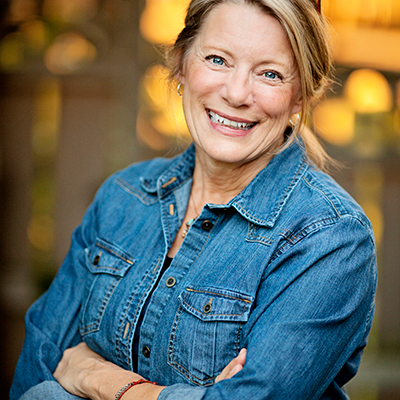
Mary Casanova is an award-winning children's author of novels and picture books. Many of her books stem from her life on the Minnesota-Canadian border; yet some of her stories have taken her as far away as France, Norway, and Belize. Whatever the setting for her books, Casanova writes stories that matter — and stories that kids can't put down. With 38 books published, she divides her time between writing and traveling. Nationally and internationally, at schools and conferences, Casanova shares her love of writing and reading with children and adults. She is the author of Wake Up Island (2016) and Hush Hush, Forest (2018) from the University of Minnesota Press.
Location: Minnesota Marine Art Museum
Project: The exhibition features original illustrations from three book projects; Mary Casanova’s Wake Up Island (University of Minnesota Press) and Hush, Hush, Forest (University of Minnesota Press) as illustrated by printmaker Nick Wroblewski, and World of Wonders: In Praise of Fireflies, Whale Sharks, and Other Astonishments (Milkweed Editions) written by Aimee Nezhukumatathil and illustrated by Fumi Nakamura. Selections from all three books will be accompanied by wood carvings from the Minnesota Marine Art Museum’s collection of Leo and Mariylyn Smith folk art - a collection of sculptures informed by the whimsy and wonder of the Mississippi River marine environments - interspersed throughout the gallery.
Hannah Chalew, Artist • Paper Is People: Decolonizing Global Paper Cultures
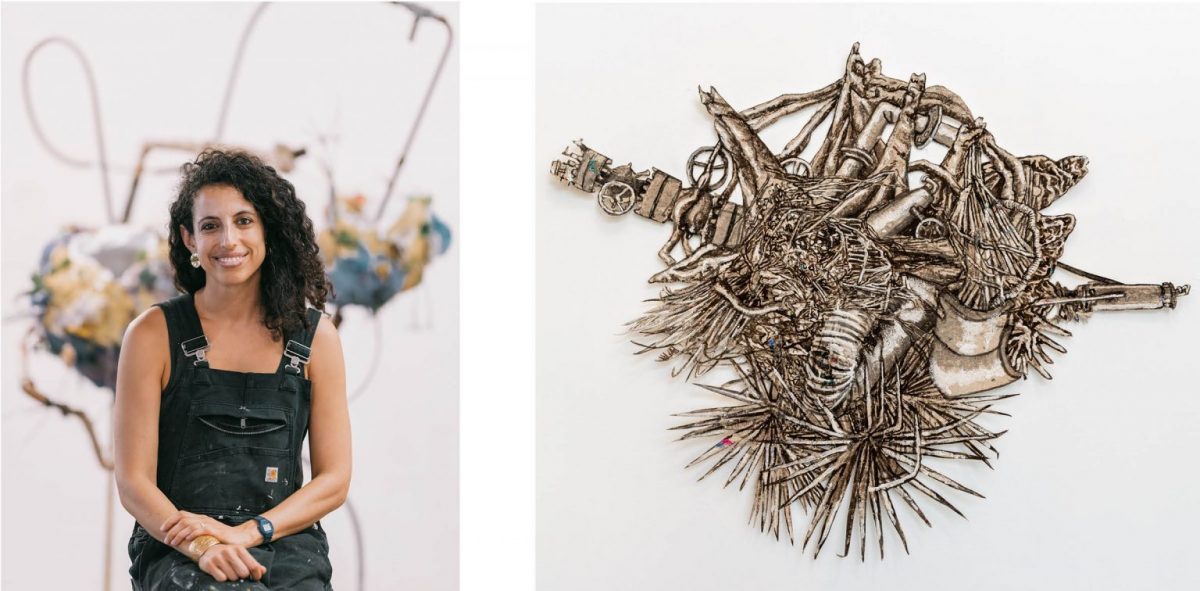
Hannah Chalew is an artist, educator and environmental activist raised and currently working in New Orleans. Her artwork explores what it means to live in a time of global warming with a collective uncertain future, and specifically what that means for those living in Southern Louisiana. Chalew’s practice explores the historical legacies that got us here to help imagine new possibilities for a livable future. She received her BA from Brandeis University in 2009, and her MFA from the Cranbrook Academy of Art in 2016. Chalew has exhibited widely around the U.S. Her work has been featured in Garden & Gun, BOMB, Hyperallergic, Burnaway, the LA Times, the Boston Globe and more. Chalew’s work is included in two creative atlases by writer and activist Rebecca Solnit, Unfathomable City: A New Orleans Atlas, co-authored with Rebecca Snedeker and Nonstop Metropolis: A New York City Atlas, co-authored with Joshua Jelly-Schapiro. She is the 2022 South Arts Southern Prize winner as well as the South Arts Louisiana State Fellow.
Location: Minnesota Center for Book Arts
Project: Paper Is People: Decolonizing Global Paper Cultures, co-curated by Tia Blassingame and Stephanie Sauer, offers a new definition of paper within a global and decolonial framework, opening up a conversation around what paper is across cultures today. In the Indigenous and oral cultures represented here, weavings, tapestries, and other handmade substrates act as vessels and embodiments of collective culture and memory. See paper samples and source materials, watch papermaking processes from source to finish, read interviews and watch videos from traditional practitioners, experience how contemporary artists are finding new applications for ancient technologies, and participate in a variety of workshops and talks. Join us at mnbookarts.org/paper-is-people
Page Chang, Artist • Paper Is People: Decolonizing Global Paper Cultures
Page Chang is a Native Hawaiian artist, teacher, and kapa maker. She born and raised in the suburbs of Washington, D.C., and was passionate about learning Hawaiian cultural practices when she moved to Hawaiʻi 24 years ago. Chang looks to the ʻāina and the renewable resources found here in Hawaiʻi as a means of solving the ecological and social emergencies faced locally and as a global community. She recently received the Award of Excellence at the “Annual Hawaiʻi Craftsmen Juried Exhibit” for a kapa malo. Chang’s artwork ranges from paintings to textiles to plastics, and incorporates traditional Hawaiian and modern motifs. Her newest passion is Hawaiian kapa along with Native Hawaiian and other natural dyes. She has worked with Kumu Dalani Tanahy, to learn to grow, harvest, process, and dye kapa, as well as make all of the tools that she needs.
Location: Minnesota Center for Book Arts
Project: Paper Is People: Decolonizing Global Paper Cultures, co-curated by Tia Blassingame and Stephanie Sauer, offers a new definition of paper within a global and decolonial framework, opening up a conversation around what paper is across cultures today. In the Indigenous and oral cultures represented here, weavings, tapestries, and other handmade substrates act as vessels and embodiments of collective culture and memory. See paper samples and source materials, watch papermaking processes from source to finish, read interviews and watch videos from traditional practitioners, experience how contemporary artists are finding new applications for ancient technologies, and participate in a variety of workshops and talks. Join us at mnbookarts.org/paper-is-people.
Julio Laja Chichicaxtle, Artist • Paper Is People: Decolonizing Global Paper Cultures
Julio Laja Chichicaxtle, Otomi, creates papel amate works of art from bark harvested from a tree called popova in the Ñühü language. The tree was selected because it is the only one that can produce four different colors of paper, and is known as a “generous tree” because it can be harvested all year long without causing damage. Once the bark is collected, each art piece takes a few days to make. Julio has taken this art form to a new level. Strips of the paper are braided, twisted and inserted seamlessly into the design. Through his work, Laja also connects with his family’s lineage of art-making, which he learned from his grandmother at ten years old. His family has been making papel amate for more than 200 years, passing the knowledge down through the generations.
Location: Minnesota Center for Book Arts
Project: Paper Is People: Decolonizing Global Paper Cultures, co-curated by Tia Blassingame and Stephanie Sauer, offers a new definition of paper within a global and decolonial framework, opening up a conversation around what paper is across cultures today. In the Indigenous and oral cultures represented here, weavings, tapestries, and other handmade substrates act as vessels and embodiments of collective culture and memory. See paper samples and source materials, watch papermaking processes from source to finish, read interviews and watch videos from traditional practitioners, experience how contemporary artists are finding new applications for ancient technologies, and participate in a variety of workshops and talks. Join us at mnbookarts.org/paper-is-people.
Kelly Church, Artist • Paper Is People: Decolonizing Global Paper Cultures'
Kelly Church is Ottawa/Pottawatomi, descended from the Gun Lake and Grand Traverse Bands. She has an experienced master’s eye for selecting the best black ash tree to provide the best material for her to create a vast array of baskets, from designed black ash baskets to Summer Strawberry Blossoms. The traditional Anishinabe process of creating a black ash basket from start to finish is an awe-inspiring and learning experience that goes beyond the artistic practice to include discussions in biochemistry, forest management, invasive pest control, traditional language skills, and deep personal memories of family history. Growing up in southwestern Michigan during the 1970s, Church studied the Odawa language from her paternal grandmother and learned black ash basketry from her father, Bill Church, and cousin, John Pigeon. She has since passed her knowledge on to her daughter, Cherish Parrish. She received an associate of fine arts degree from the Institute of American Indian Arts in Santa Fe, New Mexico, and earned a BFA from the University of Michigan, Ann Arbor. Church then realized her personal artistic mission was to bring people together in workshops to harvest the black ash trees, process the logs into splints, and create personally designed baskets while learning patience, commitment, beauty, and pride in the Native tradition and culture. By the early 2000s, it was discovered that the Emerald Ash Borer (EAB), an invasive and voracious black ash tree bug from Asia with no known predators, had arrived in the Michigan region and began to devour black ash trees at an enormous rate, resulting in the near extinction of ash trees in Michigan. Church was alarmed that without black ash trees available to harvest, generations of knowledge, experience, and traditional expressions might be lost. She recognized the necessity of researching and documenting, collecting seeds, and collaborating with national and international agencies in getting the word out about this environmental and cultural disaster. Church’s artistic, activist, mentorship, and tradition bearer journey to advocate for the survival of Native traditions has involved many national and international art programs, exhibitions, and work with government agencies such as tribal and U.S. Forest services. She has been named the Eiteljorg Artist in Residence, received a Native Arts and Cultures Foundation’s National Artist Fellowship, and been a four-time Artist Leadership Program participant of the Smithsonian National Museum of the American Indian.
Location: Minnesota Center for Book Arts
Project: Paper Is People: Decolonizing Global Paper Cultures, co-curated by Tia Blassingame and Stephanie Sauer, offers a new definition of paper within a global and decolonial framework, opening up a conversation around what paper is across cultures today. In the Indigenous and oral cultures represented here, weavings, tapestries, and other handmade substrates act as vessels and embodiments of collective culture and memory. See paper samples and source materials, watch papermaking processes from source to finish, read interviews and watch videos from traditional practitioners, experience how contemporary artists are finding new applications for ancient technologies, and participate in a variety of workshops and talks. Join us at mnbookarts.org/paper-is-people
Zoe Cinel, Artist • Second Shift Resident Exhibition
Zoe Cinel (she/they) is an interdisciplinary artist and curator from Italy whose work builds community around human experiences that are isolating and complex to navigate, such as immigration and chronic pain. Starting from her journey as a patient and an immigrant and collaborating with other artists and community members, Zoe’s work’s ultimate goal is to connect and produce social change. Cinel received an MFA in Visual Studies from the Minneapolis College of Art and Design. Her artistic and curatorial work has been shown in institutions such as the Walker Art Center, the Minneapolis Institute of Art, the Gordon Parks Gallery at Metropolitan State University, St Paul, and the Rochester Art Center. Since 2017, she has been a member of the CarryOn Homes, an artistic collective dedicated to telling the stories of immigrants in MN.
Location: Second Shift Gallery
Project: Second Shift Studio’s Resident Group Exhibition is part of the Wakpa Triennial Arts Festival and features the work of the studio’s current resident artists, Cameron Patricia Downey, Jocelyn Suzuka Figueroa, Stephanie Lindquist, and Zoe Cinel. This is an exhibition of the work of the four studio artists in residency at Second Shift Studio, where they have spent the past year working, making, and thinking alongside each other.
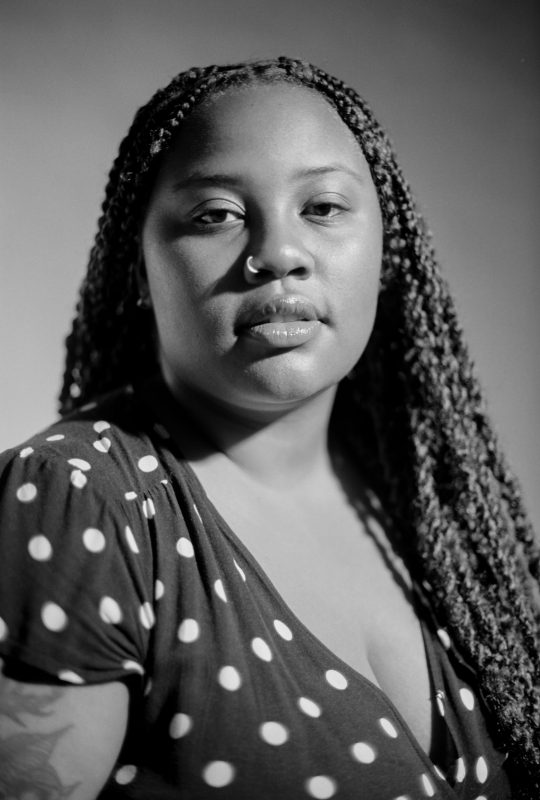 Za’nia Coleman, Artist • Constellation: Video Storytelling
Za’nia Coleman, Artist • Constellation: Video Storytelling
Read Za'Nia Coleman's interview
Za’Nia Coleman is an interdisciplinary artist experimenting with textiles, digital media, and cultural curation. Her primary medium is film focusing on documentary, oral history, and digital projections. With projections, she is exploring how to reclaim the outside spaces both figuratively and literally that Black Femmes are subjected to by using projection mapping to visualize or give imagery to their worlds. The goal is to experiment with how to visualize the intersections of the archive, Black Folklore, and Black Science Fiction. The root of her work is archiving Black traditional and historical practices around love, pleasure, cultural expression, and community building. She is Co-Founder and Executive Director of Tangible Collective, an art collective that creates space devoted to Black Millennial thought and expression. Za’Nia holds a Bachelor's degree in Film Studies and Film Theory and Culture.
Project: Constellation: Video Storytelling
Constellation is a cohort of seven artists, each creating a short video to be presented in a looped series that will be projected onto the downtown Saint Paul Public Library - George Latimer on Rice Park. Videos shall interact with the architecture of the library building, transforming it into new visions for public space and public knowledge. Artists include: Za’nia Coleman; Boo McCaleb; SEE MORE PERSPECTIVE; Witt Siasoco; Miko Simmons; Jonathan Thunder; and Moira Villiard.
Where:
Rice Park & Saint Paul Public Library - George Latimer Central Library
109 W 4th St, St Paul, MN 55102
Dates and Times:
9/14 - 8:00 PM-9:00 PM - Preview Night
9/15 - 5:00 PM-9:30 PM
9/16 - 5:00 PM-9:30 PM
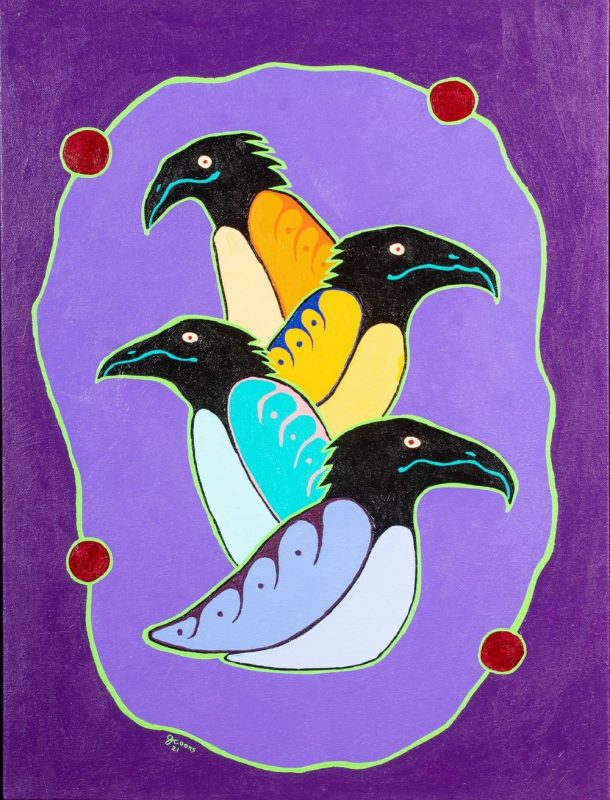
Four Ravens, Gordon Coons
Gordon Coons, Artist • Gidibaajimomin - 'We Tell Stories'
June 16 - August 20 at The Confluence Gallery of the Minnesota Valley National Wildlife Refuge,
3815 American Blvd. East, Bloomington, MN 55425
In Gidibaajimomin - 'We Tell Stories,' work comes from his heritage of Ojibwe. He is an enrolled member of the Lac Courte Oreilles Band of Lake Superior Chippewa Indians of Wisconsin. he currently lives in Minneapolis, Minnesota, and have been a resident here for the past 46 years. He uses his traditional Ojibwe clan animal stories to educate people about our shared relationship with the natural world. He creates Ojibwa stories of celestial events, animals, and man by painting in the Ojibwa Woodland art style, reduction block prints, and transferring cedar smoke to paper. His creations are a journey to a better place by creating a stronger relationship between animals and nature.
Gordon Coons creates artworks in a variety of mediums, including cedar smoke, linoleum relief prints, paintings in oil or acrylics, pen and ink, and stone and wood-assembled sculptures. His artworks portray a contemporary view of traditional Native stories. Coons is a self-taught artist who has shown in exhibitions around the country, including Smithsonian National Museum of the American Indian on the national mall in Washington, D.C.; Santa Fe Indian Market, New Mexico, Eiteljorg Museum of Indianapolis; Cherokee At Market in Tulsa Oklahoma; Dakota Discovery Museum in Mitchell, South Dakota. Coons has won numerous awards and commissions and is represented in permanent collections of institutions such as the Red Cloud Indian School Heritage in Pine Ridge, SD; the Summit Medical Center of Oakland, CA; Essentia Health in Duluth, MN; Red Earth, Oklahoma, OK; and Akta Lakota Museum and Cultural Center, Chamberlain, SD; Madison College – South Campus, Madison, WI. Coons states: “My inspiration comes from my Ojibwa and Ottawa heritage. I express my culture through artworks using a contemporary style. I enjoy incorporating playfulness in my images, telling stories of the relationships between western and Native culture, and the connections we have to our shared historical events. My goal as an artist is to channel my creativity, eliciting a more universal interpretation of my work and heritage.”
Location: The Confluence Gallery at the Minnesota Valley National Wildlife Refuge, 3815 American Blvd. East, Bloomington, MN 55425
June 16 - August 20
Cecilia Cornejo (Sotelo), Artist • Threads of Connection and Belonging
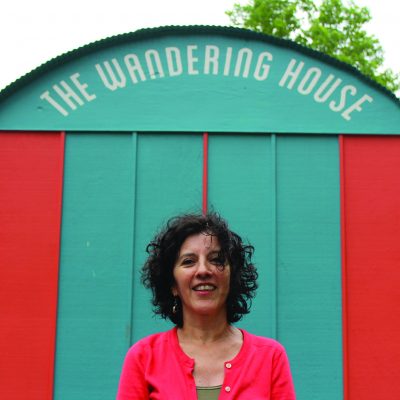
Cecilia Cornejo (Sotelo) is a Chilean-American documentary filmmaker, artist and educator based in Northfield, Minnesota, the occupied ancestral land of the Wahpekute Band of the Dakota Nation. Locally rooted yet globally minded, her work examines notions of home and the immigrant experience while exploring the traces of historical trauma on people and places. An inaugural recipient of the 2020 McKnight Fellowship for Community-Engaged Artists, Cecilia’s work has received support from the Minnesota State Arts Board, the National Association of Latino Arts and Culture (NALAC), the Jerome Foundation, and the Southeastern Minnesota Arts Council. Her film work has shown nationally and abroad and is currently distributed by Women Make Movies.
Project: Through sound, images, and the written word, Cecilia Cornejo’s collaborative work engages community members to reflect on ideas of home, connection, and belonging. Cornejo has embraced multiple ways of sharing stories. From the high tech—indexed databases, touchscreens, and sound domes—to traditional practices of embroidery, "Threads of Connection and Belonging" shares broad perspectives united by one idea: What does it mean to be home? The multiplicity of voices that populate the exhibition have been gathered in Southeastern Minnesota over the past five years through Cornejo’s multiplatform project, "The Wandering House," which features an inviting mobile audio recording studio. “Cecilia has built connections with many people, including and especially those whose stories aren’t always highlighted,” says Artistic Director Stephanie Rogers. “Through her work, the stories collected are given back to the people and places they came from in a framework that invites reflection and discovery.”
Location: Anderson Center
Joe Davis, Facilitator of The Role of Faith and Faith Communities in Building Networks of Mutuality with Pilgrim Lutheran Church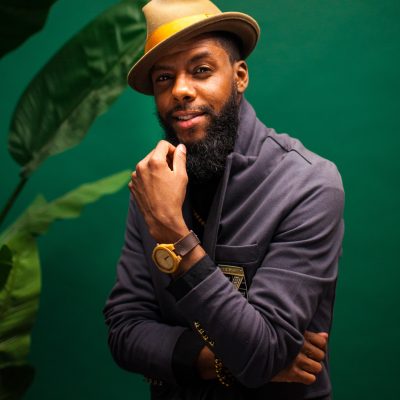
Tuesday, August 15, 6 – 8 PM, light meal served
Pilgrim Lutheran Church, 1935 Saint Clair Ave., Saint Paul, 55105
Come back for the registration link!
Critical Conversations: How do we recognize and build our “networks of mutuality?” are a series of events to gather public audiences to connect in thoughtful reflection and deep engagement with probing questions such as, How are we related? How do we overcome divisions? How can art help us to consider our mutuality with each other so that everyone thrives? Who is included in our networks of mutuality? How can art help us to envision new futures. Join one conversation or each in the series. Each event offers a slightly different focus with different facilitators and activities and takes place in different locations.
All programs are free of charge but require advance registration.
Joe Davis is a poet and artist living in North Minneapolis; using art, spoken word, and poetry as an opportunity to create space for folx to find healing, their own inner voice, and one another. Growing up, mentors urged him to share his work with others, so Joe began to share his work at open mic events. Through these events he learned that art is a tool of empowerment for both children and adults alike. Through his work, Joe encourages others to use art as a communal space of healing, liberation, and joy.
Pilgrim Lutheran Church is a progressive congregation with strong commitments to equity and inclusion and to reaching out to people beyond their own members. Join Pastor Jennifer Rome, with facilitators Joe Davis, poet and performer; Jess Grams, artist in residence at Luther Seminary, and other faith leaders to be announced. People of every faith are invited to join in the discussion about how faith and faith communities can build networks of mutuality beyond denominations and congregations.
Location: Pilgrim Lutheran Church, 1935 Saint Clair Ave, Saint Paul
August 15, 6 – 8 PM
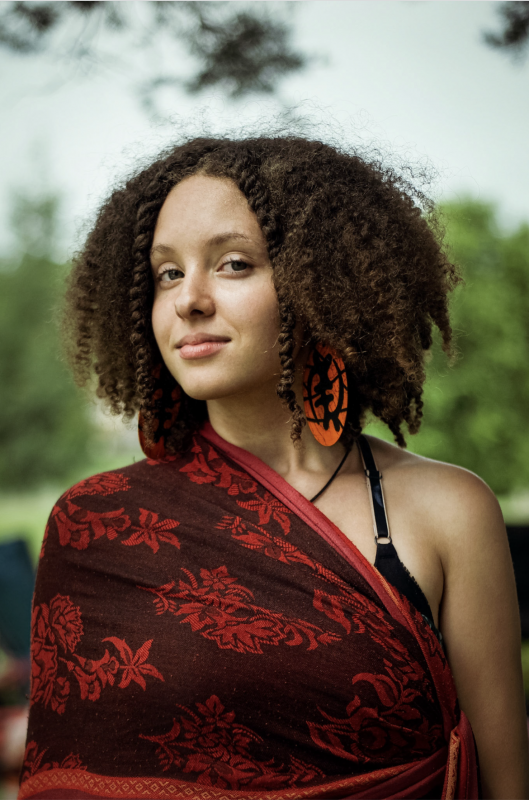
Isabella Dawson
Isabella Dawson, Artist • Flower Power VII
Flower Power artists, when you collect all our efforts together, we represent layers and decades of working for truth, goodness, peace, and gentle wisdom. We are young and old, each with a different story that brings us to a shared world vision. People and flowers are both powerful species on Earth. Flower Power has organically grown out of the Minnesota landscape, out of public demonstration and opposition to state violence, incarceration, and climate crisis. We are individuals trying to present a more compassionate world; our cut flower installations are like portraits that help us deal with complex and abstract problems of injustice. We dedicate a whole day to paying respect to the injustices served, the hardships suffered, and the joy that persists. It’s a time when we use our art and spend it as a community to change the course of past directions. We are different minds and yet of the same heart. We stand with humanity and the Earth as protectors of land and life.
Project: Flower Power VII
Saturday, August 5, sunrise to sunset
Indian Burial Mounds Regional Park
10 Mounds Boulevard, Saint Paul 55106
Oyate Hotanin, a Native-led arts, thought, and social justice organization, presents of Flower Power VII, an annual event aimed at helping us all to remember who we are, to work to eliminate our incarceration state, rescue our planet, and lead a worldwide movement of a billion good relatives, Flower Power centers on the creation of an ephemeral work of art, made from cut flowers. Over the course of a day, artists arrange the blooms in a mosaic-like pattern on the grass surrounding the sculpture, Sacred Bowl, by Ojibwe artist Duane Goodwin.
Location:
Saturday, August 5, sunrise to sunset
Indian Burial Mounds Regional Park
10 Mounds Boulevard, Saint Paul 55106
Cameron Downey, Artist • Second Shift Resident Exhibition
Cameron Downey (she/they) is an anti-disciplinary artist born and raised in North Minneapolis, Minnesota whose work oscillates between photography, film, body, sculpture, curation and otherwise. Seeing instruction in the incidental, the precarious and the misremembered, their work strives to archive, unfurl, make-altar-of and bring fantasy to the Blues of Black life and relation. Downey graduated from Columbia University in 2021 with a double concentration in visual art and environmental science. Downey’s art has been exhibited by HAIR+NAILS, Minneapolis; Aronson Gallery, New York; Kunstraum Kreuzberg/Bethanien, Berlin; Engage Projects, Chicago; as part of Midway Contemporary Art’s Off-Site program; M+B Gallery, Los Angeles; and Museum of Contemporary Art Santa Barbara (forthcoming).
Location: Second Shift Studios
Project: Second Shift Studio’s Resident Group Exhibition is part of the Wakpa Triennial Arts Festival and features the work of the studio’s current resident artists, Cameron Patricia Downey, Jocelyn Suzuka Figueroa, Stephanie Lindquist, and Zoe Cinel. This is an exhibition of the work of the four studio artists in residency at Second Shift Studio, where they have spent the past year working, making, and thinking alongside each other.
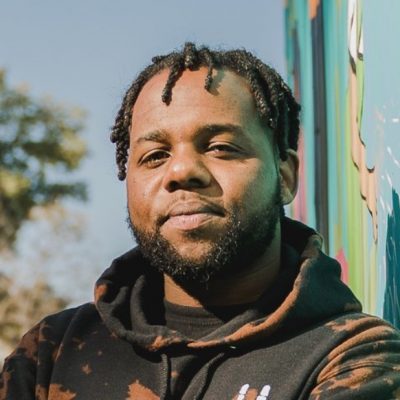
Philipo Dyauli (Minneapolis)
philipodyauli.com
Philipo Dyauli is a self-taught painter, muralist and illustrator from Tanzania and currently based in Minneapolis. As a painter, he uses color and scale to illustrate the importance of people over material objects to create a unique form of storytelling and transform personal experiences into life-size paintings.
Project: Mural in the Creative Enterprise Zone for Chroma Zone Mural & Art Festival 2023
Dates: September 14, 15 & 16
Location: Creative Enterprise Zone (CEZ), a district centered on the Raymond-University neighborhood of Saint Paul: Click here for a Map of all the Murals in the CEZ.
Visit Chroma Zone for more event info.
Aaron Dysart, Artist • Commune
Read the interview with Aaron Dysart
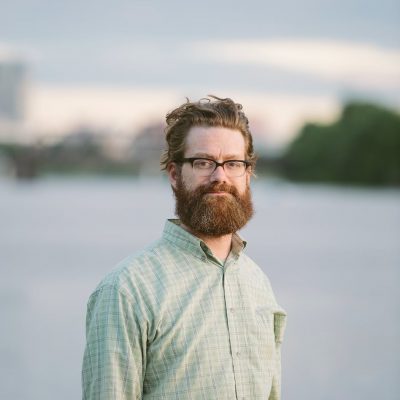
Aaron Dysart is a sculptor interested in using the vocabulary of visual language to give hidden stories a broader audience. His environmental interventions showcase his love of light shows and unseen infrastructure, while his objects highlight material’s ability to carry content. He has partnered with numerous organizations including the National Park Service, Army Corp of Engineers, District Energy St. Paul, Mississippi Park Connection, Three Rivers Park District, and Public Art Saint Paul. Dysart has received awards from the Jerome Foundation through Franconia Sculpture Park, The Jerome and McKnight foundation through Forecast Public Art, The Knight Foundation, and The Minnesota State Arts Board. Having shown nationally, his work has been in Art in America, Hyperallergic, The Dallas Morning News, Berlin Art Link along with others. Dysart is a City Artist embedded in the city of St. Paul through Public Art Saint Paul collaborating across city departments to create art out of the life-sustaining systems of the city while advising on major city initiatives.
Location: Upper Landing Park
Project: Aaron Dysart has a tree sculpture called Commune that will be installed at Upper Landing Park along the Mississippi near downtown Saint Paul. Appearing in two horizontal sections--one part the tree roots and stump, the other the trunk and branches—there will be a 50 ft. gap between the two sections. A concave form called an acoustic mirror will cap each end of the trunk and offer magical experiences for conversations. Audience members will be able to communicate across this distance without raising their voices.
How to Interact with Commune
Commune is a full tree split into two sections--one part the tree roots and stump, the other the trunk and branches. It is presented horizontally on steel support structure with a 40 ft. gap between the two tree sections. From the cut portion of the tree, the form spreads out, terminating in a concave dish, called an “acoustic mirror.” This feature allows audience members to magically communicate from the past of the roots to the future of the branches without raising their voices.
To communicate across the gap, speak (and listen) about fourteen inches away from the raised dot in the middle of the dish, which is the focal point of the mirror. It helps to speak into the dish and listen with an ear toward the dish. Just like all forms of communication, it takes a little work to find the sweet spot.
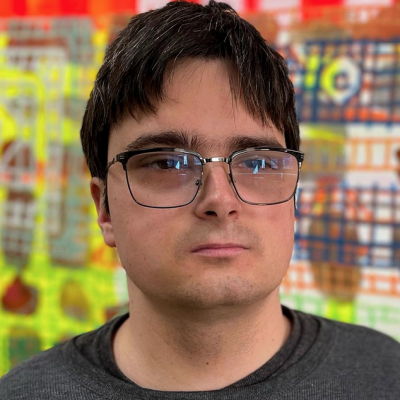
Michael Engebretson with Interact Gallery
@Interactgallery
Michael Engebretson's kaleidoscopic drawings, paintings, and sculptures map a future existence beyond Earth, where inhabitants travel through galaxies by spaceship and live on distant moons. An avid autism advocate, Engebretson would like viewers of his work to understand how, as he says, “the autistic mind operates.” He describes the way that his brain works as “just like a cyborg: part human, and part machine,” and he hopes that his work will help people to understand the vitality of neurodiversity. “Minds, minds can coexist,” he says. “and can coexist with other people, with everybody. Isn’t that awesome?”
Project: Mural in the Creative Enterprise Zone for Chroma Zone Mural & Art Festival 2023
Dates: September 14, 15 & 16
Location: Creative Enterprise Zone (CEZ), a district centered on the Raymond-University neighborhood of Saint Paul: Click here for a Map of all the Murals in the CEZ.
Visit Chroma Zone for more event info.
Liz Ensz, Artist • Groundwork
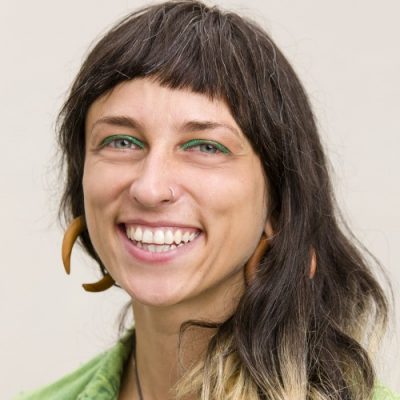 Liz Ensz was born in Minnesota to a resourceful family of penny-savers, metal scrappers, and curators of cast-offs. Ensz received a BFA in Fiber from the Maryland Institute College of Art (2005), and an MFA in Fiber and Material Studies from the School of the Art Institute of Chicago (2013). With an interdisciplinary approach, their work presents a comparative study of the mass-cultural investment in disposability and the human desire to imagine permanence through emblems, monuments, and commemoration. At the heart of their practice lies a determined material engagement, scavenger impulse, and a sincere hope for the rethinking of the valuation of people, resources, the environment, and living things. Liz Ensz is based in Baltimore, MD.
Liz Ensz was born in Minnesota to a resourceful family of penny-savers, metal scrappers, and curators of cast-offs. Ensz received a BFA in Fiber from the Maryland Institute College of Art (2005), and an MFA in Fiber and Material Studies from the School of the Art Institute of Chicago (2013). With an interdisciplinary approach, their work presents a comparative study of the mass-cultural investment in disposability and the human desire to imagine permanence through emblems, monuments, and commemoration. At the heart of their practice lies a determined material engagement, scavenger impulse, and a sincere hope for the rethinking of the valuation of people, resources, the environment, and living things. Liz Ensz is based in Baltimore, MD.
Location: Dreamsong
Project: Groundwork, presented by Dreamsong, is a group exhibition that takes terra firma as both subject and medium. A signifier of place, territory, and identity, a wellspring of life-giving nutrients, and a site of conflict over land-based indigenous rights and environmental protection, soil offers a rich prism through which the present may be both imagined and imaged. Through excavating diverse histories in artworks that take the ground as subject and material, the exhibition aims to encourage discussion about its preservation, its meaning, the claims that are made to it, and the sustenance, both spiritual and physical, that we derive from it.
Jared Fessler, Artist • It's the People
Jared Fessler has enjoyed photography for as long as he can remember. He took a photography film class back in high school, but photography did not really come back to him until post-secondary education when he was trying to figure out what he was going to do next. Fessler invested in a camera and for fun, just started taking photos of everything but mostly enjoyed photographing people and once his work spread, people started reaching out to him to photograph them. He decided that if he was going to do this, he needed to learn more about his camera and photography. He decided to get his certificate in photography and to this day, Fessler still attends photography workshops and classes.
Location: Hennepin Theatre District
Project: Hennepin Theatre Trust’s 2023-24 edition of It’s the People features large-scale photo banners along Hennepin Avenue in downtown Minneapolis. This public art initiative is inspired by the exceptional, everyday people whose experiences, contributions and stories create the unique vibrancy of our shared communities.
Jocelyn Suzuka Figueroa, Artist • Second Shift Resident Exhibtion
Born in Kyoto, Japan, Jocelyn Suzuka Figueroa (she/her) is a hafū fiber artist and painter. She creates plush animal dolls and ghost scroll paintings as a means to examine generational family traditions within histories altered by immigration, loss, and war. Her work, rooted in the maintenance of inherited artistic practices, stems from the belief that the foundational legacies of the past must be investigated before a home can be built for the present.
Location: Second Shift Studio
Project: Second Shift Studio’s Resident Group Exhibition is part of the Wakpa Triennial Arts Festival and features the work of the studio’s current resident artists, Cameron Patricia Downey, Jocelyn Suzuka Figueroa, Stephanie Lindquist, and Zoe Cinel. This is an exhibition of the work of the four studio artists in residency at Second Shift Studio, where they have spent the past year working, making, and thinking alongside each other.
Gita Ghei, Artist • Illuminating Solar Peace Pole for Western Sculpture Park
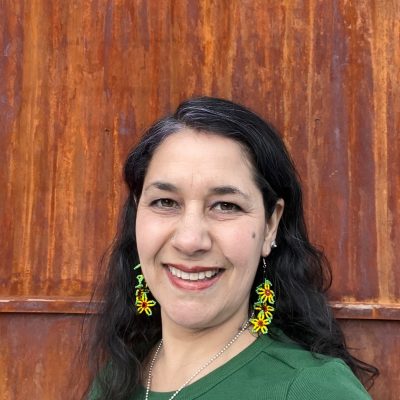
Location: Western Sculpture Park
Shalini Gupta, Advisor • Prairie|Concrete
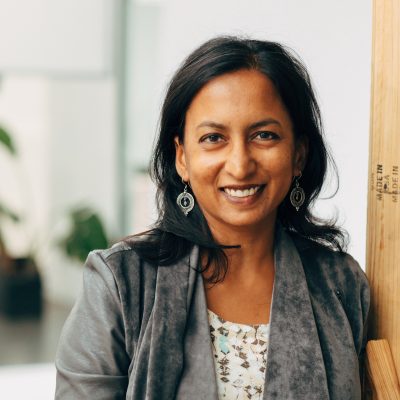
Shalini Gupta is a writer, researcher and environmental justice activist. Shalini has been involved with energy, climate and environmental policy - with a focus on building frontline community capacity - for the past 20 years. Her work is centered on solutions to our ecological crises that are grounded in people and place; and our economic and social histories. Through her consultancy work, Shalini works with a range of philanthropic, governmental, and community-based organizations across the country. www.sgupta.org
Location: Frogtown Farm, Hidden Falls Regional Park & Western Sculpture Park
Project: Prairie|Concrete is an outdoor embodied movement project by lead artist, Pramila Vasudevan and the Aniccha Arts collaborative, commissioned by Public Art St. Paul (PASP). This project will bring visibility to plant cycles and growing practices through embodied listening and movement sessions with communities in St. Paul, Minnesota. The commission will unfold across 3 City of St. Paul Parks – Frogtown Farm, Hidden Falls Regional Park and Western Sculpture Park – through one rehearsal, 3 movement workshops, and one event at each site as part of the first Wakpa Triennial Arts Festival.
Hannah Lee Hall, Artist • Groundwork
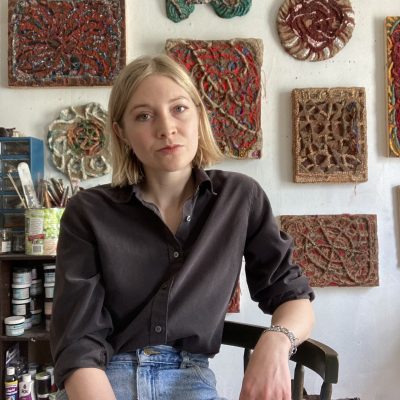 Hannah Lee Hall lives and works in St. Paul, MN. My work is about touch and change. Each piece is formed through an accretion of sand, paper pulp, string, and detritus. I feel them out as I go, letting each piece develop its own internal logic, like my hands are stumbling through an invisible maze. Some contain multitudes of layers, mostly unseen, informing the surface from below. I am an amasser of remnants and broken bits, and likewise my paintings are entrenched with debris. They contain residues from my life. My process is sculptural and regenerative; the excess of one painting often seeps into the next. My love of textiles informs my method of dyeing paper fiber, my use of pattern and repetition, and the woven nature of these compositions.
Hannah Lee Hall lives and works in St. Paul, MN. My work is about touch and change. Each piece is formed through an accretion of sand, paper pulp, string, and detritus. I feel them out as I go, letting each piece develop its own internal logic, like my hands are stumbling through an invisible maze. Some contain multitudes of layers, mostly unseen, informing the surface from below. I am an amasser of remnants and broken bits, and likewise my paintings are entrenched with debris. They contain residues from my life. My process is sculptural and regenerative; the excess of one painting often seeps into the next. My love of textiles informs my method of dyeing paper fiber, my use of pattern and repetition, and the woven nature of these compositions.
Location: Dreamsong
Project: Groundwork, presented by Dreamsong, is a group exhibition that takes terra firma as both subject and medium. A signifier of place, territory, and identity, a wellspring of life-giving nutrients, and a site of conflict over land-based indigenous rights and environmental protection, soil offers a rich prism through which the present may be both imagined and imaged. Through excavating diverse histories in artworks that take the ground as subject and material, the exhibition aims to encourage discussion about its preservation, its meaning, the claims that are made to it, and the sustenance, both spiritual and physical, that we derive from it.
Monica Moses Haller, Artist • Listening to the Mississippi
Read the interview with Monica Moses Haller
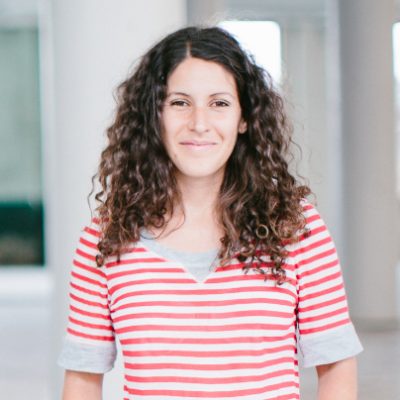
Monica Moses Haller’s work spans media including photography, video, sound, writing, installation and design. Most often she collaborates long term with individuals and small groups of people. These works focus on personal details to address large systems that are political, psychological and environmental. These works include “Riley and his story” and the “Veterans Book Project,” both offering multi-layered narratives of the U.S.-led wars in Iraq and Afghanistan. Haller’s recent work brings her to the eroding wetlands of the Louisiana coast, land that has been in her mixed-race “Creole” family for six generations. This work explores the violence within philosophies of ownership, the social construction of race, and the possibilities of this wetland’s terrain. Monica's work is exhibited in the US and internationally at museums and public spaces including Pompidou, Paris, Leipziger Baumwollspinnerei, Germany, the Minneapolis Institute of Art, Milwaukee Art Museum, along the banks of the Mississippi River and many other sites. She has received fellowships from the Guggenheim Foundation, McKnight Foundation, Jerome Foundation, the National Endowment for the Arts funding of the Veterans Book Project among others. Her public art projects include Can you listen to the same river twice? commissioned by Northern Spark, 2013, St. Paul, MN, and Listening to the Mississippi, with Haus der Kulturen der Welt (HKW).
Project: Listening to the Mississippi
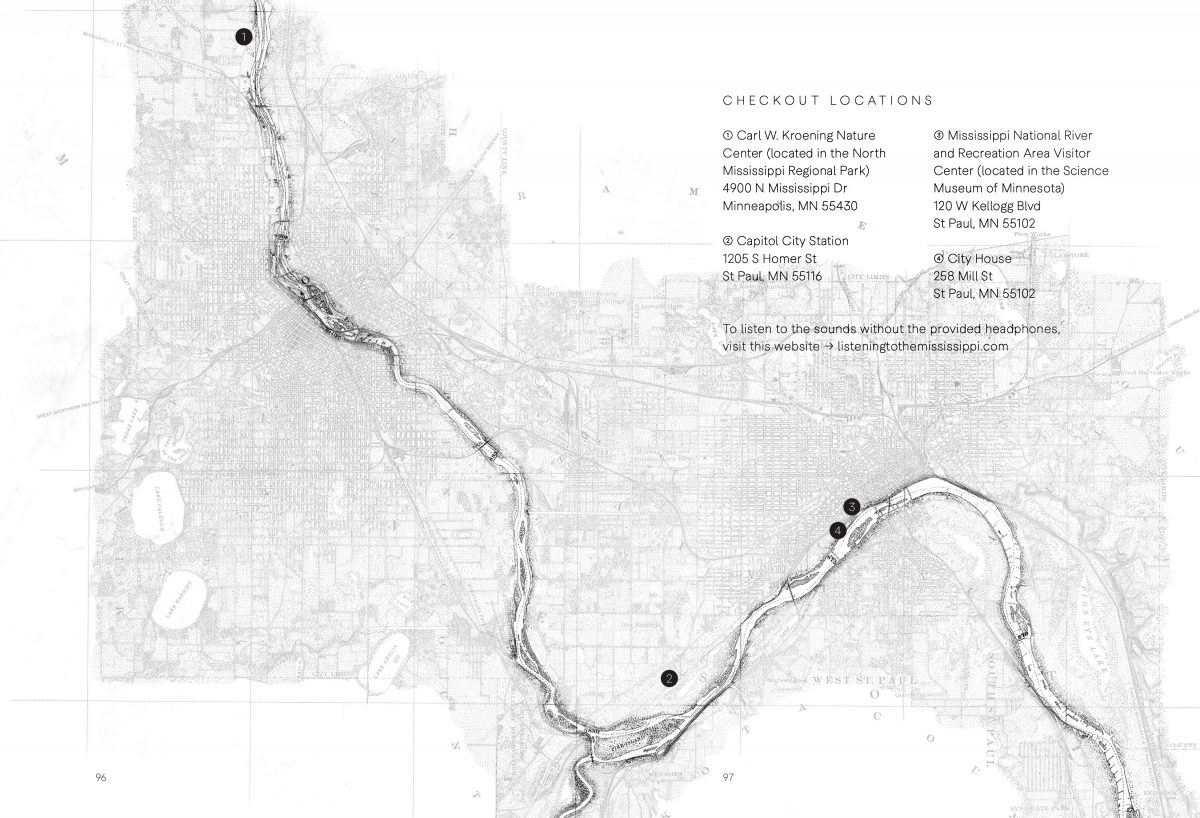
Where to Listen:
“Listening to the Mississippi” is an iterative project, a grouping of underwater sounds recorded in and around the river, a series of artworks and actions that have unfolded over 10 years. In this iteration, the project takes the form as a series of seven soundtracks and a book, “notes for listening.” Visitors can find this work at the Checkout Locations below, where they are invited to check out wireless headphones with the sound tracks and take the free companion book, “notes for listening.”
Or listen to the sound tracks online at www.listeningtothemississippi.com using your own computer or mobile device. When listening to the sound tracks we suggest using over-ear headphones, if they are available to you, for the best sound quality.
Check Out Locations:
- City House Restaurant
(Located in an historic 6-story grain elevator on the banks of the Mississippi River, just west of Upper Landing Park)
258 Mill St.
St Paul, MN 55102
- Capitol City Station
1205 S Homer St
St Paul, MN 55116
- Mississippi National River and Recreation Area Visitor Center (Located in the Science Museum of Minnesota, First Floor Lobby)
120 W Kellogg Blvd
St Paul, MN 55102
- Carl W. Kroening Nature Center (Located in the North Mississippi Regional Park)
4900 N Mississippi Dr
Minneapolis, MN 55430
Introduction:
“Listening to the Mississippi” is an iterative project, a grouping of underwater sounds recorded in and around the river, a series of artworks and actions that have unfolded over 10 years. Here, those sounds are engaged by Tia-Simone Gardner, artist and Black feminist scholar; Matt Rahaim, composer and ethnomusicologist; Michi Wiancko and Judd Greenstein, composers and musicians; and Monica Moses Haller, artist. Each person has their own multitude of ways of coming to the river. Some soundtracks are simple sounds, one recording within the water. Other tracks are compositions of layered sounds made by the artists here.
Here, sound is a medium to enter personal, environmental, political, emotional realities. Sound recordings are limited, and they are signifiers. They can offer listeners a subtle, non-visual way to enter deeper into a place, the present, the past, the future, and one’s own imagination.
I started listening because there was a familial distance that the river began to connect. This distance was contemporary and ancestral; and the river contained that over time. I listen to connect to the border relationships and broader systems of which the sounds are a part, of which I am a part. This is one way my ear is bent. How do you listen? What’s your inclination?
The book, notes for listening, share perceptions of the sounds written by the artists and me in April, 2023. These notes are not fixed; if we wrote them last year, or next month they would change routes, flow differently. By the end of the summer, they will be refuted and changed. We approach listening “as a process rather than a certainty.” 1 An invitation to learn, attune, to know and pay attention.
The book, “notes for listening” also invites the participant to write what they hear. The blank pages make room for what cannot be contained here and the things that are not named.
What do you hear? What do you know? How do you change?
- Monica Moses Haller
- Hopinka, Sky. “The Centers of Somewhere,” Walker Art Center, Crosscuts, April 16, 2018, https://walkerart.org/magazine/sky-hopinka-op-ed-uncertainty-authority-indigenous-representation.
“I’m beginning to understand how to be a listener, without being a spectator, and knowing that it is a pursuit of process rather than certainty.”
Credits:
Sound Compositions
Judd Greenstein
Monica Moses Haller
Matt Rahaim
Michi Wiancko
Sound Recordings along the Mississippi
Monica Moses Haller
Sebastian Muellauer
Sound Processing
Prerna
Harriet Matzdorf
Monica Moses Haller
Audio Production and Mastering
Matt Rahaim
Notes for Listening Text
Tia-Simone Gardner
Jaysen Hohlen
Monica Moses Haller
Matt Rahaim
Text Editing
Patricia Briggs
Jaysen Hohlen
Patricia Moses
Angela Tillges
Book Design
Matt Rezac
Box Design
Brendan Barrett
Box Materials
Project Manager
Thank you Collaborators
Thank you to all collaborators on previous iterations of this project. Your artwork, ideas and collaboration made the work then, and they continue to build it here. Thank you Albertine Kimble and Greg Beale in Conversations Down River. (2008) Adriana Knouf, Sara Pajunen, Molly Reichert and Jonathan Zorn in Can you Listen to the same river twice? (2013) Sebastian Muellauer, A Studio in the Woods, John Ruskey, Mike Clark, David Weiss and many others in Listening to the Mississippi: from the Headwaters to the Gulf. (2015) Tia-Simone Gardner, Matt Rahaim, Monique Verdin, Michi Wiancko, Judd Greenstein, Prerna, Harriet Matzdorf, Paul Smith and Erika Terwilliger in Listening to the Mississippi. (2019)
Thank You Funders
This iteration of Listening to the Mississippi was commissioned for the inaugural Wakpa Triennia, presented by Public Art Saint Paul with support from the Knight Foundation and the Andy Warhol Foundation for the Visual Arts. This project was funded in part by the National Endowment for the Arts. Thank you to all of the organizations for their generous support.
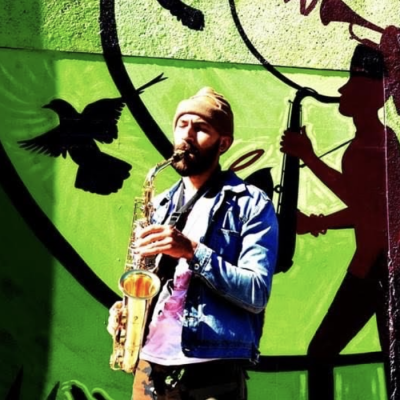 Jordan M. Hamilton is a multi-disciplinary artist based in the Twin Cities. Bridging spirit aspirations and connections to earthly transformations & expressions, Jordan’s work reflects realities and explores cosmic & elemental energies through abstract and surrealist painting, iconography, sculpture, collage, adornment, puppetry, mixed media, and music. Jordan has worked as a teaching artist since 2007 with various organizations and schools, locally & internationally. His work has been featured in exhibitions, on streets, and on stages throughout the Twin Cities.
Jordan M. Hamilton is a multi-disciplinary artist based in the Twin Cities. Bridging spirit aspirations and connections to earthly transformations & expressions, Jordan’s work reflects realities and explores cosmic & elemental energies through abstract and surrealist painting, iconography, sculpture, collage, adornment, puppetry, mixed media, and music. Jordan has worked as a teaching artist since 2007 with various organizations and schools, locally & internationally. His work has been featured in exhibitions, on streets, and on stages throughout the Twin Cities.
Jordan is a founding member of the Power of Vison Mural Project, a member of the Million Artist Movement, Voice of Culture, and a member of Creatives After Curfew mural collective. He is the creator of Ancestral Aspects Adornment.
Rivers Toward Healing the Hurt: Art, Song & Poetry for Philando Castile
With artists Jordan Hamilton and Jayanthi Rajasa
Saturday, September 9, 1 – 4 PM
Philando Castile Peace Garden
Larpenteur Avenue West, Falcon Heights
South side of Larpenteur between Cleveland and Snelling
Sequoia Hauck, Artist • Prairie|Concrete
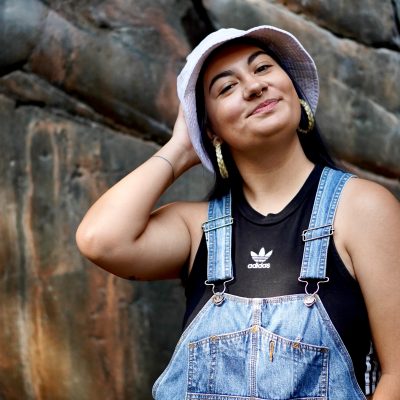
Sequoia Hauck (they/them) is a queer, non-binary, two-spirit, Anishinaabe and Hupa filmmaker and interdisciplinary artist and director who is interested in creating new work that explores ways to decolonizes the process of art-making. Their work weaves Indigenous epistemologies, queer identity and the possibilities of Indigenous futurism. They make art surrounding the narratives of continuation and resiliency among their communities. Sequoia is a 2023 Jerome Hill Artist Fellow and First Peoples Fund Cultural Capital Fellow as well as an Aniccha Arts Artistic Associate.
Project: Prairie|Concrete is an outdoor embodied movement project by lead artist, Pramila Vasudevan and the Aniccha Arts collaborative, commissioned by Public Art St. Paul (PASP). This project will bring visibility to plant cycles and growing practices through embodied listening and movement sessions with communities in St. Paul, Minnesota. The commission will unfold across 3 City of St. Paul Parks – Frogtown Farm, Hidden Falls Regional Park and Western Sculpture Park – through one rehearsal, 3 movement workshops, and one event at each site as part of the first Wakpa Triennial Arts Festival.
Location: Frogtown Farm, Hidden Falls Regional Park, Western Sculpture Park
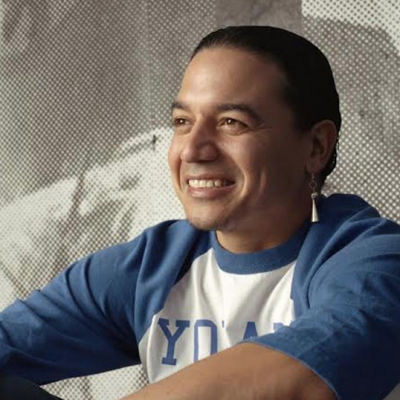
Votan Henriquez
@votanik
Founder of NSRGNTS and known for their powerful city murals, Votan Henriquez (Maya/Nahua) is a multifaceted street artist based out of LA and Albuquerque. Votan grew up amidst the birth of Los Angeles street art which involved tagging, graffiti and wheatpasting to create powerful statements in community spaces. Votan has traveled around the world, participating in mural festivals in South America and on hip-hop graffiti tours in the U.S. and Europe, and was an artist-in-residence in Dubai. In addition to his work with NSRGNTS, Votan plans to further expand his creative endeavors to include an upcoming podcast and documentary with his wife Leah Lewis.
Project: Mural in the Creative Enterprise Zone for Chroma Zone Mural & Art Festival 2023
Dates: September 14, 15 & 16
Location: Creative Enterprise Zone (CEZ), a district centered on the Raymond-University neighborhood of Saint Paul: Click here for a Map of all the Murals in the CEZ.
Visit Chroma Zone for more event info.
Kristine Heykants, Artist • It's the People
Kristine Heykants is a digital media artist with a curiosity about the influence of patriarchal traditions on women’s lives. She has long used varying genres of photography to examine gender roles and their presentation in history, religion and the media, as she seeks to provide a counterpoint to the mainstream narrative. Whether composing a portrait in an evocative location or in the studio, her artistic practice centers the stories of her subjects as community members. Carl Jung’s archetypes provide her with a framework for looking at the past, as she thinks about symbols and behaviors that have existed throughout time in the unconscious mind of us all. Working in a straight-forward and unromanticized photographic approach underscores the foundation of her work in the realism of contemporary life.
Location: Hennepin Theatre District
Project: Hennepin Theatre Trust’s 2023-24 edition of It’s the People features large-scale photo banners along Hennepin Avenue in downtown Minneapolis. This public art initiative is inspired by the exceptional, everyday people whose experiences, contributions and stories create the unique vibrancy of our shared communities.
Hong Hong, Artist • Paper Is People: Decolonizing Global Paper Cultures
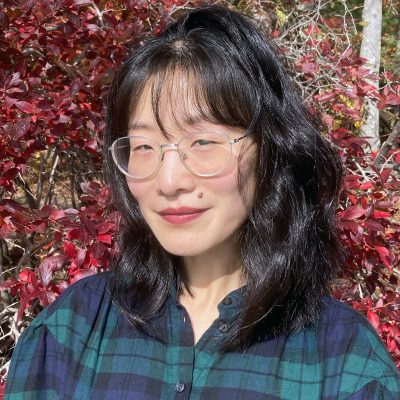
Born in Hefei, Anhui, China, Hong Hong (she/hers) earned a BFA from State University of New York at Potsdam and MFA from University of Georgia. Since 2015, she has traveled to faraway and distinct locations to create site-responsive, monumental paper-works. In this nomadic practice, ancestral methods of Chinese paper-making coalesce with painting and monastic rituals. Recent projects map interstitial relationships between exile, landscape and the Chinese Diaspora through cartographic, symbolic, temporal and material languages. Hong is the recipient of a United States Artist Fellowship (2023), a Carnegie Foundation Fellowship at MacDowell (2020), a Helen Frankenthaler Foundation Fellowship at Vermont Studio Center (2019), an Artistic Excellence Fellowship from the Connecticut Office of Arts (2019), and a Creation of New Work Grant from the Edward C. And Ann T. Roberts Foundation (2018 – 2019). She currently lives and works in Massachusetts.
Location: Minnesota Center for Book Arts
Project: Paper Is People: Decolonizing Global Paper Cultures, co-curated by Tia Blassingame and Stephanie Sauer, offers a new definition of paper within a global and decolonial framework, opening up a conversation around what paper is across cultures today. In the Indigenous and oral cultures represented here, weavings, tapestries, and other handmade substrates act as vessels and embodiments of collective culture and memory. See paper samples and source materials, watch papermaking processes from source to finish, read interviews and watch videos from traditional practitioners, experience how contemporary artists are finding new applications for ancient technologies, and participate in a variety of workshops and talks. Join us at mnbookarts.org/paper-is-people
Alexa Horochowski, Artist • Post Tenebras Lux, After Darkness, Light • Groundwork (Dreamsong)
Read the interview with Alexa Horochowski
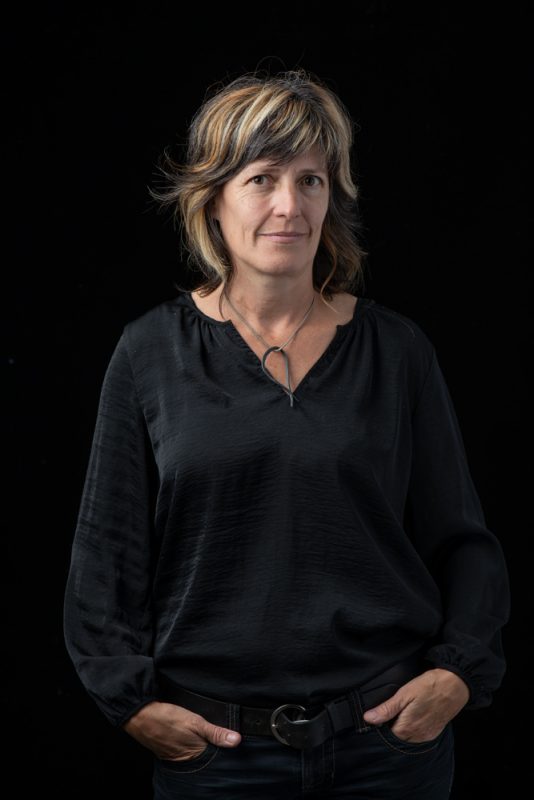
Minneapolis-based artist Alexa Horochowski’s work exists at the intersection of what is human and what is not. Informed by a life immersed in radically different landscapes — the desolate Argentine fringes of Patagonia’s Atlantic coast where she was raised, and the fertile Midwest woodlands hugging the great lakes — chance encounters with various materials, natural or man-made, often provide a starting point for her works in sculpture, photography, and video. Drawing from natural substances such as Antarctic kelp, obsidian, and organic matter, Horochowski constructs sculptures and assemblages that emphasize human impermanence within geological deep time. By exploring the intersection of the human and natural worlds, her interdisciplinary practice explores how political upheaval and man-made climate change reshape the temporal construction of memory and meaning. Alexa Horochowski is a dual citizen of Argentina and the United States. Her art practice includes sculpture, photography, and video. Artist residencies at Forest Island Project, Mammoth Lakes, CA (2018), MAM, Chiloé (2017), and CASAPOLI, Coliúmo (2013) significantly impacted her material and geopolitical research into the interrelationship between the environment and humankind. Horochowski holds a Master of Fine Arts from the University of Michigan, a Bachelor of Art in Creative Writing, and a Bachelor of Journalism from the University of Missouri. Her artwork has been exhibited in Minnesota at the Walker Art Center, the Minneapolis Institute of Art, Highpoint Center for Printmaking, the Rochester Art Center; the Nemeth Art Center, and The Soap Factory. She has also exhibited nationally and internationally. Selected fellowships include a Warhol Visual Arts Fund (2022), Efroymson Artist Fellowship (2018), McKnight Visual Artist Fellowships (2019/2014/2003), Artist Initiative Grants (2014/2012), and a Bush Artist Fellowship (2004). Horochowski teaches studio arts at St. Cloud State University.
Read our interview with Alexa Horchowski
Location: Moon Palace Books & Dreamsong
Projects: Post Tenebras Lux, After Darkness, Light serves as a memorial to all the lives lost to Covid-19 and a beacon awakening us toward healing our more-than-human world. The gold logo on the banner is a modified image of the Eye of Providence, found on the US$1 bill and on the Great Seal of the United States. A rendering of the coronavirus orb with spike proteins takes the place of the eye’s iris and looks back at us. Able to upend global markets and instill fear, novel viruses like the coronavirus also propel us to question the status quo and imagine a future where we tread lightly on this biosphere, we call Earth. The juxtaposition of these images prompts questions about the intertwining of global financial networks and biological networks that link all humanity. The Capitalocene refers to the current geologic epoch in which the capitalist formula of unbridled accumulation has penetrated all aspects of the planet’s biophysical environment, to a degree where the capitalist system’s survival is an existential threat to the survival of humanity. Post Tenebras Lux speculates on a post-human, life-sustaining, ecology of repair.
Groundwork, presented by Dreamsong, is a group exhibition that takes terra firma as both subject and medium. A signifier of place, territory, and identity, a wellspring of life-giving nutrients, and a site of conflict over land-based indigenous rights and environmental protection, soil offers a rich prism through which the present may be both imagined and imaged. Through excavating diverse histories in artworks that take the ground as subject and material, the exhibition aims to encourage discussion about its preservation, its meaning, the claims that are made to it, and the sustenance, both spiritual and physical, that we derive from it.
HOTTEA, Artist • Kismet
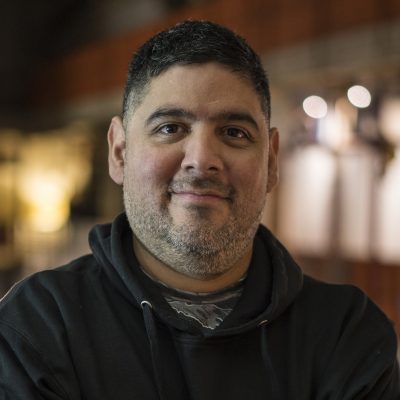
Artist HOTTEA began his work with typography on fences, turning an ordinary everyday object into something designers and artists use each day – the grid. The foundation behind the work of HOTTEA is to use the existing infrastructure and create an artwork or idea that is in harmony within the given space. In addition to adapting to the physical qualities of a space or surface – the artist plays close attention to the movement and life in and around the space. When experiencing the artist’s work – you almost feel as if the piece was designed for you because you are exactly who he was thinking of. When the viewer has a personal connection with a piece of artwork, there is a good chance it will become a lasting memory and remind that person of the space. When artwork is able to create a lasting impression, even after the artwork is gone, the artwork lives on forever within the subconscious of the viewer.
Project: Kismet: A hypothetical force or personified power that determines the course of the future events. After meeting with Toua Xiong, the creator of HmongTown Marketplace, and his family, it felt a lot like kismet. While listening to Toua talk about growing up and how much it impacted the future, I wanted this installation to reflect his family history and the journey they have been on. This installation functions a lot like a timeline in that it depicts a series of events in chronological order via a series of pictograms. The images are rendered in yarn attached to a grid. As you walk underneath the installation, the images change, following the stories and memories shared directly with me from Toua and his family. I hope to capture the spirit and passion behind these individuals to portray a sense of family, love and connection. Even though this is one family's story, they express many concepts and beliefs shared by many which embody the idea of interdependence.
Location: HmongTown Marketplace
Kahlil Robert Irving, Artist • Groundwork
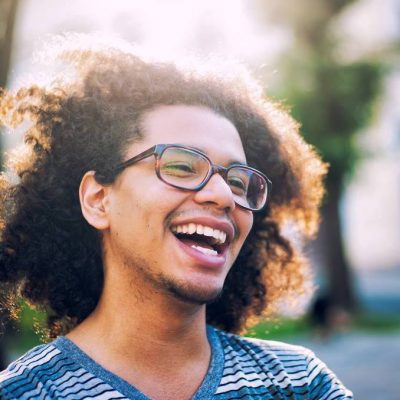 Kahlil Robert Irving is an artist born in San Diego, California, in 1992, currently living and working in the USA. He attended the Sam Fox School of Design and Visual Art, Washington University, in St. Louis (MFA Fellow, 2017) and the Kansas City Art Institute (BFA, Art History and Ceramics, 2015). In December 2021 Irving opened his first museum solo exhibition - Projects: Kahlil Robert Irving at the Museum of Modern Art. Irving recently participated in Social Works II at Gagosian Gallery in London. He has also participated in the Singapore Biennale, Singapore; Soft Water Hard Stone; The New Museum Triennial; and Making Knowing at the Whitney Museum of Art. Works by Irving have been included in group exhibitions at the Abrons Art Center, New York; The Anderson Collection at Stanford University, San Fransisco; and Mass MOCA, North Adams. He was an Artist in Residence at Art Omi in summer 2018. Also, he was awarded the Louis Comfort Tiffany Foundation Biennial Award in 2019 and the Joan Mitchell Foundation Grant in 2020. Irving’s work is in the collections of the Ken Ferguson Teaching Collection at the Kansas City Art Institute, Kansas City, Missouri; J.P Morgan Chase Art Collection, New York, New York; the Nerman Museum of Contemporary Art, Overland Park, Kansas; the Carnegie Museum of Art, Pittsburgh, Pennsylvania; the RISD Museum, Providence, Rhode Island; the Riga Porcelain Museum, Latvia; the Foundation for Contemporary Ceramic Art, Kecskemet, Hungary; and the Whitney Museum of American Art, New York. In 2018, Irving’s first institutional solo exhibition took place at Wesleyan University’s Center for the Arts, Connecticut, and was accompanied by a full-color catalogue with essays and an interview. In 2023, Irving will present a solo exhibition at the Walker Art Center.
Kahlil Robert Irving is an artist born in San Diego, California, in 1992, currently living and working in the USA. He attended the Sam Fox School of Design and Visual Art, Washington University, in St. Louis (MFA Fellow, 2017) and the Kansas City Art Institute (BFA, Art History and Ceramics, 2015). In December 2021 Irving opened his first museum solo exhibition - Projects: Kahlil Robert Irving at the Museum of Modern Art. Irving recently participated in Social Works II at Gagosian Gallery in London. He has also participated in the Singapore Biennale, Singapore; Soft Water Hard Stone; The New Museum Triennial; and Making Knowing at the Whitney Museum of Art. Works by Irving have been included in group exhibitions at the Abrons Art Center, New York; The Anderson Collection at Stanford University, San Fransisco; and Mass MOCA, North Adams. He was an Artist in Residence at Art Omi in summer 2018. Also, he was awarded the Louis Comfort Tiffany Foundation Biennial Award in 2019 and the Joan Mitchell Foundation Grant in 2020. Irving’s work is in the collections of the Ken Ferguson Teaching Collection at the Kansas City Art Institute, Kansas City, Missouri; J.P Morgan Chase Art Collection, New York, New York; the Nerman Museum of Contemporary Art, Overland Park, Kansas; the Carnegie Museum of Art, Pittsburgh, Pennsylvania; the RISD Museum, Providence, Rhode Island; the Riga Porcelain Museum, Latvia; the Foundation for Contemporary Ceramic Art, Kecskemet, Hungary; and the Whitney Museum of American Art, New York. In 2018, Irving’s first institutional solo exhibition took place at Wesleyan University’s Center for the Arts, Connecticut, and was accompanied by a full-color catalogue with essays and an interview. In 2023, Irving will present a solo exhibition at the Walker Art Center.
Location: Dreamsong
Project: Groundwork, presented by Dreamsong, is a group exhibition that takes terra firma as both subject and medium. A signifier of place, territory, and identity, a wellspring of life-giving nutrients, and a site of conflict over land-based indigenous rights and environmental protection, soil offers a rich prism through which the present may be both imagined and imaged. Through excavating diverse histories in artworks that take the ground as subject and material, the exhibition aims to encourage discussion about its preservation, its meaning, the claims that are made to it, and the sustenance, both spiritual and physical, that we derive from it.
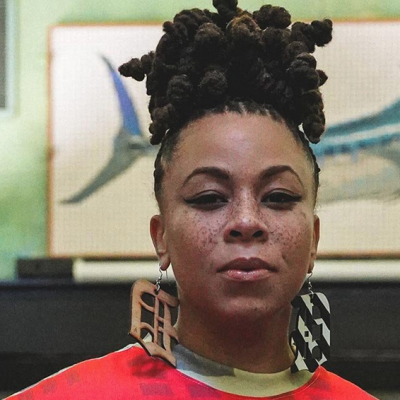
Sydney James (Detroit)
sydneygjames.com
Detroit-bred and based Interdisciplinary artist and 2017 Kresge Fellow Sydney G. James earned her BFA at the College for Creative Studies in 2001 and began her career as an art director in advertising. Sydney moved to Los Angeles in 2004, to expand her career as a visual artist in the film and television industry and earned her master’s degree in secondary education. She returned to in 2011 and has become one of the leading creative voices in southeast Michigan. Primarily known for large murals, Sydney’s work explores themes of the racial and gender positioning of the black woman in America as “last” or “least among others” in society. Her portraits and murals seek to reposition this narrative of the black woman’s visibility and importance bringing them to the forefront of the conversation. Sydney is a co-founder of the biannual BLKOUT Walls street mural festival which debuted in Detroit in 2021.
Project: Mural in the Creative Enterprise Zone for Chroma Zone Mural & Art Festival 2023
Dates: September 14, 15 & 16
Location: Creative Enterprise Zone (CEZ), a district centered on the Raymond-University neighborhood of Saint Paul: Click here for a Map of all the Murals in the CEZ.
Visit Chroma Zone for more event info.
Amy Sundby Jeanchayaphum, Artist • It’s the People
Amy Sundby Jeanchayaphum believes photography, like art, is universal. Photographs tell a story that words simply cannot convey. Images visually connect us to moments, memories and places. Communication and understanding are key. Jeanchayaphum successfully collaborates and co-creates with clients to achieve stunning visual imagery. While shooting, she continually adapts to unique personalities, settings and conditions. She has found that the best photographs often emerge organically. With more than 20 years of national and international experience, a BFA from the University of Minnesota, her creative skills and talents are deeply rooted. Born in the Midwest, she has an inherent understanding of people, land, traditions and a knowledge of what people hold near and dear. Connecting to people and stories generates the inspiration and fuel for her creative nature.
Location: Hennepin Theatre District
Project: Hennepin Theatre Trust’s 2023-24 edition of It’s the People features large-scale photo banners along Hennepin Avenue in downtown Minneapolis. This public art initiative is inspired by the exceptional, everyday people whose experiences, contributions and stories create the unique vibrancy of our shared communities.
Seitu Jones, Artist • artARK • Groundwork (Dreamsong)
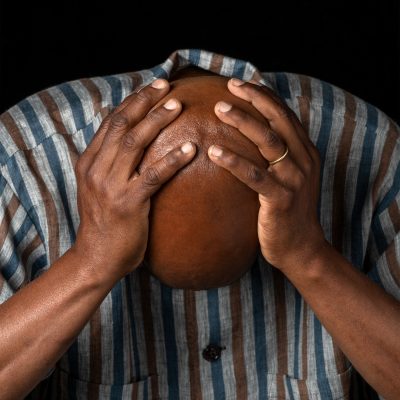 Integrating art, nature and place, Seitu Jones has created over 30 large-scale public artworks. He was Millennium artist-in-residence for 651 Arts, in Brooklyn, NY, and was the City of Minneapolis’ first Artist-in-Residence.
Integrating art, nature and place, Seitu Jones has created over 30 large-scale public artworks. He was Millennium artist-in-residence for 651 Arts, in Brooklyn, NY, and was the City of Minneapolis’ first Artist-in-Residence.
Working with his neighbors, Trust for Public Land and the City of St. Paul. he helped create Frogtown Farm, a 5-acre organically certified farm located inside a new 12-acre park St. Paul. Seitu was awarded a Forecast Public Art Grant to build a floating sculpture to act as a research vessel for the Mississippi River and is the recipient of the 2017 Distinguished Artist Award from the McKnight Foundation.
A 2013 Joyce Award, from the Joyce Foundation allowed Seitu to develop, with Public Art Saint Paul, CREATE: The Community Meal, a dinner for 2000 people at a table ½ mile long that focused on access to healthy food. His 2017 HeARTside Community Meal for 250 people in Grand Rapids, MI, was awarded the Grand Juried Prize for ArtPrize Nine. In 2019, Seitu created a meal for the Indianapolis Art Museum, and in 2021 he created a meal for the Bemis Center for Contemporary Art in Omaha.
Locations: artARK at the Watergate Marina and other locations; Groundwork exhibition at Dreamsong.
artARK Schedule and Events:
- artARK public viewing: July 20 at 6 PM, Watergate Marina
- artARK public viewing: July 25 at 6 PM, Mississippi Watershed Management Organization
- artARK public viewing: July 27 11 AM-1 PM, Watergate Marina
- artARK public viewing: August 3, 6:30 PM, Capitol Region Watershed District
- On August 3, 2023, join Seitu Jones for a (dry land) tour of artARK, a floating platform for artistic and scientific exploration of the Mississippi River. Seitu Jones’s artARK and this program are part of the Wakpa Triennial, presented by Public Art Saint Paul. Seitu and his team will share their inspiration and vision for this project including boat building techniques and a river-based curriculum.
Masanari Kawahara, Artist • Prairie|Concrete

Masanari Kawahara 川原正也 is a mover/multidisciplinary theatre/teaching artist from Japan. His performance training began in Twin Cities where he learned from Theatre de la June Lune, creating physical theatre in ensemble; via In the Heart of the Beast Theatre, puppetry and working with objects in community setting; past 13 years focusing his time in Butoh movement practice via Gadu Doushin, which brings so much joy, stillness and freedom.
Location: Frogtown Farm, Hidden Falls Regional Park, Western Sculpture Park
Project: Prairie|Concrete is an outdoor embodied movement project by lead artist, Pramila Vasudevan and the Aniccha Arts collaborative, commissioned by Public Art St. Paul (PASP). This project will bring visibility to plant cycles and growing practices through embodied listening and movement sessions with communities in St. Paul, Minnesota. The commission will unfold across 3 City of St. Paul Parks – Frogtown Farm, Hidden Falls Regional Park and Western Sculpture Park – through one rehearsal, 3 movement workshops, and one event at each site as part of the first Wakpa Triennial Arts Festival.
Douglas Kearney, Artist • Silverwood Poetry Trail
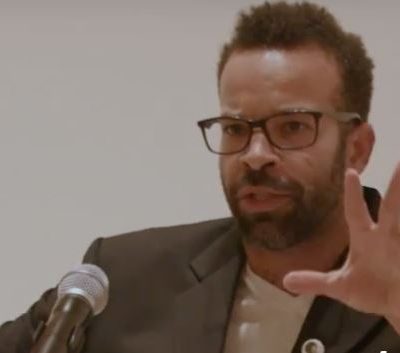 Douglas Kearney has published eight books ranging from poetry to essays to libretti. His most recent collection, Optic Subwoof, collects lectures from Kearney’s Bagley Wright Lecture Series. His 2021 collection, Sho (Wave Books), is a Griffin Poetry Prize and Minnesota Book Award winner, and a National Book Award, Pen America, and Big Other Book Award finalist. He is the 2021 recipient of OPERA America’s Campbell Opera Librettist Prize, created and generously funded by librettist/lyricist Mark Campbell. Kearney is a 2022 McKnight Writing Fellow. A Whiting Writer’s and Foundation for Contemporary Arts Cy Twombly awardee with residencies/fellowships from Cave Canem, The Rauschenberg Foundation, and others, he teaches Creative Writing at the University of Minnesota–Twin Cities.
Douglas Kearney has published eight books ranging from poetry to essays to libretti. His most recent collection, Optic Subwoof, collects lectures from Kearney’s Bagley Wright Lecture Series. His 2021 collection, Sho (Wave Books), is a Griffin Poetry Prize and Minnesota Book Award winner, and a National Book Award, Pen America, and Big Other Book Award finalist. He is the 2021 recipient of OPERA America’s Campbell Opera Librettist Prize, created and generously funded by librettist/lyricist Mark Campbell. Kearney is a 2022 McKnight Writing Fellow. A Whiting Writer’s and Foundation for Contemporary Arts Cy Twombly awardee with residencies/fellowships from Cave Canem, The Rauschenberg Foundation, and others, he teaches Creative Writing at the University of Minnesota–Twin Cities.
Location: Silverwood Park
Project: Silverwood’s Poetry Trail is a self-guided audio tour featuring work by local and regional poets and writers. Six stops are located next to a bench along a paved trail that loops around the park moving from forest to lake to prairie. The 2023 - 24 poets were curated by Su Hwang.
R.J. Kern, Artist • It’s the People
R. J. Kern is a Minneapolis-based artist whose work explores ideas of home, ancestry and the sense of place. Inspired by master painters of the 19th-century, he embraces the heightened expressivity of natural and artificial lighting techniques paired with tableaux narration. His awards and accolades include three Artist Initiative Grants from the Minnesota State Arts Board (2016, 2018, 2020). He was the Commemorative Artist for the 2019 Minnesota State Fair. His work has been presented in a number of publications, including a feature in National Geographic. Selected collections include: Minneapolis Institute of Art, Plains Art Museum, Minnesota Historical Society and Museum of Fine Arts in Houston.
Location: Hennepin Theatre District
Project: Hennepin Theatre Trust’s 2023-24 edition of It’s the People features large-scale photo banners along Hennepin Avenue in downtown Minneapolis. This public art initiative is inspired by the exceptional, everyday people whose experiences, contributions and stories create the unique vibrancy of our shared communities.
Stacy King, Artist • The Sounds of Frogtown
Location: Center For Hmong Arts and Talent
Laura LeBlanc, Artist • Flower Power VII
Flower Power artists, when you collect all our efforts together, we represent layers and decades of working for truth, goodness, peace, and gentle wisdom. We are young and old, each with a different story that brings us to a shared world vision. People and flowers are both powerful species on Earth. Flower Power has organically grown out of the Minnesota landscape, out of public demonstration and opposition to state violence, incarceration, and climate crisis. We are individuals trying to present a more compassionate world; our cut flower installations are like portraits that help us deal with complex and abstract problems of injustice. We dedicate a whole day to paying respect to the injustices served, the hardships suffered, and the joy that persists. It’s a time when we use our art and spend it as a community to change the course of past directions. We are different minds and yet of the same heart. We stand with humanity and the Earth as protectors of land and life.
Project: Flower Power VII
Saturday, August 5, sunrise to sunset
Indian Burial Mounds Regional Park
10 Mounds Boulevard, Saint Paul 55106
Oyate Hotanin, a Native-led arts, thought, and social justice organization, presents of Flower Power VII, an annual event aimed at helping us all to remember who we are, to work to eliminate our incarceration state, rescue our planet, and lead a worldwide movement of a billion good relatives, Flower Power centers on the creation of an ephemeral work of art, made from cut flowers. Over the course of a day, artists arrange the blooms in a mosaic-like pattern on the grass surrounding the sculpture, Sacred Bowl, by Ojibwe artist Duane Goodwin.
Location:
Saturday, August 5, sunrise to sunset
Indian Burial Mounds Regional Park
10 Mounds Boulevard, Saint Paul 55106
Chris Larson, Artist • The Residue of Labor
Read the interview with Chris Larson
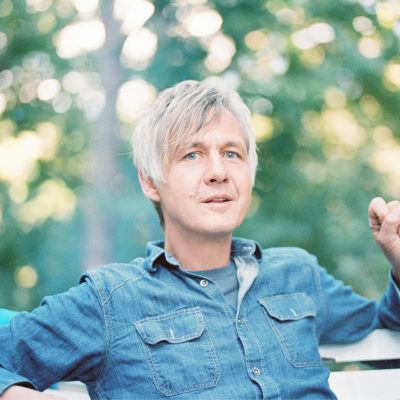 Chris Larson is a multimedia artist that lives and works in Saint Paul, Minnesota. He integrates actions of sculpture, video, photography and drawing to respond to specific architectural spaces, sites, and their histories. Using relocation, replication, and repetition, he questions the inextricable relationships between body, machine, labor, and home. He disassembles the idea of the permanence of architecture, and introduces a new concept of fluid architecture that he uses to analyze the illusion of stability and draw attention to and challenge the unintended consequences of progress. He acknowledges that the conversations of the everyday hold vast potential for the examination of socio-historical complexities and the transcendental realities of object and body. Through gathering, archiving and restoration as a means of transformation, Larson’s work continues to evoke actions of reverence and renewal.
Chris Larson is a multimedia artist that lives and works in Saint Paul, Minnesota. He integrates actions of sculpture, video, photography and drawing to respond to specific architectural spaces, sites, and their histories. Using relocation, replication, and repetition, he questions the inextricable relationships between body, machine, labor, and home. He disassembles the idea of the permanence of architecture, and introduces a new concept of fluid architecture that he uses to analyze the illusion of stability and draw attention to and challenge the unintended consequences of progress. He acknowledges that the conversations of the everyday hold vast potential for the examination of socio-historical complexities and the transcendental realities of object and body. Through gathering, archiving and restoration as a means of transformation, Larson’s work continues to evoke actions of reverence and renewal.
Project:
The Residue of Labor is an archival body of work that examines intensive labor through the conduit of an abandoned garment factory in rural Tennessee. As garment labor became predominantly outsourced in the late 90s, work was unceremoniously taken from rural communities and a history of human labor left behind. Through the curation of objects recovered from the factory and objects fabricated in his studio, Larson creates a narrative out of the remains of what was once a booming industrial operation. Individual personhood begins to surface from the details as Larson interrelates the residue of life in the factory.
In the fall of 2018 with an Artist Guggenheim Fellowship, Chris Larson moved his studio from St. Paul, Minnesota to the factory in Tennessee. Larson worked there for two years, collecting, archiving, and acting in performances that contemplate the ways the architecture and its forgotten objects have taken on the imprint of uncelebrated labor. In his new body of work, Larson engages the abstraction of labor in a place of heavy repetition. The exhibition features sculpture, video, drawing, painting, and photography all made from materials recovered from the factory.
Location: 425 Wabasha St. N., St Paul, MN 55102
On view Thursdays 12-6 pm & Saturdays 12-4 pm
Upcoming Events:
Artist Talk and Reception for The Residue of Labor by Chris Larson
Thursday, August 17, 6 PM – 8:30 PM
Project Space for The Residue of Labor
Free of charge.
Grace Building
425 Wabasha St. N.
Saint Paul, MN 55102
Hear from Chris Larson about his major project, called The Residue of Labor, on view at the Grace Building in downtown Saint Paul. This massive project presents more than 35 artworks that Larson created using the remnants left behind when a Ralph Lauren shirt factory closed in Tennessee. In a display of stunning artistic imagination, Larson has re-worked materials ranging from employee time punch cards, thousands of spindles of thread, doors to bathroom stalls, sewing machines, and other tools of textile production. The well worn materials are both re-presented as art objects and also transformed into new expressions, all still imbued with the presence of the people who worked in the factory, who, by Larson’s estimate, invested a combined total of more than 25 million hours of labor. Experience the tour de force 8-minute video, The Stillness of Labor, that culminates the exhibition.
Artist Talk at 6 PM. Reception runs from 6:30 – 8:30 PM.
Chenta Laury, Artist • Paper Is People: Decolonizing Global Paper Cultures
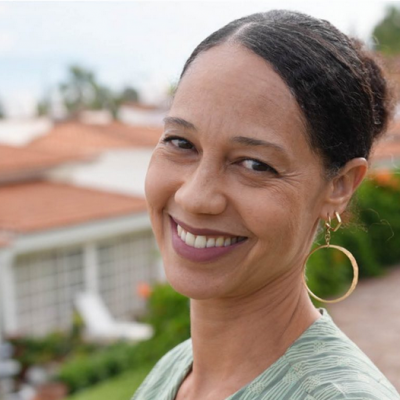 Originally from O’ahu, Chenta Laury is a Maui-based artist and educator. She has exhibited in shows throughout the country and her work is held in numerous private collections, including the Four Seasons Hotels & Resorts, as well as in the Hawai’i State Art Museum in Honolulu. Chenta received an undergraduate degree in studio art and art history from Oberlin College, a Masters from Harvard University, and a Certificate in Applied Arts from the Fiber Crafts Studio in Chestnut Ridge, NY. Chenta’s recent work straddles the lines between craft and fine art, representational, abstract, and conceptual vocabularies, and merges artistic traditions related to her biological origins: patchwork quilting (African-American) and felting (Finnish), with tapa (barkcloth) and artistic traditions from Hawai`i.
Originally from O’ahu, Chenta Laury is a Maui-based artist and educator. She has exhibited in shows throughout the country and her work is held in numerous private collections, including the Four Seasons Hotels & Resorts, as well as in the Hawai’i State Art Museum in Honolulu. Chenta received an undergraduate degree in studio art and art history from Oberlin College, a Masters from Harvard University, and a Certificate in Applied Arts from the Fiber Crafts Studio in Chestnut Ridge, NY. Chenta’s recent work straddles the lines between craft and fine art, representational, abstract, and conceptual vocabularies, and merges artistic traditions related to her biological origins: patchwork quilting (African-American) and felting (Finnish), with tapa (barkcloth) and artistic traditions from Hawai`i.
Location: Minnesota Center for Book Arts
Project: Paper Is People: Decolonizing Global Paper Cultures, co-curated by Tia Blassingame and Stephanie Sauer, offers a new definition of paper within a global and decolonial framework, opening up a conversation around what paper is across cultures today. In the Indigenous and oral cultures represented here, weavings, tapestries, and other handmade substrates act as vessels and embodiments of collective culture and memory. See paper samples and source materials, watch papermaking processes from source to finish, read interviews and watch videos from traditional practitioners, experience how contemporary artists are finding new applications for ancient technologies, and participate in a variety of workshops and talks. Join us at mnbookarts.org/paper-is-people
Aimee Lee, Artist • Paper Is People: Decolonizing Global Paper Cultures
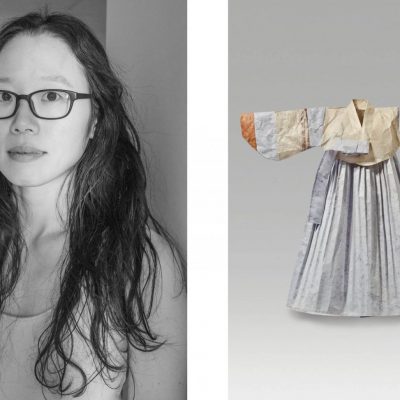 Aimee Lee is an artist who makes paper, writes, and advocates for Korean papermaking practices. Designated as an Ohio Arts Council Heritage Fellow, she is a two-time Fulbright scholar to Korea, where she learned about making hanji, its applications, and its tools, and has studied with various Korean national and provincial holders of intangible cultural heritage since 2009. Her research is embodied in her artwork, teaching, and practice at her dedicated hanji studio in South Euclid, Ohio.
Aimee Lee is an artist who makes paper, writes, and advocates for Korean papermaking practices. Designated as an Ohio Arts Council Heritage Fellow, she is a two-time Fulbright scholar to Korea, where she learned about making hanji, its applications, and its tools, and has studied with various Korean national and provincial holders of intangible cultural heritage since 2009. Her research is embodied in her artwork, teaching, and practice at her dedicated hanji studio in South Euclid, Ohio.
Location: Minnesota Center for Book Arts
Project: Paper Is People: Decolonizing Global Paper Cultures, co-curated by Tia Blassingame and Stephanie Sauer, offers a new definition of paper within a global and decolonial framework, opening up a conversation around what paper is across cultures today. In the Indigenous and oral cultures represented here, weavings, tapestries, and other handmade substrates act as vessels and embodiments of collective culture and memory. See paper samples and source materials, watch papermaking processes from source to finish, read interviews and watch videos from traditional practitioners, experience how contemporary artists are finding new applications for ancient technologies, and participate in a variety of workshops and talks. Join us at mnbookarts.org/paper-is-people
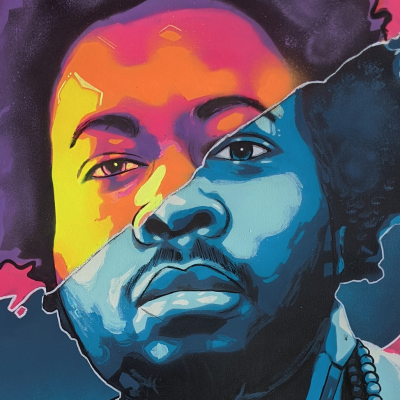
Reggie LeFlore
@ral86
Reggie LeFlore is a visual artist who creates to praise individual and collective stories through human portraiture. LeFlore’s inspirations are drawn from the concepts and philosophies of Street Art culture and Illustration - using aerosol, acrylic paint and graphic design techniques to construct pieces in varying styles, scales and surfaces. He uses visual arts to amplify his surrounding environments and the narratives contained within them. His visual arts style and identity grew from the wonder and excitement he felt from first seeing murals and illustrations as a child. These works of art influenced him to learn graphic design and illustrative techniques commonly seen in comic books, animations and pop culture elements of the 90s and early 2000s.
Project: Mural in the Creative Enterprise Zone for Chroma Zone Mural & Art Festival 2023
Dates: September 14, 15 & 16
Location: Creative Enterprise Zone (CEZ), a district centered on the Raymond-University neighborhood of Saint Paul: Click here for a Map of all the Murals in the CEZ.
Visit Chroma Zone for more event info.
Stephanie A. Lindquist, Artist • Groundwork • Second Shift Resident Exhibition
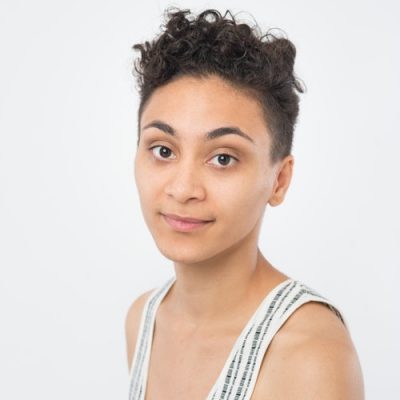 Stephanie A. Lindquist is a visual artist and cultural producer from Los Angeles. Her work is rooted in experimentation and research particularly in relationship with plants, history, and materiality. Lindquist received her BA in Visual and Urban Studies from Columbia University in 2009 and MFA in Interdisciplinary Art and Social Practice from the University of Minnesota in 2022. Her work has been exhibited throughout New York City and more recently in the Midwest. She looks forward to participating in a forthcoming ecological exhibition at the Law Warschaw Gallery at Macalester College in summer/fall 2023. Stephanie is presently an Artist-in-Residence at Second Shift Studios and Macalester College where she is thinking and feeling through her relationship with the Mississippi River among activists, artists, humanities scholars, and scientists.
Stephanie A. Lindquist is a visual artist and cultural producer from Los Angeles. Her work is rooted in experimentation and research particularly in relationship with plants, history, and materiality. Lindquist received her BA in Visual and Urban Studies from Columbia University in 2009 and MFA in Interdisciplinary Art and Social Practice from the University of Minnesota in 2022. Her work has been exhibited throughout New York City and more recently in the Midwest. She looks forward to participating in a forthcoming ecological exhibition at the Law Warschaw Gallery at Macalester College in summer/fall 2023. Stephanie is presently an Artist-in-Residence at Second Shift Studios and Macalester College where she is thinking and feeling through her relationship with the Mississippi River among activists, artists, humanities scholars, and scientists.
Location: Dreamsong & Second Shift
Project: Groundwork, presented by Dreamsong, is a group exhibition that takes terra firma as both subject and medium. A signifier of place, territory, and identity, a wellspring of life-giving nutrients, and a site of conflict over land-based indigenous rights and environmental protection, soil offers a rich prism through which the present may be both imagined and imaged. Through excavating diverse histories in artworks that take the ground as subject and material, the exhibition aims to encourage discussion about its preservation, its meaning, the claims that are made to it, and the sustenance, both spiritual and physical, that we derive from it.
Second Shift Studio’s Resident Group Exhibition is part of the Wakpa Triennial Arts Festival and features the work of the studio’s current resident artists, Cameron Patricia Downey, Jocelyn Suzuka Figueroa, Stephanie Lindquist, and Zoe Cinel. This is an exhibition of the work of the four studio artists in residency at Second Shift Studio, where they have spent the past year working, making, and thinking alongside each other.
Gudrun Lock, Artist • Groundwork
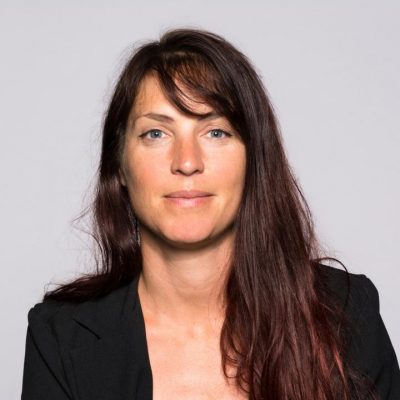 Gudrun Lock works with performance, sculpture, video, painting, and collaborative, socially engaged art practices. In 2019 and 2020 she received grants from the University of Minnesota’s Institute on the Environment and in 2021 and 2022 from their Institute for Advanced Study to engage human and other-than-human partners in a long-term project focused on revitalizing the buffers of active rail land. Lock knows that trees, rocks, and rivers are part of a living metabolism whose transformative powers endure even amidst ongoing extraction, colonialisms, and unsatiated consumption. Born in California, and raised in Montreal, she has lived in Minneapolis for 24 years. Her work has been installed in galleries in the US and Canada, foreclosed homes, empty storefronts, the Atlantic Ocean, and a hole in her backyard.
Gudrun Lock works with performance, sculpture, video, painting, and collaborative, socially engaged art practices. In 2019 and 2020 she received grants from the University of Minnesota’s Institute on the Environment and in 2021 and 2022 from their Institute for Advanced Study to engage human and other-than-human partners in a long-term project focused on revitalizing the buffers of active rail land. Lock knows that trees, rocks, and rivers are part of a living metabolism whose transformative powers endure even amidst ongoing extraction, colonialisms, and unsatiated consumption. Born in California, and raised in Montreal, she has lived in Minneapolis for 24 years. Her work has been installed in galleries in the US and Canada, foreclosed homes, empty storefronts, the Atlantic Ocean, and a hole in her backyard.
Location: Dreamsong
Project: Groundwork, presented by Dreamsong, is a group exhibition that takes terra firma as both subject and medium. A signifier of place, territory, and identity, a wellspring of life-giving nutrients, and a site of conflict over land-based indigenous rights and environmental protection, soil offers a rich prism through which the present may be both imagined and imaged. Through excavating diverse histories in artworks that take the ground as subject and material, the exhibition aims to encourage discussion about its preservation, its meaning, the claims that are made to it, and the sustenance, both spiritual and physical, that we derive from it.
Yue Lor, Artist • The Sounds of Frogtown
Location: Center For Hmong Arts and Talent
Event: Center for Hmong Arts shares Sounds from Frogtown!
Come experience the music and artistry of some youth and emerging musicians in the heart of Frogtown Sat. August 26 from 1pm to 3pm at Century Plaza, 995 University Ave. West Suite 220, St. Paul, MN. Come meet these artists and learn about their story! Modern and Hmong songs will be performed! In addition, the students of CHAT’s summer music program will do a short recital too.
We will have a small reception with refreshments to meet the artists after their performances.
Yue Lor, Gorci Vang, Keng Yang are among the musicians performing.
Gorci Vang was in CHAT’s Youth Leadership Group, writing theatre about issues that Hmong youth deal with such as peer pressure, LGBTQ and mental health issues. She had a passion for singing and performed in choir and enjoys singing to this day.
Keng Chris Yang is a musician based in the Twin Cities. He is a graduate of McNally Smith College of Music in Guitar Performances and Music Business. He’s travel to Thailand several times to teach youth music and has performed in hilltop villages of Thailand to libraries to concert halls. He is a teacher and performer with CHAT and Street Stops and Mountain Tops. He is a big John Mayer fan!
José A. Luis, Perfomer • Prairie|Concrete
 José A. Luis is a Mexican-queer-bilingual-immigrant-choreographer/dancer navigating the complexities of the self/identity in relation to space, time, and the individuals in our lives. The physical, emotional, and mental boundaries we come across are present and blurred in José's approach to dance as he aims to understand the balance of "knowness" and "possibilities". His ten year career as a primary solo artist is informed by individuals inspiring his work, for more: https://www.jose.dance/bio.
José A. Luis is a Mexican-queer-bilingual-immigrant-choreographer/dancer navigating the complexities of the self/identity in relation to space, time, and the individuals in our lives. The physical, emotional, and mental boundaries we come across are present and blurred in José's approach to dance as he aims to understand the balance of "knowness" and "possibilities". His ten year career as a primary solo artist is informed by individuals inspiring his work, for more: https://www.jose.dance/bio.
Location: Frogtown Farm, Hidden Falls Regional Park & Western Sculpture Park
Project: Prairie|Concrete is an outdoor embodied movement project by lead artist, Pramila Vasudevan and the Aniccha Arts collaborative, commissioned by Public Art St. Paul (PASP). This project will bring visibility to plant cycles and growing practices through embodied listening and movement sessions with communities in St. Paul, Minnesota. The commission will unfold across 3 City of St. Paul Parks – Frogtown Farm, Hidden Falls Regional Park and Western Sculpture Park – through one rehearsal, 3 movement workshops, and one event at each site as part of the first Wakpa Triennial Arts Festival.
SaraNoa Mark, Artist • Groundwork
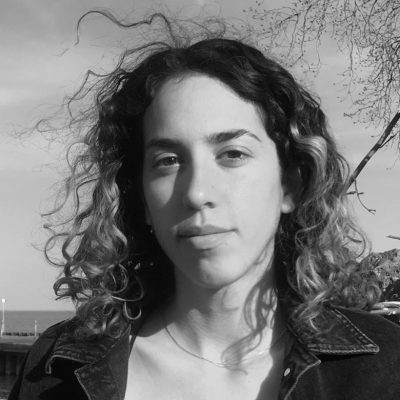 SaraNoa Mark (Bronx, NY) pursues a drawing practice that investigates traces left by time, as they exist in landscapes and in collective memory. SaraNoa's work has been supported by a Fulbright research fellowship in Turkey. SaraNoa has received grants from Artadia, U.S. Embassy Mission Grants Program in Turkey, Luminarts Cultural Foundation, Foundation for Contemporary Art Emergency Grant, John Anson Kittredge Fund, Illinois Arts Council, Department of Cultural Affairs and Special Events Individual Artists Program (DCASE), West Collection LIFTS aquision grant, and a SPARK grant. Upon graduating from the Pennsylvania Academy of the Fine Arts SaraNoa was awarded a European travel scholarship. SaraNoa has been an artist in residence at the Chicago Artists Coalition, Montello Foundation, Wave Hill, the Jackman Goldwasser Residency at the Hyde Park Art Center, the Lois and Charles X. Carlson Painting Residency, Sedona Summer Colony, and Art Kibbutz. Recent exhibitions of their work have taken place at the Chicago Cultural Center, Chicago, IL; Daniel Faira Gallery, Toronto, CA; Bridge Projects, Los Angeles, CA; Davis & Langdale Company, New York, NY; Goldfinch Gallery, Chicago, IL; Sultan Han, Turkey among others. SaraNoa was one of NewCity’s 2021 breakout artists. SaraNoa is a co-director at the 4th Ward Project Space in Chicago.
SaraNoa Mark (Bronx, NY) pursues a drawing practice that investigates traces left by time, as they exist in landscapes and in collective memory. SaraNoa's work has been supported by a Fulbright research fellowship in Turkey. SaraNoa has received grants from Artadia, U.S. Embassy Mission Grants Program in Turkey, Luminarts Cultural Foundation, Foundation for Contemporary Art Emergency Grant, John Anson Kittredge Fund, Illinois Arts Council, Department of Cultural Affairs and Special Events Individual Artists Program (DCASE), West Collection LIFTS aquision grant, and a SPARK grant. Upon graduating from the Pennsylvania Academy of the Fine Arts SaraNoa was awarded a European travel scholarship. SaraNoa has been an artist in residence at the Chicago Artists Coalition, Montello Foundation, Wave Hill, the Jackman Goldwasser Residency at the Hyde Park Art Center, the Lois and Charles X. Carlson Painting Residency, Sedona Summer Colony, and Art Kibbutz. Recent exhibitions of their work have taken place at the Chicago Cultural Center, Chicago, IL; Daniel Faira Gallery, Toronto, CA; Bridge Projects, Los Angeles, CA; Davis & Langdale Company, New York, NY; Goldfinch Gallery, Chicago, IL; Sultan Han, Turkey among others. SaraNoa was one of NewCity’s 2021 breakout artists. SaraNoa is a co-director at the 4th Ward Project Space in Chicago.
Location: Dreamsong
Project: Groundwork, presented by Dreamsong, is a group exhibition that takes terra firma as both subject and medium. A signifier of place, territory, and identity, a wellspring of life-giving nutrients, and a site of conflict over land-based indigenous rights and environmental protection, soil offers a rich prism through which the present may be both imagined and imaged. Through excavating diverse histories in artworks that take the ground as subject and material, the exhibition aims to encourage discussion about its preservation, its meaning, the claims that are made to it, and the sustenance, both spiritual and physical, that we derive from it.
Boo McCaleb, Artist • Constellation: Video Storytelling
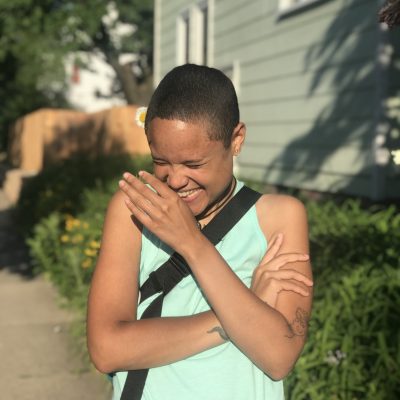 Boo is a video artist whose content creations are rooted in the community and seeks to convey intimacy through art. They believe in the empowerment and immortality of the marginalized through images and digital mediums.
Boo is a video artist whose content creations are rooted in the community and seeks to convey intimacy through art. They believe in the empowerment and immortality of the marginalized through images and digital mediums.
Project: Constellation: Video Storytelling
Constellation is a cohort of seven artists, each creating a short video to be presented in a looped series that will be projected onto the downtown Saint Paul Public Library - George Latimer on Rice Park. Videos shall interact with the architecture of the library building, transforming it into new visions for public space and public knowledge. Artists include: Za’nia Coleman; Boo McCaleb; SEE MORE PERSPECTIVE; Witt Siasoco; Miko Simmons; Jonathan Thunder; and Moira Villiard.
Where:
Rice Park & Saint Paul Public Library - George Latimer Central Library
109 W 4th St, St Paul, MN 55102
Dates and Times:
9/14 - 8:00 PM-9:00 PM - Preview Night
9/15 - 5:00 PM-9:30 PM
9/16 - 5:00 PM-9:30 PM
Cassandra Meyer, Artist • Prairie|Concrete
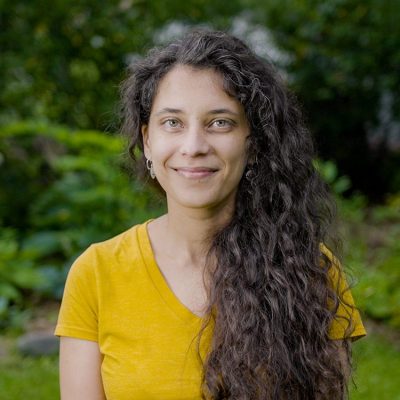 Cassandra Meyer has collaborated with Aniccha Arts on projects since 2015. She graduated from the University of Minnesota with a Bachelor’s degree in Civil Engineering and a double-major in American Indian Studies. Additionally, she has completed graduate work in Sustainable Design. She taught in a Dakota language immersion program for 4 years after her undergrad experience and has now worked at the Minnesota Pollution Control Agency for over 10 years in air quality permitting. She currently sits on the board of a local food co-op, working to support the social and environmental values the co-op promotes. Broadly, Cassandra is interested in amelioration, living with integrity, healing, and humor.
Cassandra Meyer has collaborated with Aniccha Arts on projects since 2015. She graduated from the University of Minnesota with a Bachelor’s degree in Civil Engineering and a double-major in American Indian Studies. Additionally, she has completed graduate work in Sustainable Design. She taught in a Dakota language immersion program for 4 years after her undergrad experience and has now worked at the Minnesota Pollution Control Agency for over 10 years in air quality permitting. She currently sits on the board of a local food co-op, working to support the social and environmental values the co-op promotes. Broadly, Cassandra is interested in amelioration, living with integrity, healing, and humor.
Location: Frogtown Farm, Hidden Falls Regional Park, Western Sculpture Park
Project: Prairie|Concrete is an outdoor embodied movement project by lead artist, Pramila Vasudevan and the Aniccha Arts collaborative, commissioned by Public Art St. Paul (PASP). This project will bring visibility to plant cycles and growing practices through embodied listening and movement sessions with communities in St. Paul, Minnesota. The commission will unfold across 3 City of St. Paul Parks – Frogtown Farm, Hidden Falls Regional Park and Western Sculpture Park – through one rehearsal, 3 movement workshops, and one event at each site as part of the first Wakpa Triennial Arts Festival.
Jane Ramseyer Miller, Artist • ReMembering: Singing Waters
Location: Walker Art Center
Alva Mooses, Artist • Groundwork
Alva Mooses is a New York-based interdisciplinary artist. Through her art practice, she investigates the relationships between bodily traces, migration, and informal semantic systems as they emerge from processes of fugitive mark-making. Her work across print media, cast paper, book arts, and sculpture engages with earth-based materials like volcanic stones, adobe bricks, sand, cement, and clay to create an index of place and signal the memory of geological time. Alva Mooses received her BFA from The Cooper Union and MFA from Yale University. She has exhibited her work, curated exhibitions, and organized educational projects in the U.S. and Latin America for over a decade. She is co-founder/director of the collective LAZO, and serves on the Editorial Advisory Board for the online platform Latinx Spaces. Alva has completed residencies and fellowships at Greenwich House Pottery, The Center for Book Arts, The Lower East Side Print Shop, Socrates Sculpture Park, The Clemente Center, The University of Chicago, and Columbia College, among others. Recent exhibitions include All That Light (Logan Center for the Arts, Chicago), (Be)Longing (TSA, Brooklyn), Space Coiled Like A Serpent (LES Print Shop), You Enter Dancing/ There’s Always Sign (The Clemente Center), Cito, Longe, Tarde, (Haynes Project, Chicago), Se Entra Bailando (Socrates Sculpture Park), Buen Vivir (Mexic-Arte Museum, Austin), Retrato de un Paisaje (Museo Sívori, Buenos Aires), A Day’s Dust (Studio17, Stavanger, Norway), and Internalized Borders (John Jay College). Alva has taught Printmaking, Sculpture, and Drawing at The Cooper Union and Cornell University. She is currently an Associate Professor at Hunter College.
Location:Dreamsong
Project: Groundwork, presented by Dreamsong, is a group exhibition that takes terra firma as both subject and medium. A signifier of place, territory, and identity, a wellspring of life-giving nutrients, and a site of conflict over land-based indigenous rights and environmental protection, soil offers a rich prism through which the present may be both imagined and imaged. Through excavating diverse histories in artworks that take the ground as subject and material, the exhibition aims to encourage discussion about its preservation, its meaning, the claims that are made to it, and the sustenance, both spiritual and physical, that we derive from it.
Fumi Nakamura, Artist • Waking Worlds: Wondrous Reads for Curious Minds
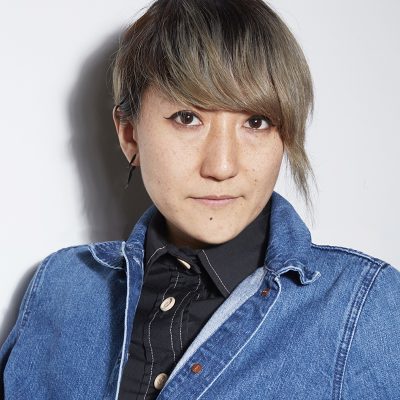 Fumi Nakamura is an artist and illustrator based in New York City. Born in Shizuoka, Japan, she moved to the Bay Area of California when she was 12. She is represented by Thinkspace Art Projects in Los Angeles, and her commissions include original work for clients such as Harper's Magazine, HarperCollins, Milkweed Editions, Puma, GAP, Dior, Urban Outfitters, and the Cornucopia Institute. Nakamura illustrated Aimee Nezhukumatathil’s best-selling book World of Wonders: In Praise of Fireflies, Whale Sharks, and Other Astonishments (2020, Milkweed Editions).
Fumi Nakamura is an artist and illustrator based in New York City. Born in Shizuoka, Japan, she moved to the Bay Area of California when she was 12. She is represented by Thinkspace Art Projects in Los Angeles, and her commissions include original work for clients such as Harper's Magazine, HarperCollins, Milkweed Editions, Puma, GAP, Dior, Urban Outfitters, and the Cornucopia Institute. Nakamura illustrated Aimee Nezhukumatathil’s best-selling book World of Wonders: In Praise of Fireflies, Whale Sharks, and Other Astonishments (2020, Milkweed Editions).
Location: MN Marine Art Museum
Project: The exhibition features original illustrations from three book projects; Mary Casanova’s Wake Up Island (University of Minnesota Press) and Hush, Hush, Forest (University of Minnesota Press) as illustrated by printmaker Nick Wroblewski, and World of Wonders: In Praise of Fireflies, Whale Sharks, and Other Astonishments (Milkweed Editions) written by Aimee Nezhukumatathil and illustrated by Fumi Nakamura. Selections from all three books will be accompanied by wood carvings from the Minnesota Marine Art Museum’s collection of Leo and Mariylyn Smith folk art - a collection of sculptures informed by the whimsy and wonder of the Mississippi River marine environments - interspersed throughout the gallery.
Sarah Nassif, Artist • Watershed Moment, Tuesday, July 25 at 6:00 pm - 8:00 pm
Sarah Nassif is Artist-in-Residence at Mississippi Watershed Management Organization (MWMO), where her project Weaving Water is a platform for community convergence, conversation, and craft around our personal and collective relationships to water. Combining her backgrounds in botany and environmental education with her love of fiber handcraft, Nassif invites the public to become part of a pop-up indigo and fiber workshop hosted near a body of water–the Mississippi River. Emphasizing the role of water in our survival because it is a vital part of textile processes, participants first help collect water from the river that will be used in the indigo dye process. Then they dive in to experience every stage of cloth production: weaving on a SAORI loom, spinning wool into yarn on a drop spindle, and dip dyeing cloth in an organic indigo vat. An emergent creative collective develops, drawing on the deep history of human creativity to transform fiber to cloth and create beautiful patterns. Weaving and indigo technologies arose in cultures around the world beginning millenia ago. They connect our modern selves to our ancient ability to solve complex problems through individual small contributions.
Location: Mississippi Watershed Management Organization
Project: Watershed Moment, Tuesday, July 25 at 6:00 pm - 8:00 pm
Visit the Mississippi Watershed Management Organization (MWMO) and learn how the organization works with local partners to protect and improve water quality and habitat in the watershed. Take a tour, stroll the grounds, and enjoy an evening by the Mississippi River. Visitors can take part in Weaving Water, a project of Artist-in-Residence Sarah Nassif that acts as a platform for community convergence, conversation and craft around our personal and collective relationships to water. Visit Nassif’s interactive workshop and textile exhibit, Personal Watersheds and take part in creating the Felted Watershed, a sequel to the 2022 Felted Vagus Nerve. Participants will help map the Mississippi Watershed in indigo-dyed wool roving and use soap and water to massage a fluffy pile of fleece into a large-scaled felted wall hanging.
Ryan Gerald Nelson, Artist • Groundwork
Ryan Gerald Nelson (b. 1983) is an American artist working across various mediums and scales. His works include artist books, large-scale silkscreen works on paper and canvas, experimental printmaking, sculpture, and writings regarding the Image as an entity and cultural force.
Location: Dreamsong
Project: Groundwork, presented by Dreamsong, is a group exhibition that takes terra firma as both subject and medium. A signifier of place, territory, and identity, a wellspring of life-giving nutrients, and a site of conflict over land-based indigenous rights and environmental protection, soil offers a rich prism through which the present may be both imagined and imaged. Through excavating diverse histories in artworks that take the ground as subject and material, the exhibition aims to encourage discussion about its preservation, its meaning, the claims that are made to it, and the sustenance, both spiritual and physical, that we derive from it.
Mankwe Ndosi, Advisor/Performer • Prairie|Concrete
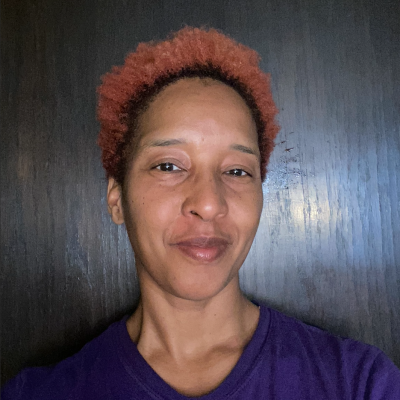 Mankwe Ndosi is a Culture Worker, Musician/C
Mankwe Ndosi is a Culture Worker, Musician/C omposer, and Somatic Practitioner. She uses creative practice to nurture and re-examine social patterns and relationships with her community, ancestral legacies, and the earth. Her work is aimed at creativity and healing through the interconnection and liberation of our personal, social, and terrastral structures, practices, and mythologies.
omposer, and Somatic Practitioner. She uses creative practice to nurture and re-examine social patterns and relationships with her community, ancestral legacies, and the earth. Her work is aimed at creativity and healing through the interconnection and liberation of our personal, social, and terrastral structures, practices, and mythologies.
Location: Frogtown Farm, Hidden Falls Regional Park & Western Sculpture Park
Project: Prairie|Concrete is an outdoor embodied movement project by lead artist, Pramila Vasudevan and the Aniccha Arts collaborative, commissioned by Public Art St. Paul (PASP). This project will bring visibility to plant cycles and growing practices through embodied listening and movement sessions with communities in St. Paul, Minnesota. The commission will unfold across 3 City of St. Paul Parks – Frogtown Farm, Hidden Falls Regional Park and Western Sculpture Park – through one rehearsal, 3 movement workshops, and one event at each site as part of the first Wakpa Triennial Arts Festival.
Crystal Norcross, Artist • Flower Power VII
Flower Power artists, when you collect all our efforts together, we represent layers and decades of working for truth, goodness, peace, and gentle wisdom. We are young and old, each with a different story that brings us to a shared world vision. People and flowers are both powerful species on Earth. Flower Power has organically grown out of the Minnesota landscape, out of public demonstration and opposition to state violence, incarceration, and climate crisis. We are individuals trying to present a more compassionate world; our cut flower installations are like portraits that help us deal with complex and abstract problems of injustice. We dedicate a whole day to paying respect to the injustices served, the hardships suffered, and the joy that persists. It’s a time when we use our art and spend it as a community to change the course of past directions. We are different minds and yet of the same heart. We stand with humanity and the Earth as protectors of land and life.
Project: Flower Power VII
Saturday, August 5, sunrise to sunset
Indian Burial Mounds Regional Park
10 Mounds Boulevard, Saint Paul 55106
Oyate Hotanin, a Native-led arts, thought, and social justice organization, presents of Flower Power VII, an annual event aimed at helping us all to remember who we are, to work to eliminate our incarceration state, rescue our planet, and lead a worldwide movement of a billion good relatives, Flower Power centers on the creation of an ephemeral work of art, made from cut flowers. Over the course of a day, artists arrange the blooms in a mosaic-like pattern on the grass surrounding the sculpture, Sacred Bowl, by Ojibwe artist Duane Goodwin.
Location:
Saturday, August 5, sunrise to sunset
Indian Burial Mounds Regional Park
10 Mounds Boulevard, Saint Paul 55106
Sabrina Nur, Artist • Flower Power VII
Flower Power artists, when you collect all our efforts together, we represent layers and decades of working for truth, goodness, peace, and gentle wisdom. We are young and old, each with a different story that brings us to a shared world vision. People and flowers are both powerful species on Earth. Flower Power has organically grown out of the Minnesota landscape, out of public demonstration and opposition to state violence, incarceration, and climate crisis. We are individuals trying to present a more compassionate world; our cut flower installations are like portraits that help us deal with complex and abstract problems of injustice. We dedicate a whole day to paying respect to the injustices served, the hardships suffered, and the joy that persists. It’s a time when we use our art and spend it as a community to change the course of past directions. We are different minds and yet of the same heart. We stand with humanity and the Earth as protectors of land and life.
Project: Flower Power VII
Saturday, August 5, sunrise to sunset
Indian Burial Mounds Regional Park
10 Mounds Boulevard, Saint Paul 55106
Oyate Hotanin, a Native-led arts, thought, and social justice organization, presents of Flower Power VII, an annual event aimed at helping us all to remember who we are, to work to eliminate our incarceration state, rescue our planet, and lead a worldwide movement of a billion good relatives, Flower Power centers on the creation of an ephemeral work of art, made from cut flowers. Over the course of a day, artists arrange the blooms in a mosaic-like pattern on the grass surrounding the sculpture, Sacred Bowl, by Ojibwe artist Duane Goodwin.
Location:
Saturday, August 5, sunrise to sunset
Indian Burial Mounds Regional Park
10 Mounds Boulevard, Saint Paul 55106
Margaret Ogas, Artist • Prairie|Concrete
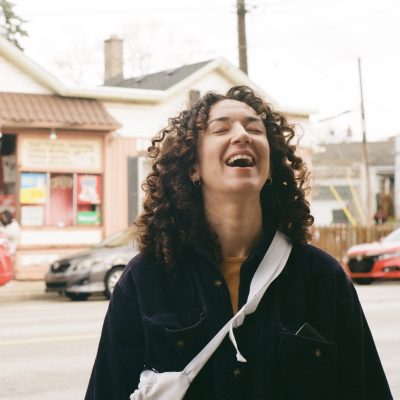 Margaret Ogas (she/her) is the program manager for Prairie|Concrete. She is a choreographer, performer, teaching artist, and arts administrator based in Saint Paul. Using an interdisciplinary approach rooted in dance and informed by Chicana cultural sensibilities, her works tell surreal everyday stories through a collage of movement, text and sound. Ogas is a 2023 Jerome Hill Artist Fellow. She was a 2021 Naked Stages Fellow at Pillsbury House + Theatre and has received grant support from the Metropolitan Regional Arts Council. Learn more at www.margaretogas.com
Margaret Ogas (she/her) is the program manager for Prairie|Concrete. She is a choreographer, performer, teaching artist, and arts administrator based in Saint Paul. Using an interdisciplinary approach rooted in dance and informed by Chicana cultural sensibilities, her works tell surreal everyday stories through a collage of movement, text and sound. Ogas is a 2023 Jerome Hill Artist Fellow. She was a 2021 Naked Stages Fellow at Pillsbury House + Theatre and has received grant support from the Metropolitan Regional Arts Council. Learn more at www.margaretogas.com
Location: Frogtown Farm, Hidden Falls Regional Park, Western Sculpture Park
Project: Prairie|Concrete is an outdoor embodied movement project by lead artist, Pramila Vasudevan and the Aniccha Arts collaborative, commissioned by Public Art St. Paul (PASP). This project will bring visibility to plant cycles and growing practices through embodied listening and movement sessions with communities in St. Paul, Minnesota. The commission will unfold across 3 City of St. Paul Parks – Frogtown Farm, Hidden Falls Regional Park and Western Sculpture Park – through one rehearsal, 3 movement workshops, and one event at each site as part of the first Wakpa Triennial Arts Festival.
Valerie Oliveiro, Advisor/Performer • Prairie|Concrete
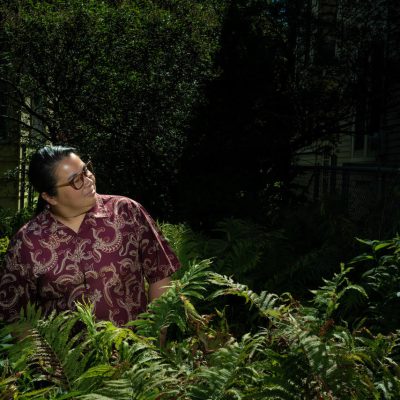 Valerie Oliveiro (she/he/they) is a queer transdisciplinary artist and activist in the performance field based in the Twin Cities and born in Singapore. While they currently engage movement as their primary motor for expression, they also engage in other expressions, such as design and photography, as simultaneously complicit, complexly relational proposals. They have designed and performed in the work of Jennifer Monson, Morgan Thorson, Pramila Vasudevan, Rosy Simas and Emily Gastineau. Their own choreographic work has been presented at Walker Art Center, Red Eye Theater, Hair+Nails Gallery and Bryant Lake Bowl and Cowles Center and has been supported by Minnesota State Arts Board, MRAC, Jerome Foundation and MAP Fund. Currently, they are a Co-Artistic Director at Red Eye Theater, an ensemble member at Lighting Rod (a queer trans collective led performance group), and co-run a small performance incubator MOVO SPACE. A 2023-2025 Jerome Fellow for Choreography, they are also currently designing the in work of Meg Foley, dancing the work of Rosy Simas and maintains a long term multi-disciplinary collaborative relationship with Jennifer Monson.
Valerie Oliveiro (she/he/they) is a queer transdisciplinary artist and activist in the performance field based in the Twin Cities and born in Singapore. While they currently engage movement as their primary motor for expression, they also engage in other expressions, such as design and photography, as simultaneously complicit, complexly relational proposals. They have designed and performed in the work of Jennifer Monson, Morgan Thorson, Pramila Vasudevan, Rosy Simas and Emily Gastineau. Their own choreographic work has been presented at Walker Art Center, Red Eye Theater, Hair+Nails Gallery and Bryant Lake Bowl and Cowles Center and has been supported by Minnesota State Arts Board, MRAC, Jerome Foundation and MAP Fund. Currently, they are a Co-Artistic Director at Red Eye Theater, an ensemble member at Lighting Rod (a queer trans collective led performance group), and co-run a small performance incubator MOVO SPACE. A 2023-2025 Jerome Fellow for Choreography, they are also currently designing the in work of Meg Foley, dancing the work of Rosy Simas and maintains a long term multi-disciplinary collaborative relationship with Jennifer Monson.
Location: Frogtown Farm, Hidden Falls Regional Park & Western Sculpture Park
Project: Prairie|Concrete is an outdoor embodied movement project by lead artist, Pramila Vasudevan and the Aniccha Arts collaborative, commissioned by Public Art St. Paul (PASP). This project will bring visibility to plant cycles and growing practices through embodied listening and movement sessions with communities in St. Paul, Minnesota. The commission will unfold across 3 City of St. Paul Parks – Frogtown Farm, Hidden Falls Regional Park and Western Sculpture Park – through one rehearsal, 3 movement workshops, and one event at each site as part of the first Wakpa Triennial Arts Festival.
One Voice Mixed Chorus • ReMembering: Singing Waters
Location: Walker Art Center
Radha Pandey • Paper Is People: Decolonizing Global Paper Cultures
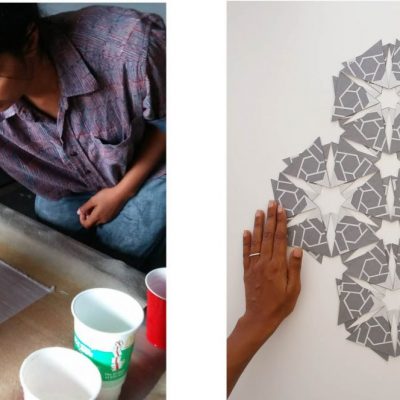 Radha Pandey is a papermaker and letterpress printer. She earned her MFA in Book Arts from the University of Iowa Center for the Book. She specializes in Indo-Islamic Papermaking and teaches book arts classes in India, Europe and the US. Her book, Anatomia Botanica, won the MICA Book Award in 2014 and received an Honorable Mention at the 15th Carl Hertzog Award for Excellence in Book Design. In 2018, her book, Deep Time, won the Joshua Heller Memorial Award. Her books are held in over 80 collections internationally, including the Library of Congress and Yale University. Currently, Radha is working on an artist book inspired by Mughal floral portraiture from the 17th century, for which the paper will be made in the traditional Indo-Islamic style.
Radha Pandey is a papermaker and letterpress printer. She earned her MFA in Book Arts from the University of Iowa Center for the Book. She specializes in Indo-Islamic Papermaking and teaches book arts classes in India, Europe and the US. Her book, Anatomia Botanica, won the MICA Book Award in 2014 and received an Honorable Mention at the 15th Carl Hertzog Award for Excellence in Book Design. In 2018, her book, Deep Time, won the Joshua Heller Memorial Award. Her books are held in over 80 collections internationally, including the Library of Congress and Yale University. Currently, Radha is working on an artist book inspired by Mughal floral portraiture from the 17th century, for which the paper will be made in the traditional Indo-Islamic style.
Location: Minnesota Center for Book Arts
Project: Paper Is People: Decolonizing Global Paper Cultures, co-curated by Tia Blassingame and Stephanie Sauer, offers a new definition of paper within a global and decolonial framework, opening up a conversation around what paper is across cultures today. In the Indigenous and oral cultures represented here, weavings, tapestries, and other handmade substrates act as vessels and embodiments of collective culture and memory. See paper samples and source materials, watch papermaking processes from source to finish, read interviews and watch videos from traditional practitioners, experience how contemporary artists are finding new applications for ancient technologies, and participate in a variety of workshops and talks. Join us at mnbookarts.org/paper-is-people
Andres Perez, Artist • It’s the People
Andres Perez is a Mexican-American artist exploring identity and culture through photography. Native to Acapulco, Guerrero, he moved to Minnesota at the age of 18 and started working professionally as an artist in 2005. He is a self-taught photographer, beginning his career in graphic design and eventually pivoting into photography. Andres currently works at Pollen Midwest as an Art Director, and is focusing on portrait photography projects that benefit artists and their work.
Location: Hennepin Theatre District
Project: Hennepin Theatre Trust’s 2023-24 edition of It’s the People features large-scale photo banners along Hennepin Avenue in downtown Minneapolis. This public art initiative is inspired by the exceptional, everyday people whose experiences, contributions and stories create the unique vibrancy of our shared communities.
Junauda Petrus, Artist • Silverwood Poetry Trail
 Junauda Petrus is a creative activist, writer, playwright, and multi-dimensional performance artist who is born on Dakota land, West-Indian descended, and African-sourced. Her work centers around Black wildness, futurism, ancestral healing, sweetness, spectacle and shimmer. She is the author of The Stars And The Blackness Between Them, winner of the 2020 Coretta Scott King Honor Book Award. Petrus has written works for the stage, screen and page, employing poetics and experiences re-membered via ancestral dreaming and research of their lost stories. She is inspired by her parents and ancestors who immigrated from the Caribbean bringing their magic and trauma with them, and her art ripples with their legacy. She is influenced by the Middle Passage and diaspora, Black folks in Minneapolis, ancestral magic, and stories of queerness and womanhood within these contexts. Speculative fiction and magical realist elements are central to her work.
Junauda Petrus is a creative activist, writer, playwright, and multi-dimensional performance artist who is born on Dakota land, West-Indian descended, and African-sourced. Her work centers around Black wildness, futurism, ancestral healing, sweetness, spectacle and shimmer. She is the author of The Stars And The Blackness Between Them, winner of the 2020 Coretta Scott King Honor Book Award. Petrus has written works for the stage, screen and page, employing poetics and experiences re-membered via ancestral dreaming and research of their lost stories. She is inspired by her parents and ancestors who immigrated from the Caribbean bringing their magic and trauma with them, and her art ripples with their legacy. She is influenced by the Middle Passage and diaspora, Black folks in Minneapolis, ancestral magic, and stories of queerness and womanhood within these contexts. Speculative fiction and magical realist elements are central to her work.
Location: Silverwood Park
Project: Silverwood’s Poetry Trail is a self-guided audio tour featuring work by local and regional poets and writers. Six stops are located next to a bench along a paved trail that loops around the park moving from forest to lake to prairie. The 2023 - 24 poets were curated by Su Hwang.
Nikki Praus, Artist • Groundwork
Nikki Praus contorts soil into poetic calls-to-action that leave the viewer with a sense of personal responsibility for their impact on the environment. Praus states, “The work serves as a montage of this grief-ridden, wonderful, decomposing, birthing, ever-loving, ever-hurting, ever-evolving landscape that will hopefully inspire us to heal.” Harnessing the abject as a way to capture attention, Praus’s practice brings dirt into the gallery as a way to critique the human imprint on the environment.
Location: Dreamsong
Project: Groundwork, presented by Dreamsong, is a group exhibition that takes terra firma as both subject and medium. A signifier of place, territory, and identity, a wellspring of life-giving nutrients, and a site of conflict over land-based indigenous rights and environmental protection, soil offers a rich prism through which the present may be both imagined and imaged. Through excavating diverse histories in artworks that take the ground as subject and material, the exhibition aims to encourage discussion about its preservation, its meaning, the claims that are made to it, and the sustenance, both spiritual and physical, that we derive from it.
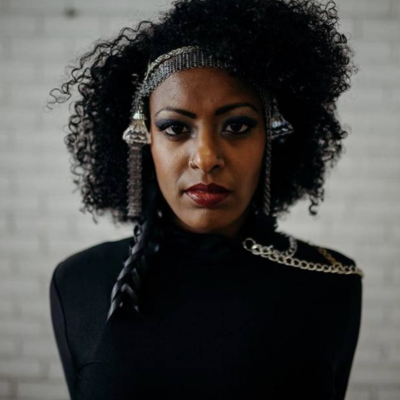 Jayanthi Rajasa is multidisciplinary artist and teaching artist. Churches, bars, theaters, museums, daycares, high schools, colleges, detention centers, jails, street corners, basements, rooftops, funerals. These are some of the places Jayanthi shows up and works in song to communicate with infants, families, youth, elders, people. Primarily an archivist songstress collecting and creating songs that speak to her struggle, empowerment, and ability to be, change, and move forward while honoring the unremembered changers and movers of yore. From a young age Jayanthi was shown the awesomeness and blessing of being around Elders and the elderly individual as well as elderly communities. She sings for people passing worlds, meaning births and children, hospice and funerals, free and incarcerated, loved or lost. She has been in more than 10 performing and recording bands in The Twin Cities.
Jayanthi Rajasa is multidisciplinary artist and teaching artist. Churches, bars, theaters, museums, daycares, high schools, colleges, detention centers, jails, street corners, basements, rooftops, funerals. These are some of the places Jayanthi shows up and works in song to communicate with infants, families, youth, elders, people. Primarily an archivist songstress collecting and creating songs that speak to her struggle, empowerment, and ability to be, change, and move forward while honoring the unremembered changers and movers of yore. From a young age Jayanthi was shown the awesomeness and blessing of being around Elders and the elderly individual as well as elderly communities. She sings for people passing worlds, meaning births and children, hospice and funerals, free and incarcerated, loved or lost. She has been in more than 10 performing and recording bands in The Twin Cities.
Jayanthi continues to work with the Million Artist Movement to dismantle racism and injustice towards people of color and dream collectively to produce actions for change and Black Liberation. Jayanthi also works with Mama Mosaic on Minnesota Girls Are Not For Sale, seeking freedom for women and girl sex slaves in Minnesota.
Rivers Toward Healing the Hurt: Art, Song & Poetry for Philando Castile
With artists Jordan Hamilton and Jayanthi Rajasa
Saturday, September 9, 1 – 4 PM
Philando Castile Peace Garden
Larpenteur Avenue West, Falcon Heights
South side of Larpenteur between Cleveland and Snelling
Indigenous Roots, Artist
Project: Latino Conservation Week Festival
Location: Minnesota Valley National Wildlife Refuge, Education and Visitor Center, 3815 American Boulevard East, Bloomington MN 55425
- Saturday, July 22, 1 - 5 p.m. at Minnesota Valley National Wildlife Refuge, Education and Visitor Center, 3815 American Boulevard East, Bloomington MN 55425
- Minnesota Valley National Wildlife Refuge, the City of Bloomington, and Indigenous Roots presents Latino Conservation Week Festival, an event to celebrate the cultures that make up the Latino community and the nature that connects us all. Join us for a day of music, art, and food. Everyone is welcome at this free event!
Steph Rue, Artist • Paper Is People: Decolonizing Global Paper Cultures
Steph Rue is an artist working primarily with handmade paper and books as her medium. She received her MFA degree from the University of Iowa Center for the Book and BA degree from Stanford University. She is a 2015-2016 recipient of a Fulbright Research Grant to South Korea, where she studied traditional Korean bookbinding, papermaking, and printing. Her artist books and paper works are held in a number of public and private collections, including Yale University, The Metropolitan Museum of Art Library, and the Asian Art Museum in San Francisco. Steph is a co-founder of the Korean American Artist Collective and a member of the Book/Print Artist/Scholar of Color Collective. She is also a co-founder of Hanji Edition, a publisher of fine art and print works with/on hanji. Steph teaches workshops and classes on papermaking, bookmaking, and related arts, with an emphasis on East Asian techniques, and has taught at Mills College and the San Francisco Center for the Book. Her current project, supported by an NEA grant through the City of Sacramento, is to collect stories of immigration from Korean communities through the study of papermaking and natural dyes. Steph lives and works out of her home studio in Sacramento, CA.
Location: Minnesota Center for Book Arts
Project: Paper Is People: Decolonizing Global Paper Cultures, co-curated by Tia Blassingame and Stephanie Sauer, offers a new definition of paper within a global and decolonial framework, opening up a conversation around what paper is across cultures today. In the Indigenous and oral cultures represented here, weavings, tapestries, and other handmade substrates act as vessels and embodiments of collective culture and memory. See paper samples and source materials, watch papermaking processes from source to finish, read interviews and watch videos from traditional practitioners, experience how contemporary artists are finding new applications for ancient technologies, and participate in a variety of workshops and talks. Join us at mnbookarts.org/paper-is-people.
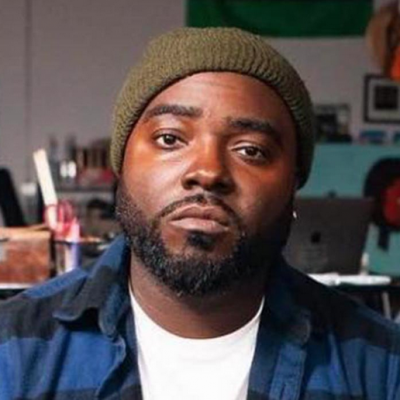
Max Sansing (Chicago)
instagram.com/maxsansing
Max Sansing is a Chicago-based fine artist and one of that city’s most prolific and talented muralists. His distinct aesthetic fuses the color-drenched dynamism of street art with the technical elegance of photorealism. Born and raised on the South Side by two artistic parents, Sansing discovered his passion and creative gifts at an early age. During his youth he was involved with several graffiti crews and taught himself oil painting before completing formal training at the American Academy of Art. In addition to his studio practice, Sansing is frequently commissioned to create large-scale murals and experiential installations across the country. He is deeply committed to supporting his Chicago community and is involved with numerous youth programs that expand arts opportunities in underserved areas. His work has been featured in gallery shows and special events in Chicago, New York, and Miami among others.
Project: Mural in the Creative Enterprise Zone for Chroma Zone Mural & Art Festival 2023
Dates: September 14, 15 & 16
Location: Creative Enterprise Zone (CEZ), a district centered on the Raymond-University neighborhood of Saint Paul: Click here for a Map of all the Murals in the CEZ.
Visit Chroma Zone for more event info.
SEE MORE PERSPECTIVE • Constellation: Video Storytelling
Read SEE MORE PERSPECTIVE's interview
SEE MORE PERSPECTIVE is a Xicanx hip-hop artist, producer, spoken word poet, & social justice educator. They create work with an unrelenting commitment to craft, innovation, and community and make a life of creating art through the lenses of identity, history, and culture.
Project: Constellation: Video Storytelling
Constellation is a cohort of seven artists, each creating a short video to be presented in a looped series that will be projected onto the downtown Saint Paul Public Library - George Latimer on Rice Park. Videos shall interact with the architecture of the library building, transforming it into new visions for public space and public knowledge. Artists include: Za’nia Coleman; Boo McCaleb; SEE MORE PERSPECTIVE; Witt Siasoco; Miko Simmons; Jonathan Thunder; and Moira Villiard.
Where:
Rice Park & Saint Paul Public Library - George Latimer Central Library
109 W 4th St, St Paul, MN 55102
Dates and Times:
9/14 - 8:00 PM-9:00 PM - Preview Night
9/15 - 5:00 PM-9:30 PM
9/16 - 5:00 PM-9:30 PM
Christopher Selleck, Artist • It’s the People
Christopher Selleck was born in Augusta, GA. He has spent the last twenty years working in and around the art scene of the Minneapolis area. He received his BFA in Photography from the University of Minnesota Twin Cities in 2013 and his MFA in Visual Studies and Photography from the Minneapolis College of Art & Design in 2016. Using sports and masculinity as a lens to view identity, his various projects of the last few years have focused on this area of identity construction. His current projects address issues of hyper-masculinity, sexuality and the male body. His work has always had an affinity for traditional forms of photography but with a more conceptual approach. Working with film, instant and digital processes his practice has tended to focus on portrait and self-portrait-based projects. Photographic prints and books have been central in his practice, but his work has also incorporated video, sound, installation, printmaking and sculpture. He has been exhibited and published both Nationally and Regionally.
Location: Minnesota Center for Book Arts
Project: Hennepin Theatre Trust’s 2023-24 edition of It’s the People features large-scale photo banners along Hennepin Avenue in downtown Minneapolis. This public art initiative is inspired by the exceptional, everyday people whose experiences, contributions and stories create the unique vibrancy of our shared communities.
Seringô Collective • Paper Is People: Decolonizing Global Paper Cultures
The artists of the Seringô Collective combine design, comfort, innovation and possibility to transform the lives of communities that keep the Amazon standing. An institution and brand that works with social and environmental initiatives that combine community development, innovation and culture based on the extraction, processing and use of Amazonian natural rubber for crafts and shoes, based in the states of Pará, Acre, Amazonas, Rondônia and Tocantins in North Region of Brazil.
Location: Minnesota Center for Book Arts
Project: Paper Is People: Decolonizing Global Paper Cultures, co-curated by Tia Blassingame and Stephanie Sauer, offers a new definition of paper within a global and decolonial framework, opening up a conversation around what paper is across cultures today. In the Indigenous and oral cultures represented here, weavings, tapestries, and other handmade substrates act as vessels and embodiments of collective culture and memory. See paper samples and source materials, watch papermaking processes from source to finish, read interviews and watch videos from traditional practitioners, experience how contemporary artists are finding new applications for ancient technologies, and participate in a variety of workshops and talks. Join us at mnbookarts.org/paper-is-people
Judee Shuǐ Xiān, Performer • Prairie|Concrete
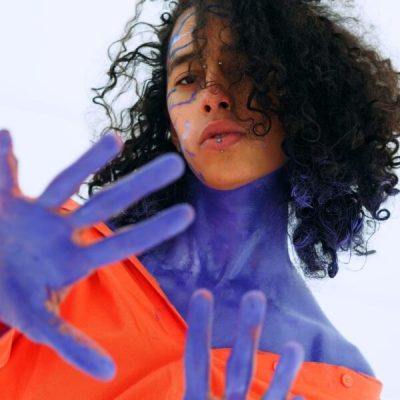 J H Shuǐ Xiān is an interdisciplinary choreographer, improviser, and sound artist. She has enjoyed presenting works at venues including Paikka, Fresh Oysters Performance Research (R.I.P.), Public Functionary, Bryant Lake Bowl, Walker Art Center, The Southern Theater, Intermedia Arts (R.I.P.), Frey Theatre (Twin Cities, MN), Rochester Art Center and 9 Herkimer Place (Brooklyn, NY). She has recently enjoyed performing for/collaborating with others including Dua Saleh, Rosy Simas, Heather Kravas, Shayna Allen, lazer axelrood, Valerie Oliviero, Leila Awadallah, Judith Howard, Shayna Allen, Pramila Vasudevan, Megan Mayer, Emily Gastineau, and Erin Drummond. She is a 2017 Q-Stage: New Works and 2019 Momentum: New Dance Works recipient and was part of the 2022 Red Eye Works-In-Progress cohort.
J H Shuǐ Xiān is an interdisciplinary choreographer, improviser, and sound artist. She has enjoyed presenting works at venues including Paikka, Fresh Oysters Performance Research (R.I.P.), Public Functionary, Bryant Lake Bowl, Walker Art Center, The Southern Theater, Intermedia Arts (R.I.P.), Frey Theatre (Twin Cities, MN), Rochester Art Center and 9 Herkimer Place (Brooklyn, NY). She has recently enjoyed performing for/collaborating with others including Dua Saleh, Rosy Simas, Heather Kravas, Shayna Allen, lazer axelrood, Valerie Oliviero, Leila Awadallah, Judith Howard, Shayna Allen, Pramila Vasudevan, Megan Mayer, Emily Gastineau, and Erin Drummond. She is a 2017 Q-Stage: New Works and 2019 Momentum: New Dance Works recipient and was part of the 2022 Red Eye Works-In-Progress cohort.
Location: Frogtown Farm, Hidden Falls Regional Park & Western Sculpture Park
Project: Prairie|Concrete is an outdoor embodied movement project by lead artist, Pramila Vasudevan and the Aniccha Arts collaborative, commissioned by Public Art St. Paul (PASP). This project will bring visibility to plant cycles and growing practices through embodied listening and movement sessions with communities in St. Paul, Minnesota. The commission will unfold across 3 City of St. Paul Parks – Frogtown Farm, Hidden Falls Regional Park and Western Sculpture Park – through one rehearsal, 3 movement workshops, and one event at each site as part of the first Wakpa Triennial Arts Festival.
Witt Siasoco, Artist • Constellation: Video Storytelling
Witt Siasoco has been actively engaged at the intersection of the arts & civic process for more than 20years. Siasoco was selected by the City of Minneapolis as a Creative City making Artist, a year-long collaboration between artists and City planners. His studio practice is rooted in creating art in public space that catalyzes civic dialogue and collective action. Siasoco was also a MN State Arts Board recipient for the Richfield Artist Residency Engagement, a residency utilizing art as an invitation to residents to participate in planning Richfield’s future. Witt was part of an artist cohort that created public art for the newly built Minneapolis Services Building in downtown Minneapolis. Siasoco’s public art project, This Home is Not for Sale, was an Americans for the Arts’ Public Art Award recipient, highlighting compelling national public art projects. Recently Siasoco was awarded a Jerome Foundation Artist Fellowship for the Visual Arts.
Project: Constellation: Video Storytelling
Constellation is a cohort of seven artists, each creating a short video to be presented in a looped series that will be projected onto the downtown Saint Paul Public Library - George Latimer on Rice Park. Videos shall interact with the architecture of the library building, transforming it into new visions for public space and public knowledge. Artists include: Za’nia Coleman; Boo McCaleb; SEE MORE PERSPECTIVE; Witt Siasoco; Miko Simmons; Jonathan Thunder; and Moira Villiard.
Where:
Rice Park & Saint Paul Public Library - George Latimer Central Library
109 W 4th St, St Paul, MN 55102
Dates and Times:
9/14 - 8:00 PM-9:00 PM - Preview Night
9/15 - 5:00 PM-9:30 PM
9/16 - 5:00 PM-9:30 PM
Miko Simmons, Artist • Constellation: Video Storytelling
Miko Simmons is an international, award-winning multimedia artist, animator, and composer. Educated in physics and art and based in St. Paul, his work blurs the lines between art and technology, theater and cinema, music and visuals, media and medium. He has been innovating in the convergence of Film/3D Animation with Theatrical production and interactive techniques for more than twenty years, providing creative direction/design for motion graphics, animation, and digital media production services. Miko has consistently raised the creative bar for eloquent design and functionality in multiple industries, both corporate and creative. His work has been featured at The MN Opera, The Ordway Center for Performing Arts, The Guthrie Theatre, and Walker Arts Center. He created A Monumental Life Video Projection Design for Martin Luther King Monument unveiling ceremony on National Mall, Washington D.C. He has worked internationally in Korea, Japan, Russia, Spain, Ecuador, and Australia.
Project: Constellation: Video Storytelling
Constellation is a cohort of seven artists, each creating a short video to be presented in a looped series that will be projected onto the downtown Saint Paul Public Library - George Latimer on Rice Park. Videos shall interact with the architecture of the library building, transforming it into new visions for public space and public knowledge. Artists include: Za’nia Coleman; Boo McCaleb; SEE MORE PERSPECTIVE; Witt Siasoco; Miko Simmons; Jonathan Thunder; and Moira Villiard.
Where:
Rice Park & Saint Paul Public Library - George Latimer Central Library
109 W 4th St, St Paul, MN 55102
Dates and Times:
9/14 - 8:00 PM-9:00 PM - Preview Night
9/15 - 5:00 PM-9:30 PM
9/16 - 5:00 PM-9:30 PM
Mona Smith, Artist • Magazu (Rain)
Read the interview with Mona Smith
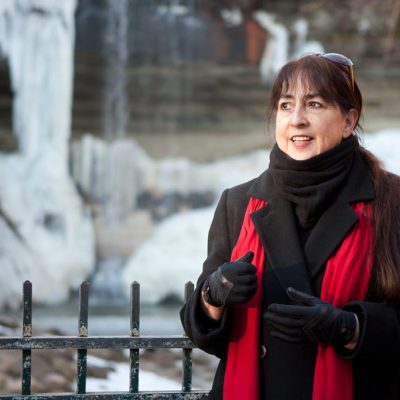 Mona Smith, Sisseton-Wahpeton Dakota, is a multi-media artist, educator and co-founder of Allies: media/art and the Healing Place Collaborative. Her media work includes art projects for the web – bdemakaska.net, bdotememorymap.org – and multimedia installation work – most notably, Bde Maka Ska public art collaboration and website, 2020, Cloudy Waters: Dakota Reflections on the River (Minnesota History Center, 2005, and permanent audio installation at the Mill City Museum’s Ruins Courtyard at the Minneapolis Riverfront, 2011, and Science Museum of Minnesota, 2015), the Bdote Memory Map (with the Minnesota Humanities Center), and the multi-media Dakota welcome installation to the Hearts of our People: Native Women Artists exhibition at the Minneapolis Institute of Art, 2019. She has served as consultant for the planning for Indian Mounds Park (sic) and provided video work for the site. She has been part of the Dakota Community Council, is a member of the Native Partnership Council of the Friends of the Falls and is currently in pre-production for a commission with the M, the Minnesota Museum of American Art, in St. Paul, MN. She is a member of the PLaCE (Place, Location and Context and Environment) Research Consortium based at the University of West England in Bristol, England, and is a member of the Mapping Spectral Traces International Network. Her artistic and educational work uses image, sound and place to work “between” – the place of healing, of relationship, of meaning where spirit and physical, life and death, fear and strength, night and day intersect.
Mona Smith, Sisseton-Wahpeton Dakota, is a multi-media artist, educator and co-founder of Allies: media/art and the Healing Place Collaborative. Her media work includes art projects for the web – bdemakaska.net, bdotememorymap.org – and multimedia installation work – most notably, Bde Maka Ska public art collaboration and website, 2020, Cloudy Waters: Dakota Reflections on the River (Minnesota History Center, 2005, and permanent audio installation at the Mill City Museum’s Ruins Courtyard at the Minneapolis Riverfront, 2011, and Science Museum of Minnesota, 2015), the Bdote Memory Map (with the Minnesota Humanities Center), and the multi-media Dakota welcome installation to the Hearts of our People: Native Women Artists exhibition at the Minneapolis Institute of Art, 2019. She has served as consultant for the planning for Indian Mounds Park (sic) and provided video work for the site. She has been part of the Dakota Community Council, is a member of the Native Partnership Council of the Friends of the Falls and is currently in pre-production for a commission with the M, the Minnesota Museum of American Art, in St. Paul, MN. She is a member of the PLaCE (Place, Location and Context and Environment) Research Consortium based at the University of West England in Bristol, England, and is a member of the Mapping Spectral Traces International Network. Her artistic and educational work uses image, sound and place to work “between” – the place of healing, of relationship, of meaning where spirit and physical, life and death, fear and strength, night and day intersect.
Project: Magazu (Rain), a video installation commissioned by Public Art Saint Paul for the Wakpa Triennial, will welcome visitors to the M. The purpose of the installation is to introduce visitors to Dakota homeland, to a range of urban Dakota older women and to some Dakota notions of water and relationship to the river.
Location: Minnesota Museum of American Art
Mona Smith’s video installation is presented in the Entry Hall to the Minnesota Museum of American Art (The M).
Hours for the Entry Hall are Mondays to Sundays, 10 AM to 4 PM.
The main museum galleries are closed at the present time. The M’s window galleries present the exhibition, Im/perfect Slumbers.
Moheb Soliman, Artist • Silverwood Poetry Trail
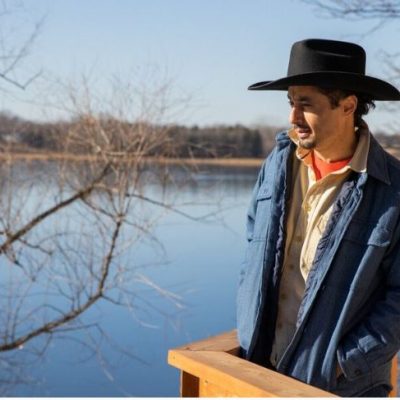 Moheb Soliman is an interdisciplinary poet from Egypt and the Midwest. He has presented writing, performance, installation, and video work at diverse literary, art, and public spaces in the US and Canada with support from the Banff Centre, Pillsbury House, Joyce Foundation, Minnesota State Arts Board, and the Tulsa Artist Fellowship where he was a multi-year resident, among others. He has degrees from The New School for Social Research and the University of Toronto and currently live in Minnesota outside the Twin Cities, coupled with hybrid writer Kathryn Savage, her son, and his dog. Important to highlight, his first poetry book, HOMES (Coffee House Press 2021), dwells in the natural-cultural sprawl of the Great Lakes region as it reckons like much of his work with issues of modernity, identity, place and belonging.
Moheb Soliman is an interdisciplinary poet from Egypt and the Midwest. He has presented writing, performance, installation, and video work at diverse literary, art, and public spaces in the US and Canada with support from the Banff Centre, Pillsbury House, Joyce Foundation, Minnesota State Arts Board, and the Tulsa Artist Fellowship where he was a multi-year resident, among others. He has degrees from The New School for Social Research and the University of Toronto and currently live in Minnesota outside the Twin Cities, coupled with hybrid writer Kathryn Savage, her son, and his dog. Important to highlight, his first poetry book, HOMES (Coffee House Press 2021), dwells in the natural-cultural sprawl of the Great Lakes region as it reckons like much of his work with issues of modernity, identity, place and belonging.
Location: Silverwood Park
Project: Silverwood’s Poetry Trail is a self-guided audio tour featuring work by local and regional poets and writers. Six stops are located next to a bench along a paved trail that loops around the park moving from forest to lake to prairie. The 2023 - 24 poets were curated by Su Hwang.
Mary Austin Speaker, Artist • Silverwood Poetry Trail
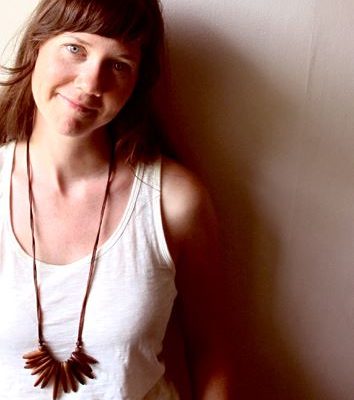 Mary Austin Speaker is a poet and book designer. She is currently Creative Director of Milkweed Editions, where she also directs the Milkweed Fellowship program and leads diversity, equity, access and inclusion efforts. Her first full-length collection, Ceremony, was selected by Matthea Harvey as winner of the 2012 Slope Editions book prize and was published in February 2013. Her second book, The Bridge, was published in January 2016 by Shearsman Books.
Mary Austin Speaker is a poet and book designer. She is currently Creative Director of Milkweed Editions, where she also directs the Milkweed Fellowship program and leads diversity, equity, access and inclusion efforts. Her first full-length collection, Ceremony, was selected by Matthea Harvey as winner of the 2012 Slope Editions book prize and was published in February 2013. Her second book, The Bridge, was published in January 2016 by Shearsman Books.
Location: Silverwood Park
Project: Silverwood’s Poetry Trail is a self-guided audio tour featuring work by local and regional poets and writers. Six stops are located next to a bench along a paved trail that loops around the park moving from forest to lake to prairie. The 2023 - 24 poets were curated by Su Hwang.
Sandy Spieler, Artist • Here, Now - Instructions for ‘Listening’
Sandy Spieler is a sculptor, painter, graphic artist, teacher, activist, collaborator, and perpetual student. Her work includes performances, public installations, and residencies in diverse situations. Led by reverence, awe, outrage, and love, she connects local and intimate experience with global issues, deepening a practice of inter-being. Sandy’s vital education rises from being a mother and an active community participant. She holds an MA of Cultural Performance from Bristol University in England, served as director of In the Heart of the Beast Puppet and Mask Theatre and the Annual Mayday Ceremony for 45 years, and was granted the McKnight Foundation’s 2014 “Distinguished Artist of the Year” award. Sandy is particularly passionate about work for the Water, and the power of Art to waken us to the ‘everyday miracle’.
Location: Old Cedar Avenue Bridge Trailhead,
9898 Old Cedar Ave S, Bloomington, MN 55425
Project:
Sandy Spieler & Tanaǧidaŋ To Wiŋ (Tara Perron)
Here, Now - Instructions for ‘Listening’
Sunday, July 23rd at Old Cedar Avenue Bridge Trailhead
9898 Old Cedar Ave S, Bloomington, MN 55425
In solidarity with WAKPA Triennial Art Festival: A pop-up activity to encourage deep listening into the present site of the South Loop District; in the Here and Now. This activity is initiated and guided by Tara Tanagidan To Win and Sandy Spieler. Will you come and listen with us? You will be invited to use all your senses... of ears, eyes, feet, mind, and heart. Your detailed observations will be valued toward our on-going research of this place.
Dameun Strange, Artist • Prairie|Concrete
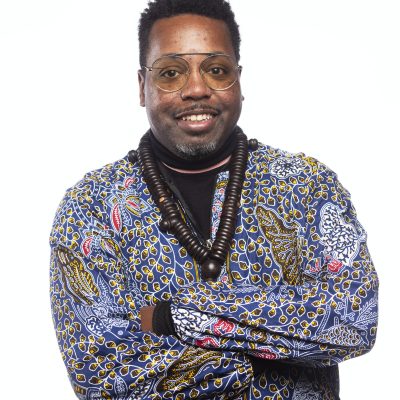 Dameun Strange is a sound explorer, multi-instrumentalist, composer, and sound designer whose conceptual electronic and improvised electro-acoustic works focus on stories and themes of the African diaspora, often exploring surrealist and afro-futurist ideas with unique impressionism. He currently lives in the Frogtown Community of Saint Paul, MN with his wife, Corina, and their inquisitive 5 year-old, Ezra.
Dameun Strange is a sound explorer, multi-instrumentalist, composer, and sound designer whose conceptual electronic and improvised electro-acoustic works focus on stories and themes of the African diaspora, often exploring surrealist and afro-futurist ideas with unique impressionism. He currently lives in the Frogtown Community of Saint Paul, MN with his wife, Corina, and their inquisitive 5 year-old, Ezra.
Location: Frogtown Farm, Hidden Falls Regional Park, Western Sculpture Park
Project: Prairie|Concrete is an outdoor embodied movement project by lead artist, Pramila Vasudevan and the Aniccha Arts collaborative, commissioned by Public Art St. Paul (PASP). This project will bring visibility to plant cycles and growing practices through embodied listening and movement sessions with communities in St. Paul, Minnesota. The commission will unfold across 3 City of St. Paul Parks – Frogtown Farm, Hidden Falls Regional Park and Western Sculpture Park – through one rehearsal, 3 movement workshops, and one event at each site as part of the first Wakpa Triennial Arts Festival.
Skye Tafoya, Artist • Paper Is People: Decolonizing Global Paper Cultures
Skye Tafoya is an Indigenous artist from the Eastern Band Cherokee and Santa Clara Pueblo tribes. Her tribal heritage and lineage are significant components continuously present within her artwork. Skye comes from a lineage of basket-weavers, both paternal and maternal, and also used to make red willow baskets with her dad. skye continues to use paper-weaving processes to honor her loved ones and ancestors. Her meticulously crafted designs, patterns, prints, and weavings are influenced by basketry and contains themes of cultural teachings, Cherokee language preservation, motherhood and personal & family narratives. Skye creates with the intention of archiving, preserving and sharing stories, language, culture, and experiences. Skye has worked in both two-dimensional and three-dimensional forms ranging in sizes from hand-held to life-size. The methods of her art practice include serigraph (screen-printing), relief and letterpress printmaking, digital design, paper-weaving, and book-making. Skye published her first artist book, Ul’nigid’, in the spring of 2020 and has exhibited work nationally and internationally in Russia. Her work is also housed in many special collections including the U.s. Library of Congress, Kohler Art Library, and the Bainbridge Museum of Art. She received her B.F.A. from the Institute of American Indian Arts in Santa Fe, NM and her M.F.A. from the Pacific Northwest College of Art in Portland, OR.
Location: Minnesota Center for Book Arts
Project: Paper Is People: Decolonizing Global Paper Cultures, co-curated by Tia Blassingame and Stephanie Sauer, offers a new definition of paper within a global and decolonial framework, opening up a conversation around what paper is across cultures today. In the Indigenous and oral cultures represented here, weavings, tapestries, and other handmade substrates act as vessels and embodiments of collective culture and memory. See paper samples and source materials, watch papermaking processes from source to finish, read interviews and watch videos from traditional practitioners, experience how contemporary artists are finding new applications for ancient technologies, and participate in a variety of workshops and talks. Join us at mnbookarts.org/paper-is-people
Jasmine Kar Tang, Artist • Prairie|Concrete
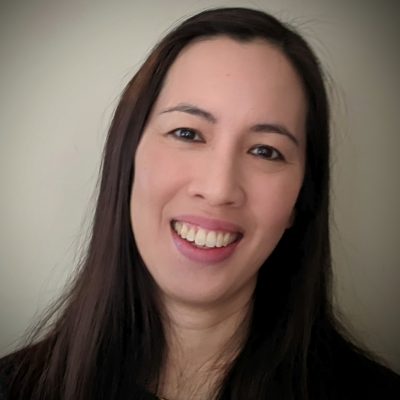 Jasmine Kar Tang (she/her/hers) has been working with Aniccha Arts since 2010. Jasmine’s role was more consultative in the beginning, involving dramaturgical feedback and research on the conceptual elements of productions. This expanded into dancing and thinking about praxis. The daughter of immigrants from Hong Kong and Thailand, Jasmine is committed to the pursuit of an equitable, liberatory artmaking/rehearsal process. She also brings her experience as an educator to the work, thinking hard about group dynamics and facilitation. Jasmine‘s day job is as Co-Director at the Center for Writing and as Affiliate Graduate Faculty member in Literacy and Rhetorical Studies at the University of Minnesota–Twin Cities.
Jasmine Kar Tang (she/her/hers) has been working with Aniccha Arts since 2010. Jasmine’s role was more consultative in the beginning, involving dramaturgical feedback and research on the conceptual elements of productions. This expanded into dancing and thinking about praxis. The daughter of immigrants from Hong Kong and Thailand, Jasmine is committed to the pursuit of an equitable, liberatory artmaking/rehearsal process. She also brings her experience as an educator to the work, thinking hard about group dynamics and facilitation. Jasmine‘s day job is as Co-Director at the Center for Writing and as Affiliate Graduate Faculty member in Literacy and Rhetorical Studies at the University of Minnesota–Twin Cities.
Location: Frogtown Farm, Hidden Falls Regional Park, Western Sculpture Park
Project: Prairie|Concrete is an outdoor embodied movement project by lead artist, Pramila Vasudevan and the Aniccha Arts collaborative, commissioned by Public Art St. Paul (PASP). This project will bring visibility to plant cycles and growing practices through embodied listening and movement sessions with communities in St. Paul, Minnesota. The commission will unfold across 3 City of St. Paul Parks – Frogtown Farm, Hidden Falls Regional Park and Western Sculpture Park – through one rehearsal, 3 movement workshops, and one event at each site as part of the first Wakpa Triennial Arts Festival.
Xavier Tavera, Artist • Evocation of a Latin Dance Club
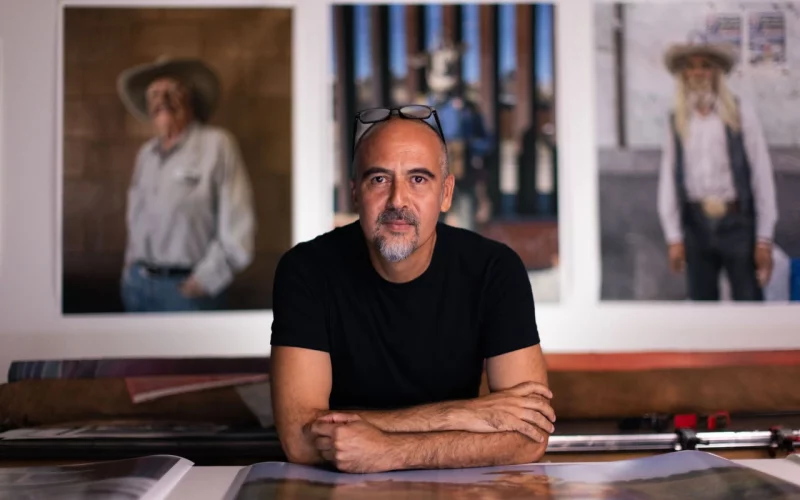
Xavier Tavera is a photographer, filmmaker, sculptor, installation artist, and co-founder of Grupo Soap del Corazon, a Latinx collective based in the Twin Cities. Their 22-year history has been recognized by 2022 exhibitions at Plains Art Museum and the MN Museum of American Art. Tavera has shown his work extensively in the Twin Cities, nationally and internationally including Germany, Scotland, Mexico, Chile, Uruguay and China. He is a recipient of the McKnight Fellowship, Jerome Travel Award, Minnesota State Arts Board grants, and the Bronica Scholarship. He is assistant professor in the Department of Art at Carleton College, Northfield.
Read our interview with Xavier Tavera
Location: 27th and Lake St, Minneapolis, SE Corner
Project: Xavier Tavera has proposed a sound and sculpture installation, Evocation of a Latin Dance Club, that remembers and honors the culture of Nuevo Rodeo, a nightclub on Lake Street in Minneapolis that burned in the uprising following George Floyd’s murder. Xavier attended dances and concerts at Nuevo Rodeo and even played drums in a band that played there. The nightclub often featured Latinx cowboy bands while also serving very diverse communities from Hmong to African Americans. He hopes to install his work at the former site of the nightclub.
Jonathan Thunder, Artist • Constellation: Video Storytelling
Read Jonathan Thunder's interview
Jonathan Thunder is known for surrealistic painting and digitally animated films and installations in which headdresses personal experience, Indigenous perspective, environmental welfare, and humorous social commentary. He has presented outdoor video projections at the Northern Spark Festival. Thunder attended the Institute of American Indian Arts (IAIA) in Santa Fe, NM and studied Visual Effects and Motion Graphics in Minneapolis, MN at the Art Institute International. He is an enrolled member of the Red Lake Band of Ojibwe and makes his home and studio in Duluth, MN. He recently was awarded the first Jim Denomie Memorial Fellowship, named in honor of a beloved Ojibway artist who passed away in 2022.
Project: Constellation: Video Storytelling
Constellation is a cohort of seven artists, each creating a short video to be presented in a looped series that will be projected onto the downtown Saint Paul Public Library - George Latimer on Rice Park. Videos shall interact with the architecture of the library building, transforming it into new visions for public space and public knowledge. Artists include: Za’nia Coleman; Boo McCaleb; SEE MORE PERSPECTIVE; Witt Siasoco; Miko Simmons; Jonathan Thunder; and Moira Villiard.
Where:
Rice Park & Saint Paul Public Library - George Latimer Central Library
109 W 4th St, St Paul, MN 55102
Dates and Times:
9/14 - 8:00 PM-9:00 PM - Preview Night
9/15 - 5:00 PM-9:30 PM
9/16 - 5:00 PM-9:30 PM
Tanaǧidaŋ To Wiŋ (Tara Perron), Artist • Here, Now - Instructions for ‘Listening’
Tanaǧidaŋ To Wiŋ is a Dakota and Ojibwe mother. She grew up in Saint Paul, Minnesota. She studied Dakota language and culture at Metro State University. She is the author of Takoza: Walks With the Blue Moon Girl, Animals of Khéya Wíta, and Animals of Nimaamaa-Aki. Tara is inspired by the loving hearts of her sons: she is a creator, plant medicine enthusiast, and has always loved to write. She believes in the healing power of storytelling.
Register here for Tara's Plant Walk At Crosby Farm!
Project:
Tanaǧidaŋ To Wiŋ (Tara Perron) & Sandy Spieler, Here, Now - Instructions for ‘Listening’
Sunday, July 23rd at Old Cedar Avenue Bridge Trailhead,
9898 Old Cedar Ave S, Bloomington, MN 55425
In solidarity with WAKPA Triennial Art Festival: A pop-up activity to encourage deep listening into the present site of the South Loop District; in the Here and Now. This activity is initiated and guided by Tara Tanagidan To Win and Sandy Spieler. Will you come and listen with us? You will be invited to use all your senses... of ears, eyes, feet, mind, and heart. Your detailed observations will be valued toward our on-going research of this place.
Alejandra C. Tobar Alatriz, Artist • Prairie|Concrete
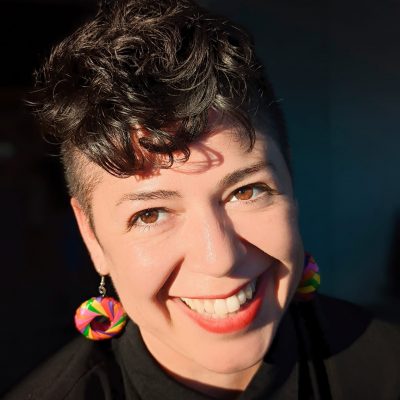 Alejandra C. (she/her) is a queer, immigrant storyteller, healing justice practitioner and entrepreneur. She leads through arts organizing and works towards embodiment of the masses. She descends from people of Chile and Mexico and lives on unceded traditional territories of the Dakota people, also known as Minneapolis, Minnesota with her two senior pups, Oso and Tigre.
Alejandra C. (she/her) is a queer, immigrant storyteller, healing justice practitioner and entrepreneur. She leads through arts organizing and works towards embodiment of the masses. She descends from people of Chile and Mexico and lives on unceded traditional territories of the Dakota people, also known as Minneapolis, Minnesota with her two senior pups, Oso and Tigre.
Location: Frogtown Farm, Hidden Falls Regional Park, Western Sculpture Park
Project: Prairie|Concrete is an outdoor embodied movement project by lead artist, Pramila Vasudevan and the Aniccha Arts collaborative, commissioned by Public Art St. Paul (PASP). This project will bring visibility to plant cycles and growing practices through embodied listening and movement sessions with communities in St. Paul, Minnesota. The commission will unfold across 3 City of St. Paul Parks – Frogtown Farm, Hidden Falls Regional Park and Western Sculpture Park – through one rehearsal, 3 movement workshops, and one event at each site as part of the first Wakpa Triennial Arts Festival.
Ian Tweedy, Artist • Groundwork
Milan-based American artist Ian Tweedy began his career as a street artist, finding success and inspiration in Germany on the streets of Hamburg, Dusseldorf, Frankfurt, and Weisband. Over time, Tweedy moved his graffiti art techniques indoors, using personal items, historical objects, and documents of the past as the canvas for his bold graphic interventions. Tweedy's immersive installations include works in a variety of media including video, drawing, and painting. A deep concern with history is pervasive throughout Tweedy’s work, much of which is informed by his life of moving from place to place and never really developing deep roots with any one country or city. In his own words, “I always felt I lived on foreign territory . . . As a result, it is difficult for me to take on a particular type of cultural past. I was forced to adapt continually to different cultures, and this lack of roots led me towards the challenge of recreating a personal history." Tweedy's work has been shown at the Prague Biennial, and in group exhibitions at the Museo MAGA and the Museo Cantonale d’Arte Lugano, among many others.
Location: Dreamsong
Project: Groundwork, presented by Dreamsong, is a group exhibition that takes terra firma as both subject and medium. A signifier of place, territory, and identity, a wellspring of life-giving nutrients, and a site of conflict over land-based indigenous rights and environmental protection, soil offers a rich prism through which the present may be both imagined and imaged. Through excavating diverse histories in artworks that take the ground as subject and material, the exhibition aims to encourage discussion about its preservation, its meaning, the claims that are made to it, and the sustenance, both spiritual and physical, that we derive from it.
Angela Two Stars, Artist • Metamorphosis
Read the interview with Angela Two Stars
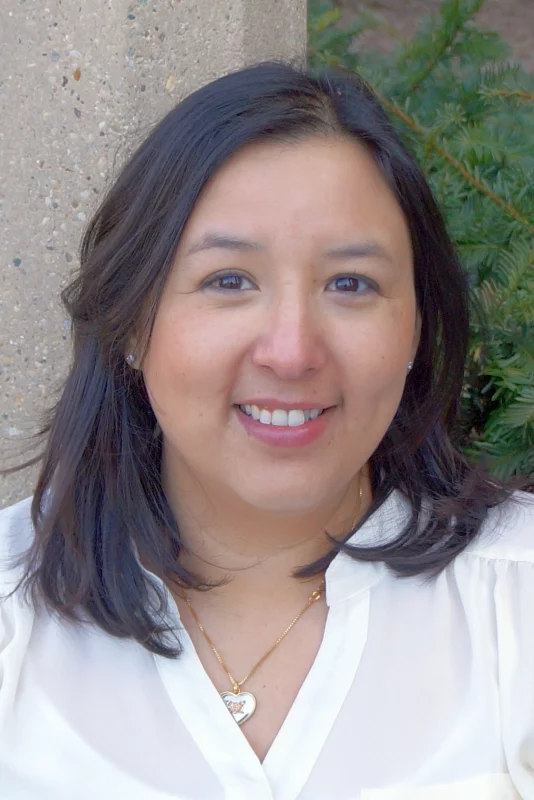
Angela Two Stars (Dakota, Sisseton Wahpeton Oyate) will present her work Metamorphosis in collaboration with Pangea World Theater, Holy Trinity Lutheran Church, and Longfellow Rising. Metamorphosis acts as phase II of The Transition Stage (2021), a temporary community cocoon installation, which served as a vessel for community laments, hopes, dreams, and mottos of strength as the Longfellow neighborhood and the city of Minneapolis moved towards growth, redevelopment and healing after the 2020 murder of George Floyd and subsequent uprisings that caused destruction and devastation to the Longfellow neighborhood.
Angela is a public artist, curator, and arts leader. She is executive director of All My Relations Gallery, a project of the Native American Community Development Institute in Minneapolis. Angela’s public art has raised awareness of the Dakota history of the Twin Cities and current Dakota culture and language. She created (with Sandy Spieler and Mona Smith) a public art environment along the shores of Bde Maka Ska that honors the Dakota people of Mni Sota and recognizes the Dakota village that was located at that site before European colonization. Angela was commissioned by the Walker Art Center's Indigenous Public Art Commission to create a public art project for the Minneapolis Sculpture Garden. Okciyapi (Help Each Other) was installed in fall 2021.
Location: 3017 27th Ave. S., Minneapolis
Project: Metamorphosis is a participatory installation by artist, Angela Two Stars, created in collaboration with Pangea World Theater, Holy Trinity Lutheran Church, and Longfellow Rising
Metamorphosis grows from The Transition Stage (2021), a temporary community cocoon installation, which served as a vessel for community laments, hopes, dreams, and mottos of strength as the Longfellow neighborhood and the city of Minneapolis moved towards growth, redevelopment, and healing after the 2020 murder of George Floyd and subsequent uprisings that caused destruction and devastation to the Longfellow neighborhood.
Metamorphosis is a two-sided mural. One side features the written contributions from The Transition Stage chrysalis installation, a reminder of the losses experienced after the uprisings of 2020, but also a reminder of the resilience and hope of the Longfellow neighborhood and an expression of how—together—we can rebuild. The other side of the artwork is a butterfly scene — the representation of the transformation, rebuilding, and strength of the community.
Events:
Butterfly Design Community Event with Angela Two Stars
Come, join in community healing, and create your own butterfly designs to add to this art.
Saturday, July 22, 10 AM - 12 PM
Saturday, August 19, 10 AM - 12 PM
3017 27th Avenue South, Longfellow Neighborhood, Minneapolis
Free and open to all.
Metamorphosis Closing Ceremony
Saturday, September 9, 11 AM – 12 PM
Gorci Vang, Artist • The Sounds of Frogtown
Gorci Vang was in CHAT’s Youth Leadership Group, writing theatre about issues that Hmong youth deal with such as peer pressure, LGBTQ and mental health issues. She had a passion for singing and performed in choir and enjoys singing to this day.
Location: Center For Hmong Arts and Talent
Century Plaza, 995 University Ave. West Suite 220, St. Paul, MN
Event: Center for Hmong Arts shares Sounds from Frogtown!
Come experience the music and artistry of some youth and emerging musicians in the heart of Frogtown Sat. August 26 from 1pm to 3pm at Century Plaza, 995 University Ave. West Suite 220, St. Paul, MN. Come meet these artists and learn about their story! Modern and Hmong songs will be performed! In addition, the students of CHAT’s summer music program will do a short recital too.
Pramila Vasudevan, Artist • Prairie|Concrete
Read our interview with Pramila Vasudevan
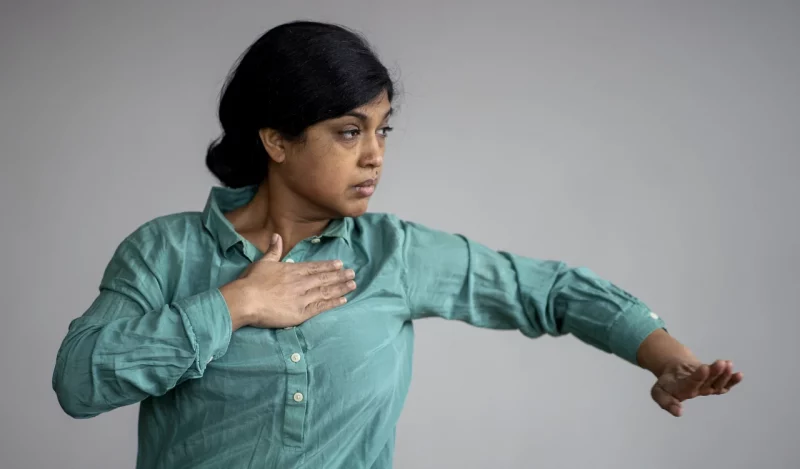 Photo by Elizabeth Flores, Star Tribune
Photo by Elizabeth Flores, Star Tribune
Pramila Vasudevan is the lead artist of Prairie | Concrete. With community engagement starting this fall, the project will come to fruition in public events in summer 2023 that will take place in several City of Saint Paul parks, where plant life will inspire movement among dancers and participants.
Pramila is trained in classical and contemporary Indian dance, electronic media, and political science. In 2004, she founded Aniccha Arts, an experimental collaborative producing site-specific performances. Her work has been presented at Northern Spark and in 2019, she produced Parking Ramp, a performance in a parking garage in Bloomington, MN. She is the recipient of fellowships from the Joyce Foundation, United States Artists, Guggenheim Foundation, and McKnight Foundation.
Location: Frogtown Farm, Hidden Falls Regional Park, Western Sculpture Park
Project: Prairie|Concrete is an outdoor embodied movement project by lead artist, Pramila Vasudevan and the Aniccha Arts collaborative, commissioned by Public Art St. Paul (PASP). This project will bring visibility to plant cycles and growing practices through embodied listening and movement sessions with communities in St. Paul, Minnesota. The commission will unfold across 3 City of St. Paul Parks – Frogtown Farm, Hidden Falls Regional Park and Western Sculpture Park – through one rehearsal, 3 movement workshops, and one event at each site as part of the first Wakpa Triennial Arts Festival.
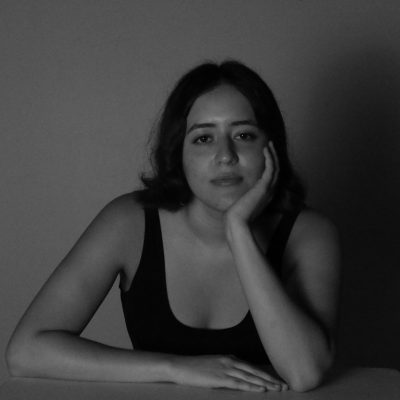
Kira Vega is a visual artist based in Saint Paul. Her work explores themes of resilience, love, loss, and celebration. She’s recently been exploring the depiction of identity through collage and mixed media. She is currently a student at St. Olaf College, where she is majoring in Studio Art. Kira worked with Public Art Saint Paul in 2022 as a Creative Program Intern and is currently working as Project Support for Prairie|Concrete. She is passionate about and dedicated to making art equitable and more accessible for all.
Moira Villiard, Artist • Constellation: Video Storytelling
Read Moira Villiard's interview
Through public art collaborations across Minnesota, Moira Villiard is a multidisciplinary artist with a mixed Indigenous and settler heritage who uses art to uplift underrepresented narratives, explore the nuance of society’s historical community intersections, and promote community healing spaces. Moira (pronounced “Miri”) is a dynamic visual artist, proficient in a variety of artistic genres, including portraiture, illustration, graphic and digital design and as a muralist. She is also a community organizer, curator and passionate arts educator concentrating her efforts around issues of equity and justice including: arts access (creating platforms for underrepresented communities within the arts), creative placemaking, environmental sustainability, youth empowerment, and acknowledgement of Indigenous land, culture, and history. Moira (Miri) grew up on the Fond du Lac Reservation in Cloquet, MN and is a Fond du Lac direct descendent. For three years she worked as the Arts & Cultural Programming Coordinator for the American Indian Community Housing Organization (AICHO), the place where she had her first art exhibition at 18 years old. She currently works as a freelance consultant, designer, speaker, and grant-writer and is the project director and lead artist of the Chief Buffalo Memorial Mural site in Duluth. Her educational, activism-rooted exhibits “Rights of the Child” and “Waiting for Beds” will be on tour in 2022, and most recently she was the featured artist at the 2021 Illuminate the Lock, where she animated and directed a 10 minute, 150’ projection piece titled “Madweyaashkaa: Waves Can Be Heard”. She was broadly recognized in 2019, when she received the 2019 Duluth NAACP “Take a Stand for the Revolution” award, 2019 Emerging City Champions fellowship, Forecast Public Art 2019 Early-Career Project Grant, 2019 YWCA Women of Distinction award, and The Duluth News Tribune 20 under 40 award. Her work has been featured in numerous shows in Duluth and around Minnesota, including her recent solo show, “Rights of the Child” at Zeitgeist, and group shows “Beyond Borders” at Mac Rostie Arts Center and “We the People” at the Minnesota Museum of American Art. She received her Bachelor’s Degree in Communicating Arts (Global Studies Minor) from the University of Wisconsin-Superior in 2016.
Project: Constellation: Video Storytelling
Constellation is a cohort of seven artists, each creating a short video to be presented in a looped series that will be projected onto the downtown Saint Paul Public Library - George Latimer on Rice Park. Videos shall interact with the architecture of the library building, transforming it into new visions for public space and public knowledge. Artists include: Za’nia Coleman; Boo McCaleb; SEE MORE PERSPECTIVE; Witt Siasoco; Miko Simmons; Jonathan Thunder; and Moira Villiard.
Where:
Rice Park & Saint Paul Public Library - George Latimer Central Library
109 W 4th St, St Paul, MN 55102
Dates and Times:
9/14 - 8:00 PM-9:00 PM - Preview Night
9/15 - 5:00 PM-9:30 PM
9/16 - 5:00 PM-9:30 PM
Ben Weaver, Artist • Flower Power VII
Flower Power artists, when you collect all our efforts together, we represent layers and decades of working for truth, goodness, peace, and gentle wisdom. We are young and old, each with a different story that brings us to a shared world vision. People and flowers are both powerful species on Earth. Flower Power has organically grown out of the Minnesota landscape, out of public demonstration and opposition to state violence, incarceration, and climate crisis. We are individuals trying to present a more compassionate world; our cut flower installations are like portraits that help us deal with complex and abstract problems of injustice. We dedicate a whole day to paying respect to the injustices served, the hardships suffered, and the joy that persists. It’s a time when we use our art and spend it as a community to change the course of past directions. We are different minds and yet of the same heart. We stand with humanity and the Earth as protectors of land and life.
Project: Flower Power VII
Saturday, August 5, sunrise to sunset
Indian Burial Mounds Regional Park
10 Mounds Boulevard, Saint Paul 55106
Oyate Hotanin, a Native-led arts, thought, and social justice organization, presents of Flower Power VII, an annual event aimed at helping us all to remember who we are, to work to eliminate our incarceration state, rescue our planet, and lead a worldwide movement of a billion good relatives, Flower Power centers on the creation of an ephemeral work of art, made from cut flowers. Over the course of a day, artists arrange the blooms in a mosaic-like pattern on the grass surrounding the sculpture, Sacred Bowl, by Ojibwe artist Duane Goodwin.
Location:
Saturday, August 5, sunrise to sunset
Indian Burial Mounds Regional Park
10 Mounds Boulevard, Saint Paul 55106
Dr. Gwen Westerman, Artist • Silverwood Poetry Trail
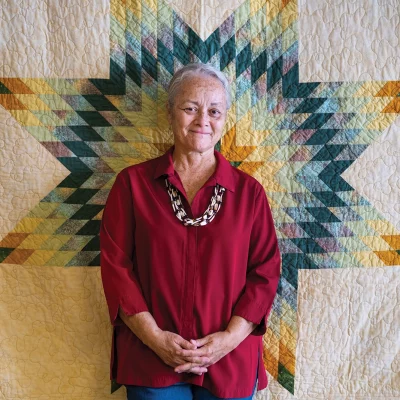
Gwen Westerman
Gwen Westerman’s roots are deep in the landscape of the tall grass prairie, and reveal themselves in her art and writing through the languages and traditions of her family. She is an enrolled member of the Sisseton Wahpeton Dakota Oyate, her father’s people, and a citizen of the Cherokee Nation, her mother’s people. She is the co-author of Mni Sota Makoce: The Land of the Dakota which won a 2013 Minnesota Book Award, and a 2014 Hognander Minnesota History Award. A three-time recipient of an Artist Initiative Grant from the Minnesota State Arts Board, Gwen creates incredible textile art influenced by her life and Indigenous cultures. Since 2005, she has been creating quilts that have won awards at the juried shows of the Northern Plains Indian Art Market in Sioux Falls, the Eiteljorg Indian Art Market in Indianapolis, and the Heard Museum Guild Indian Art Fair & Market in Phoenix. Her work is in the permanent collections of the Red Cloud Heritage Center Museum in Pine Ridge, the University Art Galleries at the University of South Dakota, the Great Plains Art Museum in Lincoln, Nebraska, and the Minnesota Historical Society in St. Paul.
Location: Silverwood Park
Project: Silverwood’s Poetry Trail is a self-guided audio tour featuring work by local and regional poets and writers. Six stops are located next to a bench along a paved trail that loops around the park moving from forest to lake to prairie. The 2023 - 24 poets were curated by Su Hwang.
Claire Wilcox, Performer • Prairie|Concrete
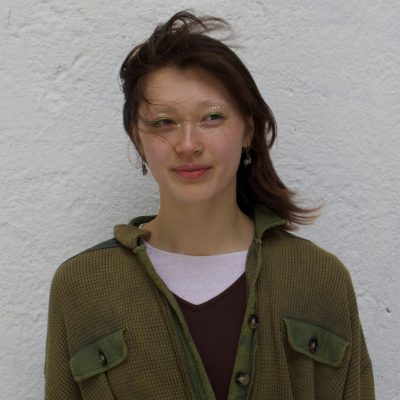
Claire Wilcox (she/they) is a Dance BFA student at the University of Minnesota - Twin Cities. They were born and raised in St. Paul, Minnesota where they trained in folk, classical, and contemporary Chinese dance forms at CAAM Chinese Dance Theater. Claire aspires to perform, choreograph, and collaborate while developing their movement aesthetic grounded in ancestry and community. They are grateful for the love and support of their family, friends, and mentors.
Location: Frogtown Farm, Hidden Falls Regional Park & Western Sculpture Park
Project: Prairie|Concrete is an outdoor embodied movement project by lead artist, Pramila Vasudevan and the Aniccha Arts collaborative, commissioned by Public Art St. Paul (PASP). This project will bring visibility to plant cycles and growing practices through embodied listening and movement sessions with communities in St. Paul, Minnesota. The commission will unfold across 3 City of St. Paul Parks – Frogtown Farm, Hidden Falls Regional Park and Western Sculpture Park – through one rehearsal, 3 movement workshops, and one event at each site as part of the first Wakpa Triennial Arts Festival.
Hui Wilcox, Performer • Prairie|Concrete
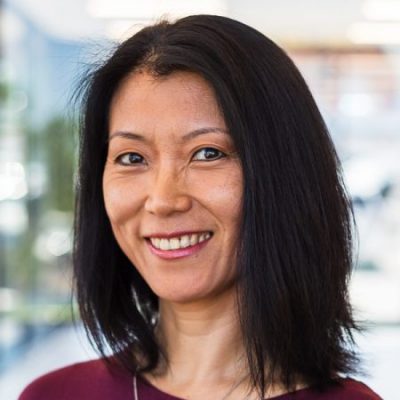
Hui Wilcox is a Chinese American educator, scholar, movement artist, and a lifelong explorer of the intersection of dance, organizing, and education. She trained in Yorchha, Chinese folk and classical dance, as well as Chinese martial arts. A founding artist of Ananya Dance Theatre, Hui performed with the company from 2004 to 2019. Her current movement practice centers around Taiji and Taiji-based improvisation. She is curious about what happens (to us and to the world around us) when we slow down with intention.
Location: Frogtown Farm, Hidden Falls Regional Park & Western Sculpture Park
Project: Prairie|Concrete is an outdoor embodied movement project by lead artist, Pramila Vasudevan and the Aniccha Arts collaborative, commissioned by Public Art St. Paul (PASP). This project will bring visibility to plant cycles and growing practices through embodied listening and movement sessions with communities in St. Paul, Minnesota. The commission will unfold across 3 City of St. Paul Parks – Frogtown Farm, Hidden Falls Regional Park and Western Sculpture Park – through one rehearsal, 3 movement workshops, and one event at each site as part of the first Wakpa Triennial Arts Festival.
Lynn Wilcox, Performer • Prairie|Concrete

Lynn Wilcox is a graduate of Highland Park Senior High, and will be attending Barnard College in the fall, planning to major in creative writing. She is from St. Paul, Minnesota, and grew up immersed in the arts. She has danced with CAAM Chinese Dance theater for fifteen years. Lynn works to approach dance as a communal transformative practice driven by nature and ancestry.
Location: Frogtown Farm, Hidden Falls Regional Park & Western Sculpture Park
Project: Prairie|Concrete is an outdoor embodied movement project by lead artist, Pramila Vasudevan and the Aniccha Arts collaborative, commissioned by Public Art St. Paul (PASP). This project will bring visibility to plant cycles and growing practices through embodied listening and movement sessions with communities in St. Paul, Minnesota. The commission will unfold across 3 City of St. Paul Parks – Frogtown Farm, Hidden Falls Regional Park and Western Sculpture Park – through one rehearsal, 3 movement workshops, and one event at each site as part of the first Wakpa Triennial Arts Festival.
Bobby Wilson, Artist • The Procession of St. Paul
Born and raised in the Twin Cities, Bobby “Dues” Wilson is a Sisseton-Wahpeton Dakota artist, dad, and comedian based in Phoenix, Arizona. Bobby attended the Creative Arts High School in St. Paul, where his interests in painting and poetry were heavily encouraged. He participated in youth art programs at COMPAS arts in St. Paul and trained in mural painting in Minneapolis under Roger Cummings and Peyton Russell at Juxtaposition Arts. He has painted several murals around the Twin Cities. Now Bobby works as a writer and producer on television series like Rutherford Falls, Echo, and the Peabody Award-winning series, Reservation Dogs. Wilson is known as one of the founding members of Indian Sketch Comedy group The 1491s.
Growing up in the Twin Cities, he and his family frequently lived out of women's shelters and homeless shelters. He began his graffiti artist and spoken-word poetry careers as a teenager. His work is heavily influenced by his Dakota heritage with his city upbringing and ties in commentary on colonization, racism, modern imagery of Native American peoples, homelessness, and many more issues faced by indigenous peoples today. He has since created many murals across the country and has been a featured Artist in Residence, including for the National Museum of the American Indian (NMAI), the Institute of American Indian Arts (AIAI), and Yale. Wilson now travels around the country conducting youth writers’ workshops, art workshops, emceeing events, and comedy performances with The 1491s. Wilson is also a skilled beader whose work has been featured in Vogue's "Meet 8 Indigenous Beaders Who Are Modernizing Their Craft".
In 2019 The Oregon Shakespeare Festival commissioned The 1491s, Wilson included, to write a play with New Native Theater titled "Between Two Knees.” The story tells of familial love, loss, and connection that spans from the 1890 massacre at Wounded Knee to the 1973 takeover at Wounded Knee. The play ran from April 3 - October 27, 2019.
Project: The Procession of St. Paul
The Procession of St. Paul is a quadriptych (4 panels) depicting close up scenes of life around public transit in St. Paul. Each location offers moments of anthropomorphic animal interactions using socioeconomically-charged spaces as a backdrop: at a bus stop at Payne & Case on the Eastside, outside the Ramsey County courthouse, the Super America gas station on East 7th, and the UnBank on University and Lexington. The animals that gather are representative of diverse cultures in St. Paul. They are beginning to gather, led by a Dakota-animal, to make their way to Wakan Tipi.
This installation also serves as the beginning stages of gathering community feedback in order to create a similarly themed mural by Bobby Wilson on a retaining wall on St. Paul’s East Side.
This prototype mural is installed in the Bruce Vento Nature Sanctuary in St. Paul at a temporary outdoor classroom space, where Wakan Tipi Awanyankapi, a Native-led organization, holds art demonstrations, cultural activities, and gather for restoration events until its new Center building is completed.
Location: Wakan Tipi Awanyankapi/Bruce Vento Nature Sanctuary- near outdoor classroom
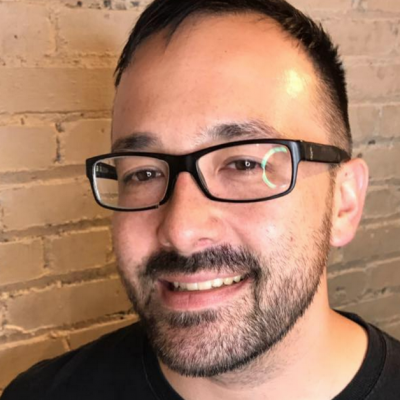
Wes Winship (Minneapolis)
@wzzwnshp
Wes Winship is a muralist, fine artist, and printmaker with storied roots in graffiti and street art. Co-founder of internationally known design and screen print collective, Burlesque of North America, Wes is an entrepreneur who has built a creative legacy in the Twin Cities and beyond. He is also founder of fine art off-shoot, Burlesque Public Works, which produces large-scale paintings, murals, and site-specific installations, often collaborating with businesses, major sporting events, and music festivals. On his process, Wes says, “Making stuff is my entire existence. My career consists of having an idea, figuring out how to do it, making that idea a reality and stumbling on the next idea in the process.”
Project: Mural in the Creative Enterprise Zone for Chroma Zone Mural & Art Festival 2023
Dates: September 14, 15 & 16
Location: Creative Enterprise Zone (CEZ), a district centered on the Raymond-University neighborhood of Saint Paul: Click here for a Map of all the Murals in the CEZ.
Visit Chroma Zone for more event info.
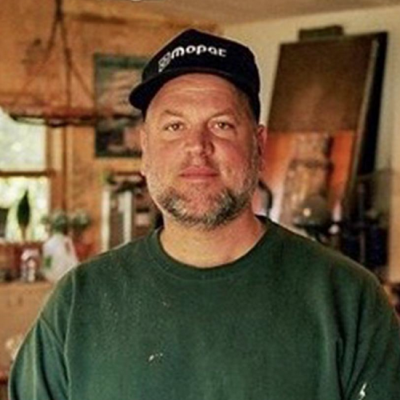
Forrest Wozniak
@forrestwozniak
Forrest Wozniak was born and raised in South Minneapolis. He has a background in construction and restoration. Forrest is a local sign painter, and has been painting large historic and iconic outdoor signs and advertisements around the Twin Cities for the past 20 years. Forrest paints both clients' designs and his own.
Project: Mural in the Creative Enterprise Zone for Chroma Zone Mural & Art Festival 2023
Dates: September 14, 15 & 16
Location: Creative Enterprise Zone (CEZ), a district centered on the Raymond-University neighborhood of Saint Paul: Click here for a Map of all the Murals in the CEZ.
Visit Chroma Zone for more event info.
Nick Wroblewski, Artist • Waking Worlds: Wondrous Reads for Curious Minds
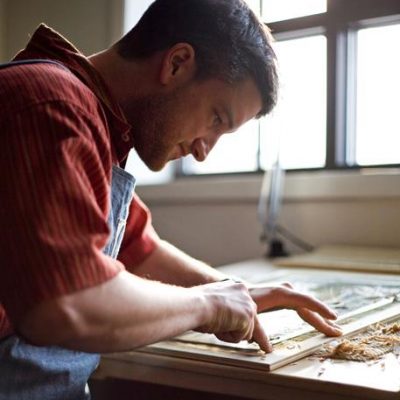 Nick Wroblewski is a Midwest based printmaker of hand cut woodblocks. His interest in art was cultivated young by a strong community of artists in Minneapolis, MN, where he grew up. Early experiences in puppetry, painting, and sculpture led to his work as a printmaker. Nick focuses on large multicolor woodcuts and has developed a distinct aesthetic reminiscent of stylized Japanese masters, yet uniquely his own. His work depicts the reverence he has for conversations of the wild and loyalty to the honesty of handcrafted arts. Nick's work can be seen in private collections and galleries throughout the country, as well as commercial design and illustrations. He lives in Duluth, Minnesota and prints from his studio near Lake Superior. Nick’s woodcut illustrations appear in Mary Casanova’s books Wake Up Island (2016) and Hush Hush, Forest (2018) from the University of Minnesota Press.
Nick Wroblewski is a Midwest based printmaker of hand cut woodblocks. His interest in art was cultivated young by a strong community of artists in Minneapolis, MN, where he grew up. Early experiences in puppetry, painting, and sculpture led to his work as a printmaker. Nick focuses on large multicolor woodcuts and has developed a distinct aesthetic reminiscent of stylized Japanese masters, yet uniquely his own. His work depicts the reverence he has for conversations of the wild and loyalty to the honesty of handcrafted arts. Nick's work can be seen in private collections and galleries throughout the country, as well as commercial design and illustrations. He lives in Duluth, Minnesota and prints from his studio near Lake Superior. Nick’s woodcut illustrations appear in Mary Casanova’s books Wake Up Island (2016) and Hush Hush, Forest (2018) from the University of Minnesota Press.
Location: MN Marine Art Museum
Project: The exhibition features original illustrations from three book projects; Mary Casanova’s Wake Up Island (University of Minnesota Press) and Hush, Hush, Forest (University of Minnesota Press) as illustrated by printmaker Nick Wroblewski, and World of Wonders: In Praise of Fireflies, Whale Sharks, and Other Astonishments (Milkweed Editions) written by Aimee Nezhukumatathil and illustrated by Fumi Nakamura. Selections from all three books will be accompanied by wood carvings from the Minnesota Marine Art Museum’s collection of Leo and Marilyn Smith folk art - a collection of sculptures informed by the whimsy and wonder of the Mississippi River marine environments - interspersed throughout the gallery.
Azzi Xiong, Artist • Flower Power VII
Flower Power artists, when you collect all our efforts together, we represent layers and decades of working for truth, goodness, peace, and gentle wisdom. We are young and old, each with a different story that brings us to a shared world vision. People and flowers are both powerful species on Earth. Flower Power has organically grown out of the Minnesota landscape, out of public demonstration and opposition to state violence, incarceration, and climate crisis. We are individuals trying to present a more compassionate world; our cut flower installations are like portraits that help us deal with complex and abstract problems of injustice. We dedicate a whole day to paying respect to the injustices served, the hardships suffered, and the joy that persists. It’s a time when we use our art and spend it as a community to change the course of past directions. We are different minds and yet of the same heart. We stand with humanity and the Earth as protectors of land and life.
Project: Flower Power VII
Saturday, August 5, sunrise to sunset
Indian Burial Mounds Regional Park
10 Mounds Boulevard, Saint Paul 55106
Oyate Hotanin, a Native-led arts, thought, and social justice organization, presents of Flower Power VII, an annual event aimed at helping us all to remember who we are, to work to eliminate our incarceration state, rescue our planet, and lead a worldwide movement of a billion good relatives, Flower Power centers on the creation of an ephemeral work of art, made from cut flowers. Over the course of a day, artists arrange the blooms in a mosaic-like pattern on the grass surrounding the sculpture, Sacred Bowl, by Ojibwe artist Duane Goodwin.
Location:
Saturday, August 5, sunrise to sunset
Indian Burial Mounds Regional Park
10 Mounds Boulevard, Saint Paul 55106
Kevin Yang, Artist • Silverwood Poetry Trail
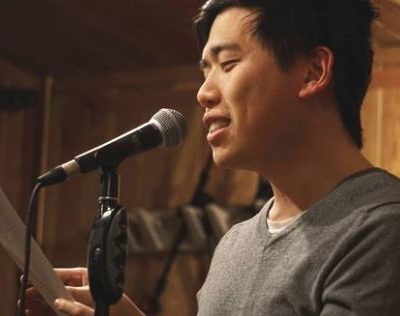 Kevin Yang is a writer, performer, organizer, and has recently delved into filmmaking. At his core, he is a storyteller. His hunger to tell and receive stories sits at the center of each of his disciplines. As a young Hmong American born and raised in the United States, he has a deep conceptual interest for in-between spaces; between ethnicities, between generations, between experiences. Similarly, he finds great influence from artists who approach this subject matter, like Bao Phi, Jhumpa Lahiri, and Kao Kalia Yang. He also finds great influence in the communities generate the conversations that allow this subject matter to exist. He is influenced by his parents and elders, as much as he is by his baby brothers and the youth he works with, not only in what stories they tell, but how they choose to tell them. Accessibility is a value he holds dearly in his art, especially as he attempts to create art that can exist and thrive inside of these in-between spaces. Kevin is always eager to find ways to transcend or even flip barriers, like language or technology, in order to generate thought, conversation, and action between communities. For Kevin, art should always be rooted in the community, and if the community cannot receive or understand his art, then he has to find a way to change it. On the flip side, he hopes his art is not always easily digested; he hopes it encourages growth and discomfort and deep thought as needed, but he needs to know that his community understands that. He also loves to play with his art. Joy, giddyness, and laughter are important parts of his character and are all things he tries to uncover in his stories.
Kevin Yang is a writer, performer, organizer, and has recently delved into filmmaking. At his core, he is a storyteller. His hunger to tell and receive stories sits at the center of each of his disciplines. As a young Hmong American born and raised in the United States, he has a deep conceptual interest for in-between spaces; between ethnicities, between generations, between experiences. Similarly, he finds great influence from artists who approach this subject matter, like Bao Phi, Jhumpa Lahiri, and Kao Kalia Yang. He also finds great influence in the communities generate the conversations that allow this subject matter to exist. He is influenced by his parents and elders, as much as he is by his baby brothers and the youth he works with, not only in what stories they tell, but how they choose to tell them. Accessibility is a value he holds dearly in his art, especially as he attempts to create art that can exist and thrive inside of these in-between spaces. Kevin is always eager to find ways to transcend or even flip barriers, like language or technology, in order to generate thought, conversation, and action between communities. For Kevin, art should always be rooted in the community, and if the community cannot receive or understand his art, then he has to find a way to change it. On the flip side, he hopes his art is not always easily digested; he hopes it encourages growth and discomfort and deep thought as needed, but he needs to know that his community understands that. He also loves to play with his art. Joy, giddyness, and laughter are important parts of his character and are all things he tries to uncover in his stories.
Location: Silverwood Park
Project: Silverwood’s Poetry Trail is a self-guided audio tour featuring work by local and regional poets and writers. Six stops are located next to a bench along a paved trail that loops around the park moving from forest to lake to prairie. The 2023 - 24 poets were curated by Su Hwang.
Keng Yang, Artist • The Sounds of Frogtown
Keng Chris Yang is a musician based in the Twin Cities. He is a graduate of McNally Smith College of Music in Guitar Performances and Music Business. He’s travel to Thailand several times to teach youth music and has performed in hilltop villages of Thailand to libraries to concert halls. He is a teacher and performer with CHAT and Street Stops and Mountain Tops. He is a big John Mayer fan!
Location: Center For Hmong Arts and Talent
Century Plaza, 995 University Ave. West Suite 220, St. Paul, MN
Event: Center for Hmong Arts shares Sounds from Frogtown!
Come experience the music and artistry of some youth and emerging musicians in the heart of Frogtown Sat. August 26 from 1pm to 3pm at Century Plaza, 995 University Ave. West Suite 220, St. Paul, MN. Come meet these artists and learn about their story! Modern and Hmong songs will be performed! In addition, the students of CHAT’s summer music program will do a short recital too.
We will have a small reception with refreshments to meet the artists after their performances.
Shen Yong, Artist • It’s the People
Shun Yong is a fine art photographer and multidisciplinary artist. A fear of loss, generational trauma and curiosity motivate him to make photographs. Yong’s Occupation series investigates his identity as a second-generation Chinese immigrant in Malaysia as well as a new immigrant to the U.S. Producing the Occupation series has not only helped him achieve a sense of belonging in both places, but also allows him to connect with family and strangers alike. Yong’s C-H-F investigates what motivates Asian climbers to take part in what is considered a “white” sport. He is also the co-founder of CarryOn Homes, a collaborative dedicated to telling the stories of immigrants and refugees in the U.S. through art. By engaging the public in cross-cultural dialogue, CarryOn Homes creates spaces for immigrants and marginalized communities to feel a sense of belonging and empowerment.
Location: Hennepin Theatre District
Project: Hennepin Theatre Trust’s 2023-24 edition of It’s the People features large-scale photo banners along Hennepin Avenue in downtown Minneapolis. This public art initiative is inspired by the exceptional, everyday people whose experiences, contributions and stories create the unique vibrancy of our shared communities.
Laura Youngbird, Artist
Laura Youngbird is an artist and art educator. She earned her BS, BFA, and MA from Minnesota State University Moorhead with a minor in American Indian Studies. As an undergraduate, she worked in the Archaeology department as a lab and field assistant. She is an enrolled member of the Minnesota Chippewa, Grand Portage Band. The themes in her work originated from experiences her family—particularly her grandmother—had while at boarding schools and issues that surrounded their assimilation into non-Indian culture. Laura also explores the influences of Christianity on American Indian spirituality and life views.
Project: Inde Wiisagendam (My Heart Hurts) -
Inde Wiisagendam (My Heart Hurts) is a solo exhibition by Laura Youngbird (Minnesota Chippewa, Grand Portage Band). Using the dress as a metaphor, her work addresses a wide range of social issues, injustices and biases. Through mixed media — combining drawing, painting and prints — Laura explores the dress as a consistent and important symbol in her work, as this simple garment contains layer upon layer of meaning. The works in this series examine mixed emotions and themes such as common thread, loose ends, and threadbare.
The exhibition is on view from July 14th to September 9th, 2023.
Learn more about the artist and exhibition here.
Mathew Zefeldt, Artist • Groundwork
Mathew Zefeldt is an Assistant Professor of Painting and Drawing at the University of Minnesota. He was one of two national recipients of the Dedalus MFA Fellowship in 2011, and was included in New American Paintings Magazine. Zefeldt has had solo shows at The Soap Factory, Minneapolis, USA; Circuit 12, Dallas, USA; The Institute of Art in Minneapolis, USA; the Santa Monica Museum of Art, USA; Good Weather, Little Rock, USA; Hap Gallery, Portland, USA; Michael Rosenthal Gallery, San Francisco, USA, and Swarm Gallery, Oakland, USA. Zefeldt has been part of group exhibitions at Lisa Cooley, New York, USA; Eleanor Harwood, San Francisco, USA; MOHS, Copenhagen, Denmark and Circuit 12, Dallas, USA.
Location: Dreamsong
Project: Groundwork, presented by Dreamsong, is a group exhibition that takes terra firma as both subject and medium. A signifier of place, territory, and identity, a wellspring of life-giving nutrients, and a site of conflict over land-based indigenous rights and environmental protection, soil offers a rich prism through which the present may be both imagined and imaged. Through excavating diverse histories in artworks that take the ground as subject and material, the exhibition aims to encourage discussion about its preservation, its meaning, the claims that are made to it, and the sustenance, both spiritual and physical, that we derive from it.
Art Locations & Venues
Address: 1414 E Franklin Ave #1, Minneapolis, MN 55404
Artists & Projects
Angela Two Stars • Metamorphosis • Located at 3017 27th Ave S, Minneapolis, MN 55406
Laura Youngbird • Inde Wiisagendam (My Heart Hurts) • July 14, 2023 – September 9, 2023
See new works by Laura Youngbird, an enrolled member of the Minnesota Chippewa, Grand Portage Band. Based in Breckenridge, MN, Laura was the first Director of Native American Art Programs at Plains Art Museum, Fargo, and also taught art at Circle of Nations School in Wahpeton, North Dakota. She has been an Artist-in-Residence for the North Dakota Council on the Arts and Fargo Public Schools. Laura has received several awards including a 2018 First People’s Fund - Artist in Business Fellowship, Artist Initiative Grants in 2009 and 2013 from the Minnesota State Arts Board, and a Jerome Fellowship in 2003 to work and study with master potter, Richard Bresnahan at St. John’s University. She recently received an Artist in Residence Fellowship from the Institute of American Indian Art, Santa Fe. Laura has her Masters in printmaking and is a practicing artist, working in mixed-media drawing, painting, sculpture and ceramics. Her work has been shown in numerous regional and national exhibitions. Her work often addresses issues related to her grandmother’s boarding school experience and issues around the forced assimilation of indigenous children. Laura also is active in the movement to rescue and prevent Missing and Murdered Indigenous Persons (MMIP).
163 Tower View Dr, Red Wing, MN 55066
Artists & Project
Cecilia Cornejo (Sotelo), Threads of Connection and Belonging
Through sound, images, and the written word, Cecilia Cornejo’s collaborative work engages community members to reflect on ideas of home, connection, and belonging. Cornejo has embraced multiple ways of sharing stories. From the high tech—indexed databases, touchscreens, and sound domes—to traditional practices of embroidery, "Threads of Connection and Belonging" shares broad perspectives united by one idea: What does it mean to be home? The multiplicity of voices that populate the exhibition have been gathered in Southeastern Minnesota over the past five years through Cornejo’s multiplatform project, "The Wandering House," which features an inviting mobile audio recording studio. “Cecilia has built connections with many people, including and especially those whose stories aren’t always highlighted,” says Artistic Director Stephanie Rogers. “Through her work, the stories collected are given back to the people and places they came from in a framework that invites reflection and discovery.”
Capital Region Watershed District
595 Aldine St, St Paul, MN 55104
Events:
Into the Depths with the artARK at CRWD
Thursday, August 3, 6:30 PM
Capitol Region Watershed District
595 Aldine St, St Paul, MN 55104
Join Seitu Jones for a (dry land) tour of artARK, a floating platform for artistic and scientific exploration of the Mississippi River. Seitu Jones’s artARK and this program are part of the Wakpa Triennial, presented by Public Art Saint Paul. Seitu and his team will share their inspiration and vision for this project including boat building techniques and a river-based curriculum.
Seitu’s legacy in the arts was woven into the work of Capitol Region Watershed District (CRWD), where he spent 17 years on its Board of Managers. Join us for a tour of CRWD’s sustainable and LEED Gold certified building. Learn how rainwater is captured, filtered, re-used on site, and hear about CRWD’s art-centered approach to engagement.
About artARK
Inspired by activist Pete Seeger’s creation of the sloop, Clearwater, on the Hudson River in upstate New York, and the Science Museum of Minnesota’s boat, The River Eye, Seitu Jones has designed and built a wooden pontoon boat, called the artARK. Elements of the artARK were built in the public space of the Urban Boatbuilders’ shop. The artARK serves as a floating platform for artistic and scientific experiences on the Mississippi River and in St. Paul. artARK is created by Seitu Jones in partnership with Public Art Saint Paul, Capitol Region Watershed District (CRWD) and Mississippi Watershed Management Organization (MWMO) and is part of the Wakpa Triennial Art Festival.
City of Bloomington- Creative Placemaking
Artists & Projects
Gordon Coons, Gidibaajimomin - 'We Tell Stories'
June 16 to August 20 at Minnesota Valley National Wildlife Refuge
3815 American Blvd. East, Bloomington, MN 55425.
- Exhibition runs from June 16 to August 20 at Minnesota Valley National Wildlife Refuge, 3815 American Blvd. East, Bloomington, MN 55425.
- In Gidibaajimomin - 'We Tell Stories,' Gordon Coons’ work comes from his heritage of Ojibwe. He is an enrolled member of the Lac Courte Oreilles Band of Lake Superior Chippewa Indians of Wisconsin. he currently lives in Minneapolis, Minnesota, and have been a resident here for the past 46 years. He uses his traditional Ojibwe clan animal stories to educate people about our shared relationship with the natural world. He creates Ojibwa stories of celestial events, animals, and man by painting in the Ojibwa Woodland art style, reduction block prints, and transferring cedar smoke to paper. His creations are a journey to a better place by creating a stronger relationship between animals and nature.
Sandy Spieler & Tanaǧidaŋ To Wiŋ (Tara Perron), Here, Now - Instructions for ‘Listening’
Sunday, July 23rd at Old Cedar Avenue Bridge Trailhead,
9898 Old Cedar Ave S, Bloomington, MN 55425
-
In solidarity with WAKPA Triennial Art Festival: A pop-up activity to encourage deep listening into the present site of the South Loop District; in the Here and Now. This activity is initiated and guided by Tara Tanagidan To Win and Sandy Spieler. Will you come and listen with us? You will be invited to use all your senses... of ears, eyes, feet, mind, and heart. Your detailed observations will be valued toward our on-going research of this place.
Latino Conservation Week Festival
- Saturday, July 22, 1 - 5 p.m. at Minnesota Valley National Wildlife Refuge, Education and Visitor Center, 3815 American Boulevard East, Bloomington MN 55425
- Minnesota Valley National Wildlife Refuge, the City of Bloomington, and Indigenous Roots presents Latino Conservation Week Festival, an event to celebrate the cultures that make up the Latino community and the nature that connects us all. Join us for a day of music, art, and food. Everyone is welcome at this free event!
Dr. Kate Beane and Peter DeCarlo, An Indigenous History of Bloomington, Minnesota
-
August 22, 2023. 6:30 pm-8:30 pm at Bloomington Civic Plaza, Art Center - Black Box Theater, 1800 W Old Shakopee Road Bloomington, MN 55431
-
Indigenous Peoples have inhabited and been in relationship with the land now called Bloomington, Minnesota for thousands of years. Historians Dr. Kate Beane and Peter DeCarlo will discuss this deep history, the Dakota people who have called this land home, and the impacts colonization has had on both the people and landscape. We will ask how history can inform art, help us heal divisions, and create a better future for our communities.
Center For Hmong Arts and Talent
995 University Ave W, Suite 220, St Paul, MN 55104
Artists & Project
Center for Hmong Arts shares Sounds from Frogtown!
Come experience the music and artistry of some youth and emerging musicians in the heart of Frogtown Sat. August 26 from 1pm to 3pm at Century Plaza, 995 University Ave. West Suite 220, St. Paul, MN. Come meet these artists and learn about their story! Modern and Hmong songs will be performed! In addition, the students of CHAT’s summer music program will do a short recital too.
We will have a small reception with refreshments to meet the artists after their performances.
Yue Lor, Gorci Vang, Keng Yang are among the musicians performing.
Gorci Vang was in CHAT’s Youth Leadership Group, writing theatre about issues that Hmong youth deal with such as peer pressure, LGBTQ and mental health issues. She had a passion for singing and performed in choir and enjoys singing to this day.
Keng Chris Yang is a musician based in the Twin Cities. He is a graduate of McNally Smith College of Music in Guitar Performances and Music Business. He’s travel to Thailand several times to teach youth music and has performed in hilltop villages of Thailand to librairies to concert halls. He is a teacher and performer with CHAT and Street Stops and Mountain Tops. He is a big John Mayer fan!
The Creative Enterprise Zone (CEZ) is a city-recognized district and a nonprofit organization dedicated to attracting and supporting creative people and businesses to #MakeItHere. Located between Saint Paul and Minneapolis downtowns, the Zone is a growing residential community that is home to hundreds of creative makers and entrepreneurs. The CEZ district is located in the South Saint Anthony Park and Raymond-University neighborhoods of Saint Paul.
Since 2019, the CEZ has been adding outdoor public murals to reflect the creativity happening in the CEZ, present a more welcoming and inclusive narrative, and foster connections in a fast-growing, mixed-use commercial and residential neighborhood.
2023 Chroma Zone Mural & Art Festival
Since 2019, the CEZ has produced over forty murals as part of the Chroma Zone Mural & Art Festival. The focus is on public murals and artist-led programs and events, to connect and engage our community, add beauty to our streets, support artists, and reflect the creativity inside our buildings on the outside. We advance representation in our public art by recruiting diverse muralists with important stories to tell, and by ensuring they are fairly compensated and retain creative control.
Festival details are below, with more info on the Chroma Zone webpage!
--
2023 Chroma Zone Mural & Art Festival
September 14, 15 & 16
Location: The Festival is produced and located within the Creative Enterprise Zone (CEZ) of St. Paul. The CEZ district includes the South Saint Anthony Park and Raymond-University neighborhoods in Saint Paul
The festival is free and open to the public!
The annual Chroma Zone Mural & Art Festival — a celebration of public art and community — returns with eight new murals and three days of artist-led programs and events in the Creative Enterprise Zone (CEZ) district.
The community celebration will feature:
- new murals
- community focused events and programs
- artist-led activities and tours in the Creative Enterprise Zone (CEZ)
Chroma Zone advances representation in public art by prioritizing artists of color, Indigenous and Native artists, Queer and Womxn muralists. Since 2019, Chroma Zone has produced 43 murals in the Zone; 82% by local artists, 80% by BIPOC artists, and 50% by Womxn.
Six new Chroma Zone murals were created by four local artists and two national muralists. Muralists were given walls and the freedom to explore themes and imagery meaningful to them.
2023 MURALISTS
This year’s Chroma Zone muralists are from Minnesota, Chicago and Detroit, and were chosen in consultation with the festival’s founding partner and creative consultant, Forecast Public Art, a national public arts leader for over 40 years and a creative business in the Zone. All festival artists are compensated for their time and artistry by the CEZ and retain creative control.
Local:
- Hend Al-Mansour -- hendalmansour.com
- Leslie Barlow -- lesliebarlowartist.com
- Philipo Dyauli -- philipodyauli.com
- Wes Winship -- @wzzwnshp
National:
- Max Sansing -- maxsansing.com
- Sydney James -- @sydneygjames
Up to four additional murals will be created during the festival with:
- Michael Engebretson with Interact Gallery Gallery -- interactcenterarts.org
- Votan Henriquez -- @votanik
- Reggie LeFore -- @ral86
- Forrest Wozniak -- @forrestwozniak
--
Join us for these events September 14, 15 & 16!
THURSDAY, SEPTEMBER 14
Chroma Zone POP-UP EXHIBIT @ NewStudio Gallery
2303 Wycliff St.
Opening reception 5:00-8:00 PM
Discover art by 2023 Chroma Zone muralists and alumni at this three-day Pop-Up exhibit at NewStudio Architecture & Gallery. Meet the artists during the exhibit opening. Includes an adjacent gallery exhibit with Chroma Zone alum Rock “Cyfi” Martinez (‘21).
Meet the artists, shop works on paper, paintings and more, and enjoy light refreshments and local beer at the
Gallery hours:
Thursday, 9/14 from 5:00-8:00 PM
Friday, 9/15 from 10:00 AM-4:00 PM
Saturday, 9/16 from 10:00-4:00 PM
While here, don’t miss 2023 Chroma Zone muralist Max Sansing on-site at The Wycliff, 2327 Wycliff St., September 11-16.
FRIDAY, SEPTEMBER 15
ARTIST TALK, Makers Market, Live Painting & More @ Vandalia Tower
550 Vandalia St.
5:00 PM 8:00 PM
Join us for an evening of artist-led programming at Vandalia Tower. Enjoy a pre-show artist meet-and-greet, live painting demos & a makers market at Lake Monster Brewing, before heading next door to Saint Paul Neighborhood Network (SPNN) studio to enjoy a lively panel discussion with select 2023 muralists.
- Pre-show Artist Meet-and-Greet @ Lake Monster Brewing, 5:00-6:00 PM
- Makers Market and live painting with Geno Okok at Lake Monster Brewing, 5:00-8:00 PM
- Panel discussion moderated by local muralist Zamara Cuyun @ SPNN studios, 6:30-8:00 PM. Featuring 2023 muralists Leslie Barlow, Hend Al-Mansour, Wes Winship, and Max Sansing.
- On-site food and beverage available at Lake Monster Brewing Co. and King Coil Distillery
While here, be sure to check out the over 50+ murals, creative people and businesses in Saint Paul’s only Creative Enterprise Zone.
SATURDAY, SEPT 16
MURAL BUS TOURS, live painting & more at DCBC’s Blocktoberfest 2023
12:00 PM 4:00 PM at Dual Citizen Brewing Co. (DCBC), 725 Raymond Ave.
Hop aboard the Can Can Wonderland Putt Putt bus for free tours of the new 2023 Chroma Zone murals, plus live painting, art activities & more at Blocktoberfest, Dual Citizen Brewing’s free outdoor music event. Blocktoberfest runs from 12:00 PM – 11:00 PM in the rear parking lot of the DCBC/C&E Lofts.
Take a Chroma Zone bus tours, enjoy hands-on art activities, and live painting from Noon – 5:00 PM. Stay for music through 11:00!
- Chroma Zone bus tours of the 2023 murals depart on the hour (12:00 PM-4:00 PM) from the DCBC front door at 725 Raymond Ave.
- Chroma Zone live painting by Lynda Grafito from 12:00-4:00 PM
- Chroma Zone vendors and hands-on art activities by Wet Paint Live music, food trucks, and beverages provided by Dual Citizen Brewing Co. from 12:00 PM – 11:00 PM.
- 2023 Blocktoberfest musical line-up:
- 1:00-2:15 – Shoeless Revolution
- 2:45-4:00 – The Limns
- 4:30-6:00 – Heat Box
- 6:30-8:00 – The Big Wu
- 8:30-10:00 – Pert Near Sandstone
- This event will take place in the C&E Loft parking behind the brewery off Raymond Ave and Myrtle St.
More info at chromazone.net and creativeenterprisezone.org
1237 4th St NE, Minneapolis, MN 55413
Artists & Project
Sydney Acosta, Moira Bateman, Liz Ensz, Hannah Lee Hall, Alexa Horochowski, Kahlil Robert Irving, Stephanie Lindquist, Gudrun Lock, Saranoa Mark, Alva Mooses, Ryan Gerald Nelson, Nikki Praus, Ian Tweedy & Mathew Zefeldt
Groundwork, presented by Dreamsong, is a group exhibition that takes terra firma as both subject and medium. A signifier of place, territory, and identity, a wellspring of life-giving nutrients, and a site of conflict over land-based indigenous rights and environmental protection, soil offers a rich prism through which the present may be both imagined and imaged. Through excavating diverse histories in artworks that take the ground as subject and material, the exhibition aims to encourage discussion about its preservation, its meaning, the claims that are made to it, and the sustenance, both spiritual and physical, that we derive from it.
East Lake Street
Events:
Lake Street Mural Tour with Lake Street Council
Artists and projects:
Xavier Tavera - Evocation of a Latin Dance Club
2709 E. Lake Street, Minneapolis, MN 55406
Project: Xavier Tavera has proposed a sound and sculpture installation, Evocation of a Latin Dance Club, that remembers and honors the culture of Nuevo Rodeo, a nightclub on Lake Street in Minneapolis that burned in the uprising following George Floyd’s murder. Xavier attended dances and concerts at Nuevo Rodeo and even played drums in a band that played there. The nightclub often featured Latinx cowboy bands while also serving very diverse communities from Hmong to African Americans. He hopes to install his work at the former site of the nightclub.
1105 Greenbrier Street
St. Paul, MN 55106
Artist: Rachel Breen
Rachel Breen's Yoke: Garment Solidarity Pennants seeks to lure viewers in as cheerful, colorful pennants, yet suggest something more sinister as a “yoke” – something used to control animals. This work represents the way garment workers are held captive by international clothing brands responsible for unsafe workplaces and below standard pay, endangering workers’ health and livelihoods. The pennants are made from the yoke of used shirts that have been purchased by the pound at a Goodwill Outlet. These pennants bring attention to the way our clothes contain a range of histories – both those of workers and those of wearers – raising essential questions about how garments are discarded and the impacts of overproduction on the climate. I am an artist with an eye on this core question – how can art contribute to the public’s willingness to rethink existing economic systems? I hope to contribute to larger social movements addressing climate change and garment workers’ rights through expressions of mutual aid and solidarity.
Frogtown Farm- 946 Minnehaha Ave W, St Paul, MN 55104
Prairie|Concrete Event Gathering at Frogtown Farm: Sunday, September 10, 2 – 5 PM
Artists & Project
Lead Artist: Pramila Vasudevan
Yasmin Abdi, Sayge Carroll, Shalini Gupta, Sequoia Hauck, Masanari Kawahara, José Luis, Cassandra Meyer, Sam Aros Mitchell, Mankwe Ndosi, Margaret Ogas, Alys Ayumi Ogura, Valerie Oliveiro, Dameun Strange, Jasmine Kar Tang, Alejandra (Tobar Alatriz), Claire Wilcox, Hui Wilcox, Lynn Wilcox, Pramila Vasudevan, Kira Vega, and Judith Shuǐ Xiān
Prairie|Concrete is an outdoor embodied movement project by lead artist, Pramila Vasudevan and the Aniccha Arts collaborative, commissioned by Public Art St. Paul (PASP). This project will bring visibility to plant cycles and growing practices through embodied listening and movement sessions with communities in St. Paul, Minnesota. The commission will unfold across 3 City of St. Paul Parks – Frogtown Farm, Hidden Falls Regional Park and Western Sculpture Park – through one rehearsal, 3 movement workshops, and one event at each site as part of the first Wakpa Triennial Arts Festival.
Locations of Prairie/Concrete Event Gatherings:
Western Sculpture Park, Sunday, August 6, 2 – 5 PM
Hidden Falls Park, Sunday, August 13, 2 – 5 PM
Frogtown Farm, Sunday, September 10, 2 – 5 PM
Prairie | Concrete is supported by the Joyce Foundation, MRAC, and Forecast Public Art.
Hidden Falls Regional Park- 1313 Hidden Falls Dr, St Paul, MN 55116
Prairie|Concrete Event Gathering at Hidden Falls Park: Sunday, August 13, 2 – 5 PM
Artists & Project
Lead Artist: Pramila Vasudevan
Yasmin Abdi, Sayge Carroll, Shalini Gupta, Sequoia Hauck, Masanari Kawahara, José Luis, Cassandra Meyer, Sam Aros Mitchell, Mankwe Ndosi, Margaret Ogas, Alys Ayumi Ogura, Valerie Oliveiro, Dameun Strange, Jasmine Kar Tang, Alejandra (Tobar Alatriz), Claire Wilcox, Hui Wilcox, Lynn Wilcox, Pramila Vasudevan, Kira Vega, and Judith Shuǐ Xiān
Prairie|Concrete is an outdoor embodied movement project by lead artist, Pramila Vasudevan and the Aniccha Arts collaborative, commissioned by Public Art St. Paul (PASP). This project will bring visibility to plant cycles and growing practices through embodied listening and movement sessions with communities in St. Paul, Minnesota. The commission will unfold across 3 City of St. Paul Parks – Frogtown Farm, Hidden Falls Regional Park and Western Sculpture Park – through one rehearsal, 3 movement workshops, and one event at each site as part of the first Wakpa Triennial Arts Festival.
Locations of Prairie/Concrete Event Gatherings:
Western Sculpture Park, Sunday, August 6, 2 – 5 PM
Hidden Falls Park, Sunday, August 13, 2 – 5 PM
Frogtown Farm, Sunday, September 10, 2 – 5 PM
Prairie | Concrete is supported by the Joyce Foundation, MRAC, and Forecast Public Art.
Western Sculpture Park-387 Marion St, St Paul, MN 55103
Artists & Project
Gita Ghei • Illuminating Solar Peace Pole for Western Sculpture Park
Prairie|Concrete Event Gathering at Western Sculpture Park: Sunday, August 6, 2 – 5 PM
Artists & Project
Yasmin Abdi, Sayge Carroll, Sequoia Hauck, Masanari Kawahara, Cassandra Meyer, Margaret Ogas, Dameun Strange, Jasmine Kar Tang, Alejandra C. Tobar Alatriz & Pramila Vasudevan
Prairie|Concrete is an outdoor embodied movement project by lead artist, Pramila Vasudevan and the Aniccha Arts collaborative, commissioned by Public Art St. Paul (PASP). This project will bring visibility to plant cycles and growing practices through embodied listening and movement sessions with communities in St. Paul, Minnesota. The commission will unfold across 3 City of St. Paul Parks – Frogtown Farm, Hidden Falls Regional Park and Western Sculpture Park – through one rehearsal, 3 movement workshops, and one event at each site as part of the first Wakpa Triennial Arts Festival.
Locations of Prairie/Concrete Event Gatherings:
Western Sculpture Park, Sunday, August 6, 2 – 5 PM
Hidden Falls Park, Sunday, August 13, 2 – 5 PM
Frogtown Farm, Sunday, September 10, 2 – 5 PM
900 Hennepin Ave and adjacent blocks
Artists & Project
Drew Arrieta, Jared Fessler, Kristine Heykants, Amy Sundby Jeanchayaphum, R.J. Kern, Andres Perez, Christopher Selleck & Shun Yong
Hennepin Theatre Trust’s 2023-24 edition of It’s the People features large-scale photo banners along Hennepin Avenue in downtown Minneapolis. This public art initiative is inspired by the exceptional, everyday people whose experiences, contributions and stories create the unique vibrancy of our shared communities.
217 Como Ave, St Paul, MN 55103
Artists & Project
HOTTEA, Kismet
Kismet: a hypothetical force or personified power that determines the course of the future events. After meeting with Toua Xiong, the creator of HmongTown Marketplace, and his family, it felt a lot like kismet. While listening to Toua talk about growing up and how much it impacted the future, I wanted this installation to reflect his family history and the journey they have been on. This installation functions a lot like a timeline in that it depicts a series of events in chronological order via a series of pictograms. The images are rendered in yarn attached to a grid. As you walk underneath the installation, the images change, following the stories and memories shared directly with me from Toua and his family. I hope to capture the spirit and passion behind these individuals to portray a sense of family, love and connection. Even though this is one family's story, they express many concepts and beliefs shared by many which embody the idea of interdependence.
Minnesota Center for Book Arts
1011 S Washington Ave #100, Minneapolis, MN 55415
Artists & Project
Alisa Banks, Hannah Chalew, Page Chang, Julio Laja Chichicaxtle, Kelly Church, Hong Hong, Aimee Lee, Radha Pandey, Steph Rue, Seringô Collective, Skye Tafoya & Chenta Laury
Paper Is People: Decolonizing Global Paper Cultures
April 14 – August 12, 2023
Paper Is People: Decolonizing Global Paper Cultures, co-curated by Tia Blassingame and Stephanie Sauer, offers a new definition of paper within a global and decolonial framework, opening up a conversation around what paper is across cultures today. In the Indigenous and oral cultures represented here, weavings, tapestries, and other handmade substrates act as vessels and embodiments of collective culture and memory. See paper samples and source materials, watch papermaking processes from source to finish, read interviews and watch videos from traditional practitioners, experience how contemporary artists are finding new applications for ancient technologies, and participate in a variety of workshops and talks. Join us at mnbookarts.org/paper-is-people.
987 Ivy Ave E, St Paul, MN 55106
Critical Conversations Event Series
As part of the innovative experiences that will take place during the Wakpa Triennial, the Minnesota Humanities Center is partnering with Public Art Saint Paul to host a series of Critical Conversations. This series will deeply consider and reflect upon questions related to the festival theme “network of mutuality,” such as: How are we related? How do we overcome divisions? How can art help us to consider our mutuality with each other so that everyone thrives? Who is included in our networks of mutuality? How can art help us to envision new futures?
Locations around the Twin Cities will be gathering spaces for creative activity and transformative connections as part of the 2023 Wakpa Triennial Art Festival. Presented by Public Art Saint Paul, the 2023 Wakpa Triennial runs June 24–September 16 and will feature public space projects, gallery-based installations, and live programming, all of which will respond to the theme “Network of Mutuality.”
Each Critical Conversation will feature different facilitators, discussion topics, and activities. Participants are encouraged to attend as many events as they can.
800 Riverview Dr, Winona, MN 55987
Artists & Project
Mary Casanova, Fumi Nakamura, Aimee Nezhukumatathil & Nick Wroblewski
"Waking Worlds: Wondrous Reads for Curious Minds"
The exhibition features original illustrations from three book projects; Mary Casanova’s Wake Up Island (University of Minnesota Press) and Hush, Hush, Forest (University of Minnesota Press) as illustrated by printmaker Nick Wroblewski, and World of Wonders: In Praise of Fireflies, Whale Sharks, and Other Astonishments (Milkweed Editions) written by Aimee Nezhukumatathil and illustrated by Fumi Nakamura. Selections from all three books will be accompanied by wood carvings from the Minnesota Marine Art Museum’s collection of Leo and Mariylyn Smith folk art - a collection of sculptures informed by the whimsy and wonder of the Mississippi River marine environments - interspersed throughout the gallery.
Minnesota Museum of American Art
350 Robert St N, St Paul, MN 55101
Artists & Project
Mona Smith, Magazu (Rain)
Magazu (Rain), a video installation commissioned by Public Art Saint Paul for the Wakpa Triennial, will welcome visitors to the M. The purpose of the installation is to introduce visitors to Dakota homeland, to a range of urban Dakota older women and to some Dakota notions of water and relationship to the river.
Moon Palace Books
3032 Minnehaha Ave, Minneapolis, MN 55406
Artists & Project
Alexa Horochowski, Post Tenebras Lux, After Darkness, Light
Post Tenebras Lux, After Darkness, Light serves as a memorial to all the lives lost to Covid-19 and a beacon awakening us toward healing our more-than-human world. The gold logo on the banner is a modified image of the Eye of Providence, found on the US$1 bill and on the Great Seal of the United States. A rendering of the coronavirus orb with spike proteins takes the place of the eye’s iris and looks back at us. Able to upend global markets and instill fear, novel viruses like the coronavirus also propel us to question the status quo and imagine a future where we tread lightly on this biosphere, we call Earth. The juxtaposition of these images prompts questions about the intertwining of global financial networks and biological networks that link all humanity. The Capitalocene refers to the current geologic epoch in which the capitalist formula of unbridled accumulation has penetrated all aspects of the planet’s biophysical environment, to a degree where the capitalist system’s survival is an existential threat to the survival of humanity. Post Tenebras Lux speculates on a post-human, life-sustaining, ecology of repair.
Events:
Indian Burial Mounds Regional Park
10 Mounds Boulevard, Saint Paul, MN 55106
Artists & Project
Flower Power VII- August 5th, Sunrise to Sunset
Larraja Austin, Strong Buffalo, Isabella Dawson, Laura LaBlanc, Sheena Lor, Crystal Norcross, Sabrina Nur, Ben Weaver & Azzi Xiong
Oyate Hotanin, a Native-led arts, thought, and social justice organization, presents of Flower Power VII, an annual event aimed at helping us all to remember who we are, to work to eliminate our incarceration state, rescue our planet, and lead a worldwide movement of a billion good relatives, Flower Power centers on the creation of an ephemeral work of art, made from cut flowers. Over the course of a day, artists arrange the blooms in a mosaic-like pattern on the grass surrounding the sculpture, Sacred Bowl, by Ojibwe artist Duane Goodwin.
All people are welcome to donate flowers to Flower Power and can contact Oyate Hotanin at Laura@oyatehotanin.org, or simply bring them to the park anytime on Saturday, August 5. Only the artists working with Oyate Hotanin may participate in making the mosaic. All are welcome to witness the creation of the flower mosaic and to participate in this respectful and healing event. The day-long program includes talks by a variety of speakers, music, quiet sitting, reflection, and contemplation.
Minneapolis Institute of Art
2400 3rd Ave S, Minneapolis, MN 55404
Self-Guided Tour for Wakpa Triennial
Pick up the Self-Guided booklet at the Information Desk at Mia, which will lead visitors to works in the Museum’s permanent collection that relate to the Wakpa Triennial theme of “network of mutuality.”
MWMO | Mississippi Watershed Management Organization
2522 Marshall St. NE, Minneapolis, MN 55418-3329
Artists & Project
Sarah Nassif • Watershed Moment, Tuesday, July 25 at 6:00 pm - 8:00 pm
Seitu Jones • artARK
- artARK public viewing: July 25 at 5 PM
Rivers Toward Healing the Hurt: Art, Song & Poetry for Philando Castile
With artists Jordan Hamilton and Jayanthi Rajasa
Saturday, September 9, 1 – 4 PM
Philando Castile Peace Garden
Larpenteur Avenue West, Falcon Heights
South side of Larpenteur between Cleveland and Snelling
https://philandocastile-
https://www.philandocastilefoundation.org
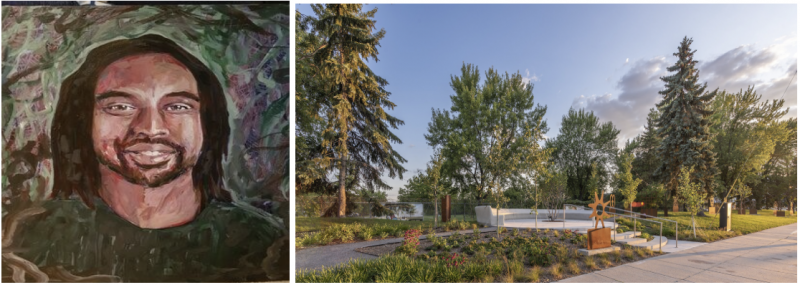
Working with Valerie Castile and the team supporting the Philando Castile Peace Garden, Public Art Saint Paul and the Wakpa Triennial offer an opportunity to consider how stronger “networks of mutuality” can help to prevent police violence against African-American men, as happened when Philando Castile was killed by a policeman in 2016.
The multi-talented duo of Jordan Hamilton and Jayanthi Rajasa, working with other local artists, present an afternoon of artmaking, poetry, song, call to action, rest and healing at the Philando Castile Peace Garden.
Visitors will experience a sound bath session of song and music, can participate in a quilting station, and will hear poetry by local artists in an open mic opportunity. Guests and community members are sure to have a multi-sensory experience, an opportunity to contribute to the space, and will have something to walk away with to remember the day.
This event theme signifies 7 years of commemorating Philando’s life after he was killed. The number 7 correlates to restoration and completion.
If driving, please park on the side streets near the Peace Garden. Metro Transit bus line 61 stops at Larpenteur and Snelling nearby the Peace Garden.
This program is also presented and supported by the Minnesota Humanities Center.
Chris Larson, The Residue of Labor
Location: 425 Wabasha St. N., St Paul, MN 55102
On view Thursdays 12-6 pm & Saturdays 12-4 pm
Project:
Chis Larson's The Residue of Labor is an archival body of work that examines intensive labor through the conduit of an abandoned garment factory in rural Tennessee. As garment labor became predominantly outsourced in the late 90s, work was unceremoniously taken from rural communities and a history of human labor left behind. Through the curation of objects recovered from the factory and objects fabricated in his studio, Larson creates a narrative out of the remains of what was once a booming industrial operation. Individual personhood begins to surface from the details as Larson interrelates the residue of life in the factory.
In the fall of 2018 with an Artist Guggenheim Fellowship, Chris Larson moved his studio from St. Paul, Minnesota to the factory in Tennessee. Larson worked there for two years, collecting, archiving, and acting in performances that contemplate the ways the architecture and its forgotten objects have taken on the imprint of uncelebrated labor. In his new body of work, Larson engages the abstraction of labor in a place of heavy repetition. The exhibition features sculpture, video, drawing, painting, and photography all made from materials recovered from the factory.
Constellation: Video Storytelling
Rice Park & Saint Paul Public Library - George Latimer Central Library
109 W 4th St, St Paul, MN 55102
Dates and Times
9/14 - 8:00 PM-9:00 PM - Preview Night
9/15 - 5:00 PM-9:30 PM
- 5:00 PM-7:30 PM – Family friendly activities and food trucks
- 6:00 PM-7:00 PM - Music from Chris Koza
- 7:00 PM-7:30 PM – Announcements, artists introductions
- 7:30 PM-8:30 PM – Constellation: Video Storytelling - First round of videos
- 8:30 PM-8:40 PM – Intermission
- 8:40 PM-9:40 PM – Constellation: Video Storytelling - Second round of videos
9/15 - 5:00 PM-9:30 PM
- 5:00 PM-7:30 PM – Family friendly activities and food trucks
- 6:00 PM-7:00 PM - Music from Kashimana
- 7:00 PM-7:30 PM – Announcements, artists introductions
- 7:30 PM-8:30 PM – Constellation: Video Storytelling - First round of videos
- 8:30 PM-8:40 PM – Intermission
- 8:40 PM-9:40 PM – Constellation: Video Storytelling - Second round of videos
Artists & Project
Constellation is a cohort of seven artists, Constellation: Video Storytelling, each creating a short video to be presented in a looped series that will be projected onto the downtown Saint Paul Public Library - George Latimer on Rice Park. Videos shall interact with the architecture of the library building, transforming it into new visions for public space and public knowledge. Artists include: Za’nia Coleman; Boo McCaleb; SEE MORE PERSPECTIVE; Witt Siasoco; Miko Simmons; Jonathan Thunder; and Moira Villiard.
Sponsored by:
John S. and James L. Knight Foundation
The National Endowment for the Arts
Northern Lights.MN



1128 Payne Ave. Saint Paul, MN, 55130
Artists & Project
Zoe Cinel, Cameron Downey & Jocelyn Suzuka Figueroa
Second Shift Resident Exhibition
Second Shift Studio’s Resident Group Exhibition is part of the Wakpa Triennial Arts Festival and features the work of the studio’s current resident artists, Cameron Patricia Downey, Jocelyn Suzuka Figueroa, Stephanie Lindquist, and Zoe Cinel. This is an exhibition of the work of the four studio artists in residency at Second Shift Studio, where they have spent the past year working, making, and thinking alongside each other.
2500 County Rd E, St Anthony, MN 55421
Artists & Project
Douglas Kearney, Junauda Petrus, Moheb Soliman, Mary Austin Speaker, Dr. Gwen Westerman & Kevin Yang
Silverwood’s Poetry Trail is a self-guided audio tour featuring work by local and regional poets and writers. Six stops are located next to a bench along a paved trail that loops around the park moving from forest to lake to prairie. The 2023 - 24 poets were curated by Su Hwang.
Events
All Silverwood OnStage events are free of charge and open to the public. All ages are welcome. To fully enjoy the performances, audience-goers may wish to bring lawn chairs, blankets, a picnic meal, and friends or family.
Unless otherwise noted, performances occur outdoors in the amphitheater from 6:30-8PM. In the event of inclement weather, performances may be moved inside the Visitor Center Great Hall when feasible. For the most up-to-date information, you may call 763-694-7707 or monitor Silverwood Park’s social media channels.
Concerts are every Wednesday, 6:30–8 PM, in the outdoor amphitheater at Silverwood unless otherwise noted.
- August 2: Nunnabove (Positive Alternative Pop)
- Live poetry reading by Erin Sharkey at 6 PM
- August 9: Brotherhood of Birds (Bluegrass)
- Live poetry reading by Mary Austin Speaker at 6 PM
- August 16: Yalla Drum! Ensemble (Traditional Arabic Percussion)
- *Live poetry reading by Moheb Soliman at 6 PM
Upper Landing Park
266 Spring Street, St Paul, MN 55102
Artists & Project
Aaron Dysart, Commune
Aaron Dysart's Commune, is installed at Upper Landing Park along the Mississippi near downtown Saint Paul. Appearing in two horizontal sections--one part the tree roots and stump, the other the trunk and branches—there will be a 50 ft. gap between the two sections. A concave form called an acoustic mirror will cap each end of the trunk and offer magical experiences for conversations. Audience members will be able to communicate across this distance without raising their voices.
How to Interact with Commune
Commune is a full tree split into two sections--one part the tree roots and stump, the other the trunk and branches. It is presented horizontally on steel support structure with a 40 ft. gap between the two tree sections. From the cut portion of the tree, the form spreads out, terminating in a concave dish, called an “acoustic mirror.” This feature allows audience members to magically communicate from the past of the roots to the future of the branches without raising their voices.
To communicate across the gap, speak (and listen) about fourteen inches away from the raised dot in the middle of the dish, which is the focal point of the mirror. It helps to speak into the dish and listen with an ear toward the dish. Just like all forms of communication, it takes a little work to find the sweet spot.
Wakan Tipi Awanyankapi
Bruce Vento Nature Sanctuary, Wakan Tipi Awanyankapi Construction Site, 4th St E, St Paul, MN 55106
Artist: Bobby Wilson
Project: The Procession of St. Paul
The Procession of St. Paul is a quadriptych (4 panels) depicting close up scenes of life around public transit in St. Paul. Each location offers moments of anthropomorphic animal interactions using socioeconomically-charged spaces as a backdrop: at a bus stop at Payne & Case on the Eastside, outside the Ramsey County courthouse, the Super America gas station on East 7th, and the UnBank on University and Lexington. The animals that gather are representative of diverse cultures in St. Paul. They are beginning to gather, led by a Dakota-animal, to make their way to Wakan Tipi.
This installation also serves as the beginning stages of gathering community feedback in order to create a similarly themed mural by Bobby Wilson on a retaining wall on St. Paul’s East Side.
This prototype mural is installed in the Bruce Vento Nature Sanctuary in St. Paul at a temporary outdoor classroom space, where Wakan Tipi Awanyankapi, a Native-led organization, holds art demonstrations, cultural activities, and gather for restoration events until its new Center building is completed.
Location: Wakan Tipi Awanyankapi/Bruce Vento Nature Sanctuary- near outdoor classroom
Walker Art Center
725 Vineland Pl, Minneapolis, MN 55403
Artists & Project
All My Relations Native Writers Group • Green Roof Poetry on the Walker Hillside
Jane Ramseyer Miller & One Voice Mixed Chorus • ReMembering: Singing Waters
Watergate Marina
2500 Crosby Farm Rd, St Paul, MN 55116
Artists & Project
Seitu Jones • artARK
Events
- artARK public viewing July 20 at 6 PM, Watergate Marina
- artARK public viewing July 27 11 AM-1 PM, Watergate Marina
Western Sculpture Park
387 Marion St, St Paul, MN 55103
Artists & Project
Gita Ghei • Illuminating Solar Peace Pole for Western Sculpture Park
Artists & Project
Lead Artist: Pramila Vasudevan
Yasmin Abdi, Sayge Carroll, Shalini Gupta, Sequoia Hauck, Masanari Kawahara, José Luis, Cassandra Meyer, Sam Aros Mitchell, Mankwe Ndosi, Margaret Ogas, Alys Ayumi Ogura, Valerie Oliveiro, Dameun Strange, Jasmine Kar Tang, Alejandra (Tobar Alatriz), Claire Wilcox, Hui Wilcox, Lynn Wilcox, Pramila Vasudevan, Kira Vega, and Judith Shuǐ Xiān
Prairie|Concrete is an outdoor embodied movement project by lead artist, Pramila Vasudevan and the Aniccha Arts collaborative, commissioned by Public Art St. Paul (PASP). This project will bring visibility to plant cycles and growing practices through embodied listening and movement sessions with communities in St. Paul, Minnesota. The commission will unfold across 3 City of St. Paul Parks – Frogtown Farm, Hidden Falls Regional Park and Western Sculpture Park – through one rehearsal, 3 movement workshops, and one event at each site as part of the first Wakpa Triennial Arts Festival.
Locations of Prairie/Concrete Event Gatherings:
Western Sculpture Park, Sunday, August 6, 2 – 5 PM
Hidden Falls Park, Sunday, August 13, 2 – 5 PM
Frogtown Farm, Sunday, September 10, 2 – 5 PM
Prairie | Concrete is supported by the Joyce Foundation, MRAC, and Forecast Public Art.
333 E River Pkwy, Minneapolis, MN 55455
Rachel Breen, Towards a Common Future: Banners for Solidarity
Towards a Common Future: Banners for Solidarity // Banners represent a unique combination of the importance of the hand in the making process, the way textiles contain meaning and their history as symbols of protest and resistance. I made these banners to signify the importance of solidarity with workers around the world who make our clothes. To me, solidarity means to empathize and respect the many struggles for social justice. Garment workers around the world grow and weave fabric, cut and sew this fabric into garments, handling these materials so that we have clothes to wear. My interest in labor rights stems from histories of Jewish activism in the garment industry and my own family history as immigrants and activists.
Artists & Project: Hmong Girls' Write & Design Circle
Events:
Exhibition Period: September 8th - Oct 6th 2023
Opening Reception: Friday, September 8th, 2023 @ 6PM
Join us to celebrate the growth and accomplishments of the girls from the Hmong Girls' Circle! Stop by to:
SEA Us Write & Design is an initiative to create inclusive and culturally relevant spaces for Southeast Asian youth to grow as writers and artists. The Hmong Girls' Circle is the first youth group of SEA Us Write & Design. It is a safe and supportive space to build sisterhood and develop creative writing and artistic skills through a series of eight creative workshops.
Through this program, the girls will grow as artists and entrepreneurs. At the end of the program, they will:
- Curate an exhibition space at XIA's gallery to showcase all of their creative work
- Develop their own creative products to sell at XIA's gift shop
- Together, design a cover for the magazine
- Write beautiful pieces to showcase their creative writing skills in the magazine
Opening Reception: Friday, September 8th, 2023 @6PM
Join us on September 8 to celebrate the growth and accomplishments of the girls from the Hmong Girls' Circle! Stop by to:
- Meet and get to know the girls
- View the Hmong Girls' Circle exhibit
- Purchase the beautiful products made by the girls
- Purchase the Hmong Girls' Circle Magazine
Resources
Wakpa Project Team
Triennial Organization + Support
Project Director and Co-curator: Colleen Sheehy, Ph.D., Executive Director, Public Art Saint Paul
Local Curatorial Advisory Team: Tia-Simone Gardner, Pao Houa Her, and Maria Cristina Tavera.
Local Advisors include PASP Staff and Board, Herman Milligan, Jennifer Case Phelps, Jim Rustad; and Organizational Partners: MN Museum of American Art; Landmark Center, Saint Paul Downtown Alliance, Wakan Tipi Awanyankapi, Center for Hmong Art and Talent, Frogtown Farm, Asian Economic Development Association, All My Relations Gallery, Pangea World Theater, Hennepin Theatre Trust, Dreamsong Gallery, MN Humanities Center, and others.
National Advisors: Elizabeth Armstrong, independent curator, Palm Springs; Tom Fisher, Minnesota Design Center, U of MN; Kendal Henry, Director of Per Center for Art, Department of Cultural Affairs, New York City; Marisa Lerer, faculty, Manhattan College; Mary Jane Jacob, faculty, School of the Art Institute of Chicago; Hesse McGraw, Executive Director, Contemporary Art Museum-Houston; Shelly Willis, freelance public art curator, Sacramento
Public Art Saint Paul Board of Directors: Christine Dennis, Chair, Nancy Apfelbacher, Lisa Arnold, Secretary, Bob Bierscheid, Nathan Campeau, Nimo Farah, Dolly Ludden, Luke Odegaard, Treasurer, Roberto Sande Carmona, Anna Schlesinger, Chair Elect, Dawn Selle, AIA, Kay A. Thomas, Ph.D., Yamy Vang, Katie Wertheim Iacarella
Communications and Event Planning Partner: Tunheim, an award-winning communications firm, led by CEO and thought leader Kathy Tunheim
Graphic Identity: Uno Branding, Minneapolis
Graphic Design: Sieng Lee, Saint Paul
Website Design: David Erickson & Maddie Greene, Tunheim
Public Art Saint Paul
For 35 years, Public Art Saint Paul (PASP) has placed artists in leading roles to shape public spaces, improve city systems, and deepen civic engagement. As a national leader in public art practice, PASP works with artists, neighbors, city staff and officials, organizations, and businesses to envision and build 21st-century cities that are just, sustainable, and beautiful.
PASP is recognized for leading public art in new directions, taking cues from artists, communities, and City collaborators. Its accomplishments include the City Artist Program with artists collaborating with City staff to create a vibrant and responsive City, giving birth to the beloved Sidewalk Poetry Program, Pop Up Meeting, Urban Flower Field, and city-wide small public art along city streets.
PASP advocacy for the City of Saint Paul’s Public Art Ordinance led to its passage in 2009, generating more than $2 million in public art commissions throughout Saint Paul. Since 1998, when PASP partnered with the City of Saint Paul’s Department of Parks and Recreation to transform Western Park into Western Sculpture Park, the organization has continued to create sculpture and host ongoing programs in this city park, located in the diverse neighborhoods of Frogtown and Rondo.
PASP supports artists exploring the innovative edges of public art practice in its “Next Public Art,” in such programs as the City Arts Collaboratory, Distinguished Public Artist Annual Program, and The Art of Food in Frogtown and Rondo. The organization has mounted major events including M sN Rocks: An International Stone Carving Symposium (2006), Wing Young Huie’s University Avenue Project (2010), Seitu Jones’s CREATE: The Community Meal (2014), Bee Real Bee Everywhere (Christine Baeumler, Amanda Lovelee, Julie Benda, 2016 – 2019), and Aardvark in the Park (2019).
Media Inquiries
Media Contact:
Bess Ellenson
bellenson@tunheim.com
Media Asset Downloads
- Press Release [DOC]
- All Documents [ZIP]
- Wakpa Logos [ZIP]
Critical Conversations
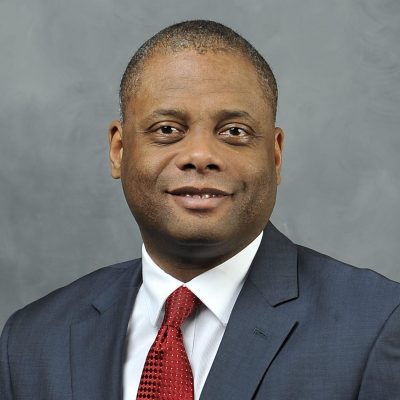
Kevin Lindsay
Executive Director
of the Minnesota Humanities Center
Greetings to all who participate in the first Wakpa Triennial from all of us at the Minnesota Humanities Center, a state-wide nonprofit organization dedicated to bringing people together for transformational learning and to spark change. We’re pleased to be a strong partner with Public Art Saint Paul in presenting this major new event that helps us to explore our places, people, cultures, and ideas and to envision the future we want to build together. MHC is partnering to host a series of “Critical Conversation” events to explore more deeply the Triennial’s theme of “Network of Mutuality.” Those words by Dr. King ring true to our vision of how the humanities can help to create a just society that is connected, curious, and compassionate.
We look forward to welcoming you to several programs at the Minnesota Humanities Center at our beautiful historic building on Saint Paul’s East Side. Come visit us, share your ideas in our programs, share a meal with old and new friends, enlarge your understanding of yourself and others, our histories and cultures, and of how change takes root in ourselves and society. And attend other programs held in community spaces in Saint Paul and Minneapolis. Wherever you connect, we hope that the Wakpa Triennial will inspire you to play a role in envisioning a future of connectedness, equity, and abundance for all as we strengthen our networks of mutuality.
Sincerely,
Kevin Lindsey
Chief Executive Officer
Minnesota Humanities Center
Presented by the Minnesota Humanities Center and Public Art Saint Paul, with partners Reconciliation Lunch, Pilgrim Lutheran Church, Pangea World Theatre, and Longfellow Rising
Critical Conversations: How do we recognize and build our “networks of mutuality?” are a series of events to gather public audiences to connect in thoughtful reflection and deep engagement with probing questions such as, How are we related? How do we overcome divisions? How can art help us to consider our mutuality with each other so that everyone thrives? Who is included in our networks of mutuality? How can art help us to envision new futures. Join one conversation or each in the series. Each event offers a slightly different focus with different facilitators and activities and takes place in different locations.
All programs are free of charge but require advance registration.
Events
Upcoming Events
Organizational Partners
Triennial Supporters
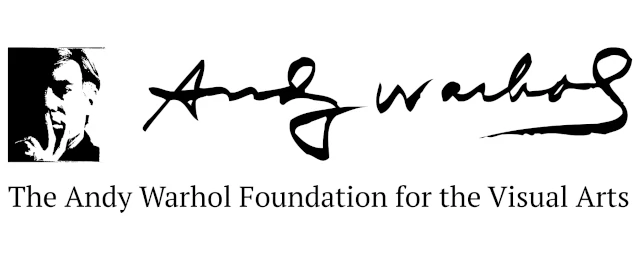
Andy Warhol Foundation for the Visual Arts
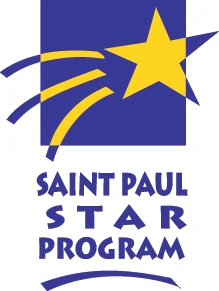
Saint Paul Star Program

The Joyce Foundation
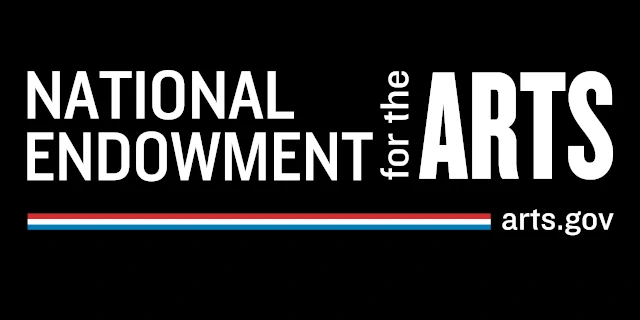
National Endowment for the Arts

Saint Paul and Minnesota Foundation

Knight Foundation
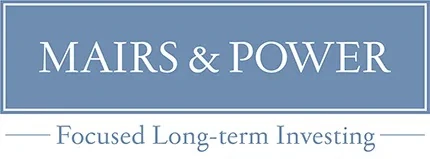
Mairs & Power

Capitol Region Water District
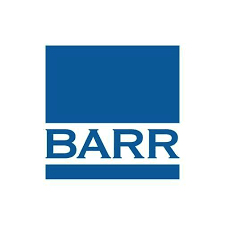
Barr
Wakpa Triennial Patrons and Advocates
Founding Patrons
- Nancy and Steve Apfelbacher
- Lisa Arnold and Hamlin Metzger
- John and Ruth Huss
- Kay Thomas and Jim Rustad
Premier Triennial Advocates
- Louisa Castner
- Catharine Reid
Superlative Triennial Advocates
- Judith Ragir and Charles Murphy
- Nichole Fairbanks
Outstanding Triennial Advocateds
- Steve Dietz & Janet Malotky
- Douglas Lee & Carol Ogren
- William & Donna Mahlum
- Bernie Bullert
- Sarah Peters
- Greg & Maureen Grazzini
- Catherine Born
- Lucy Thompson
- John & Margy Ligon
- Susan Rotilie
- Anonymous Donors
